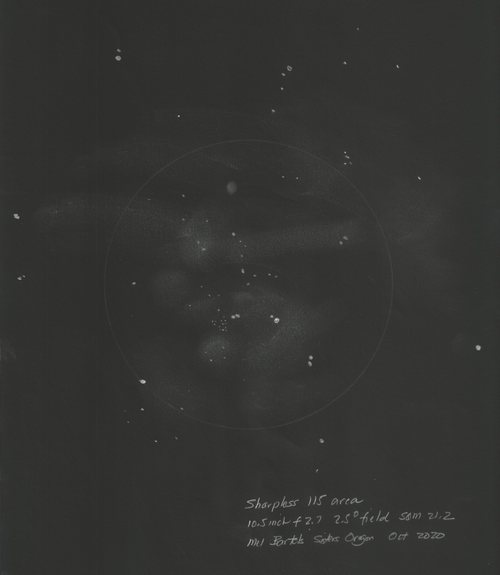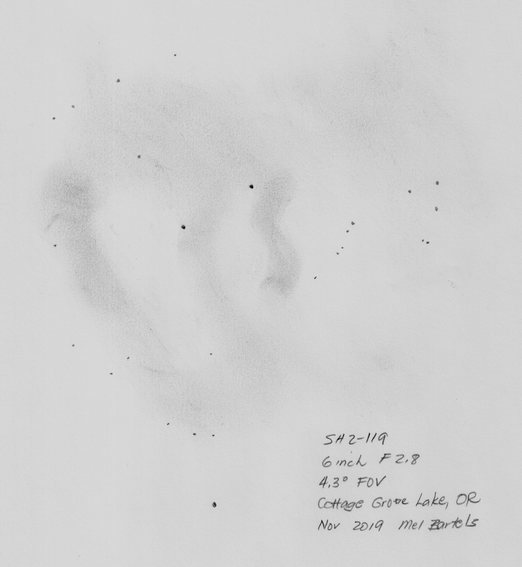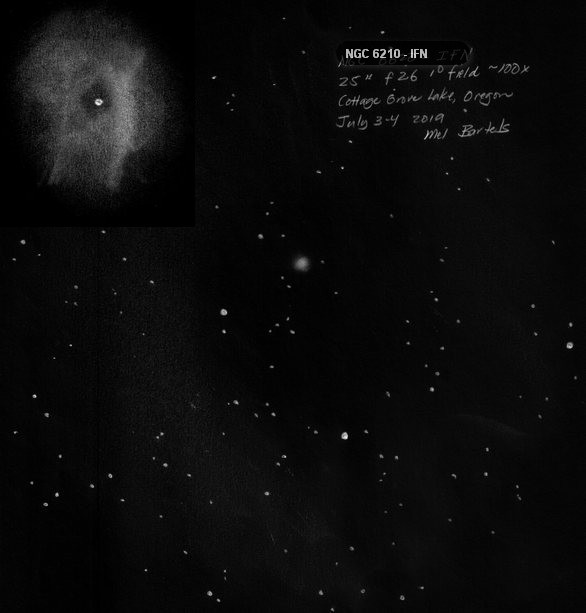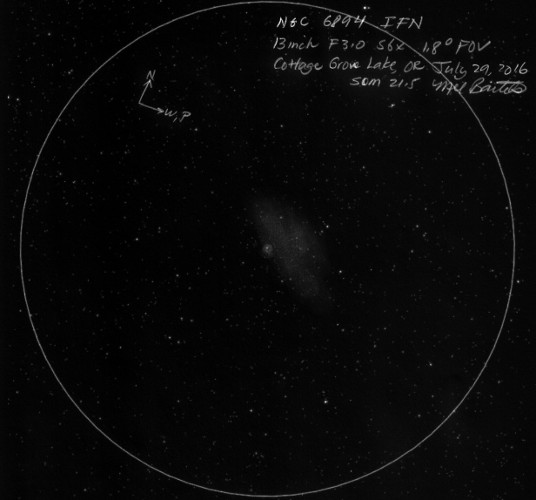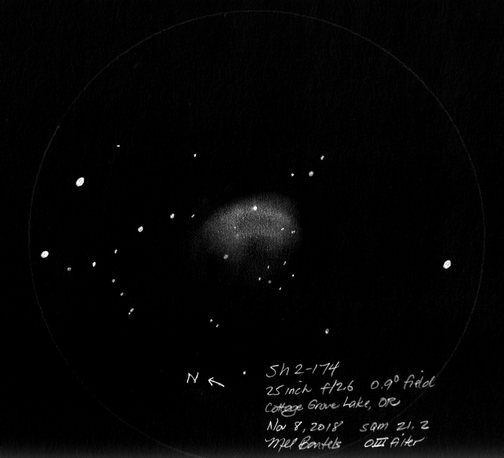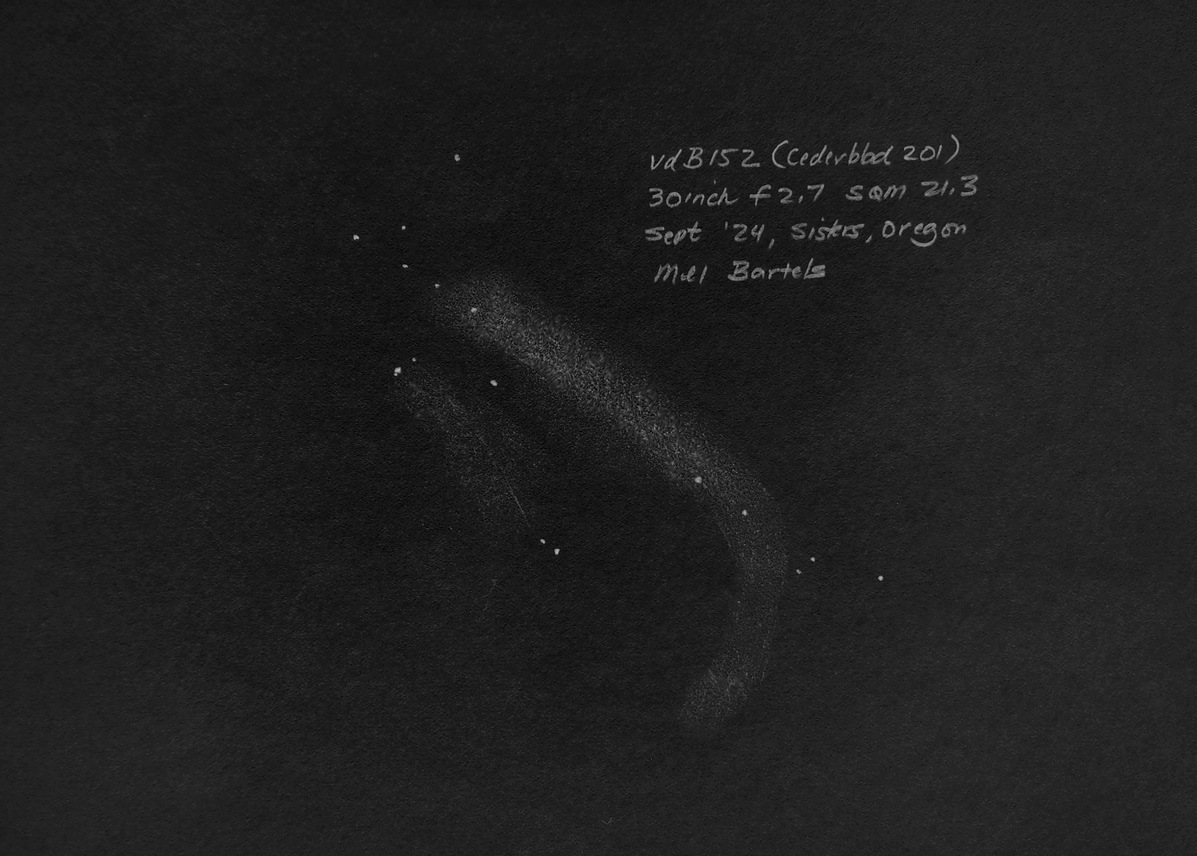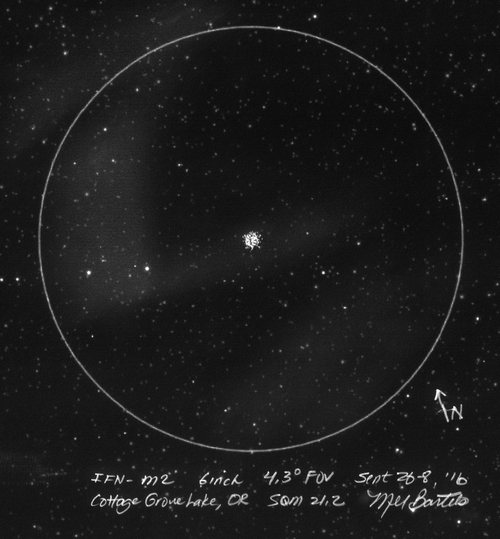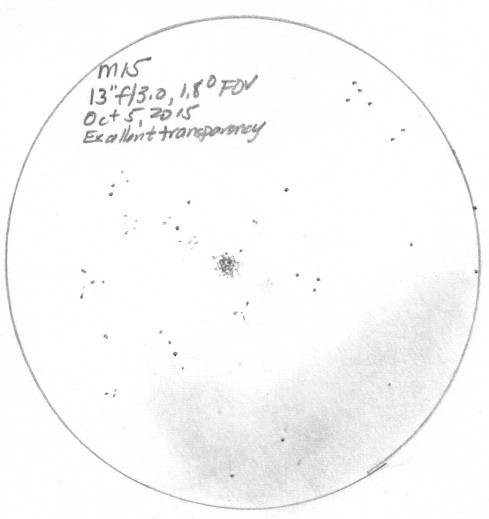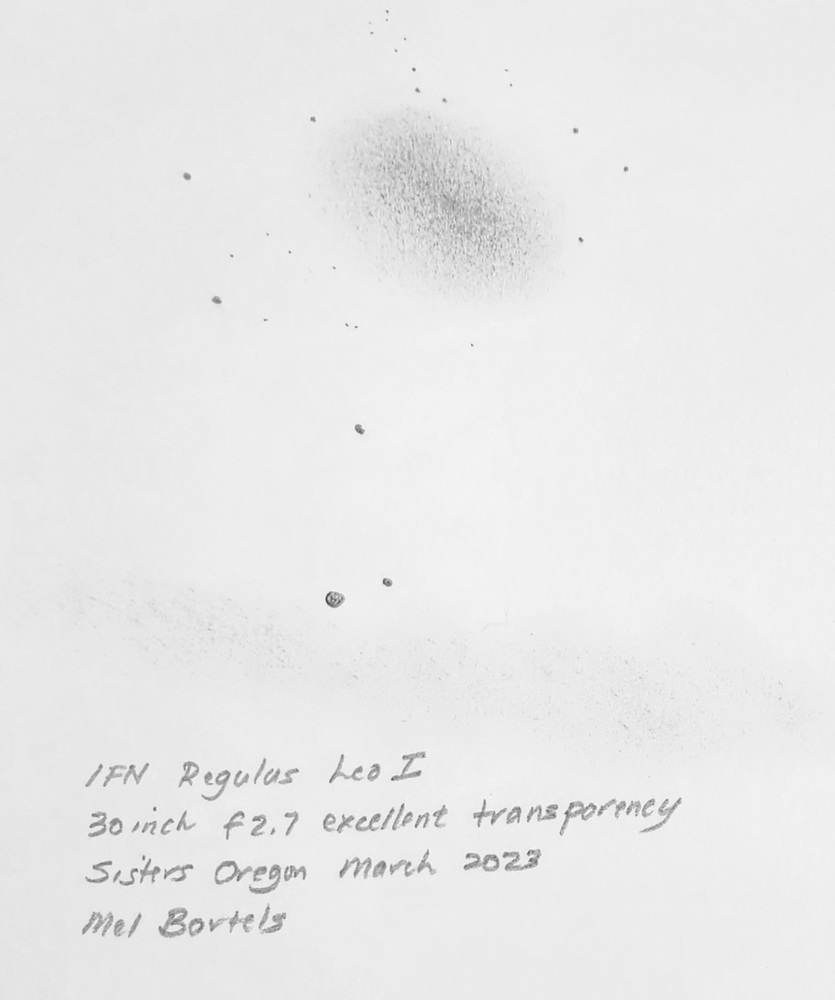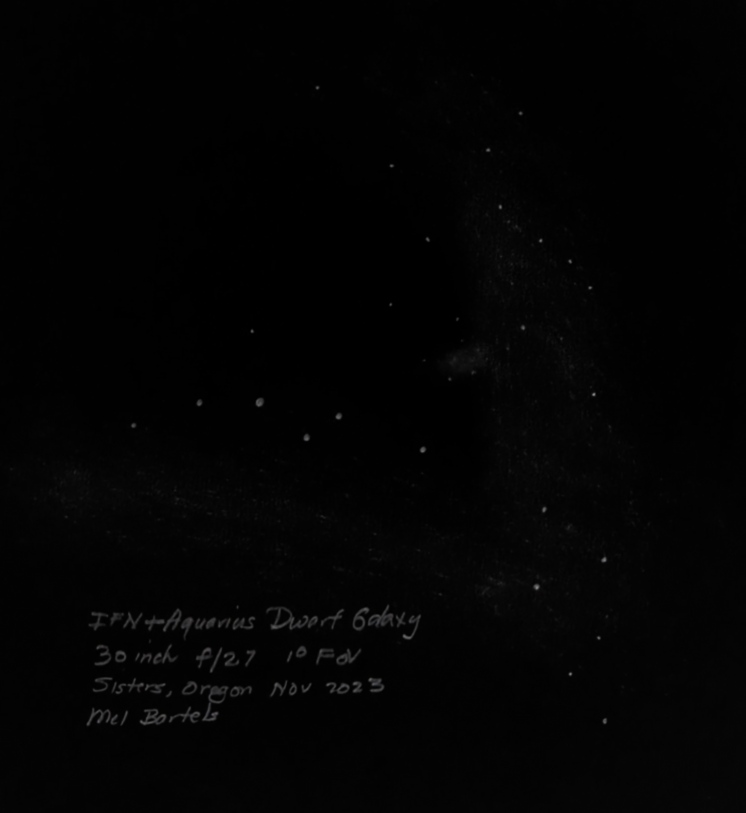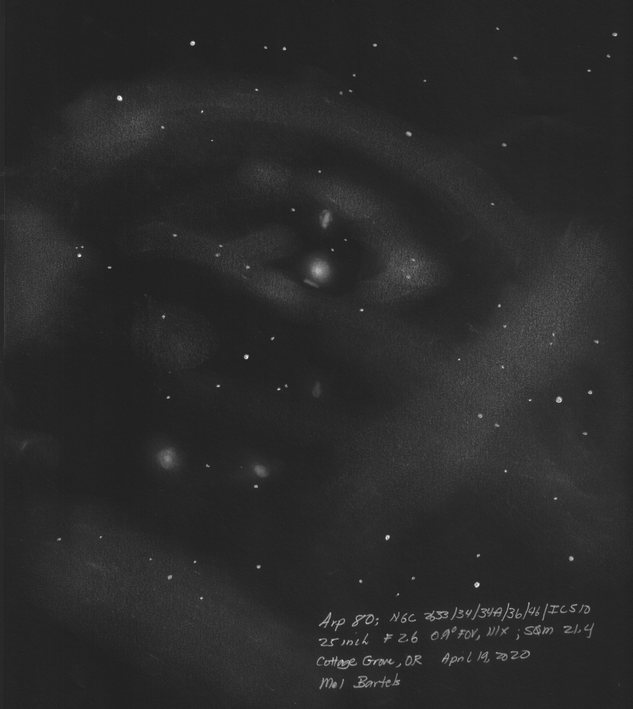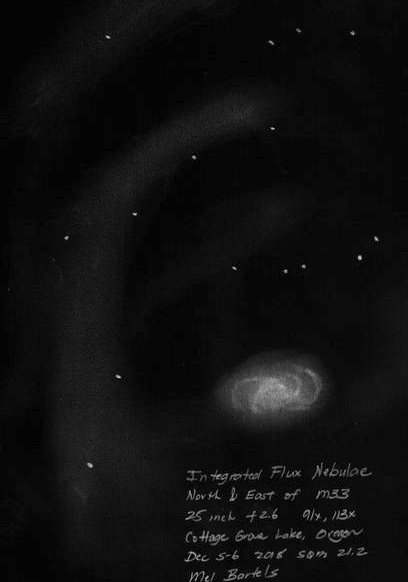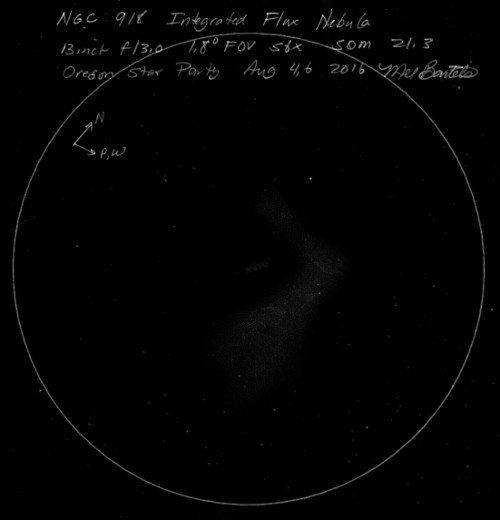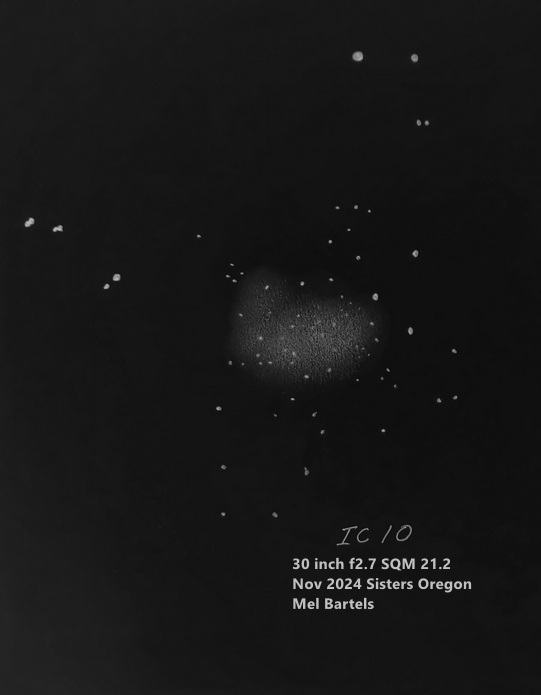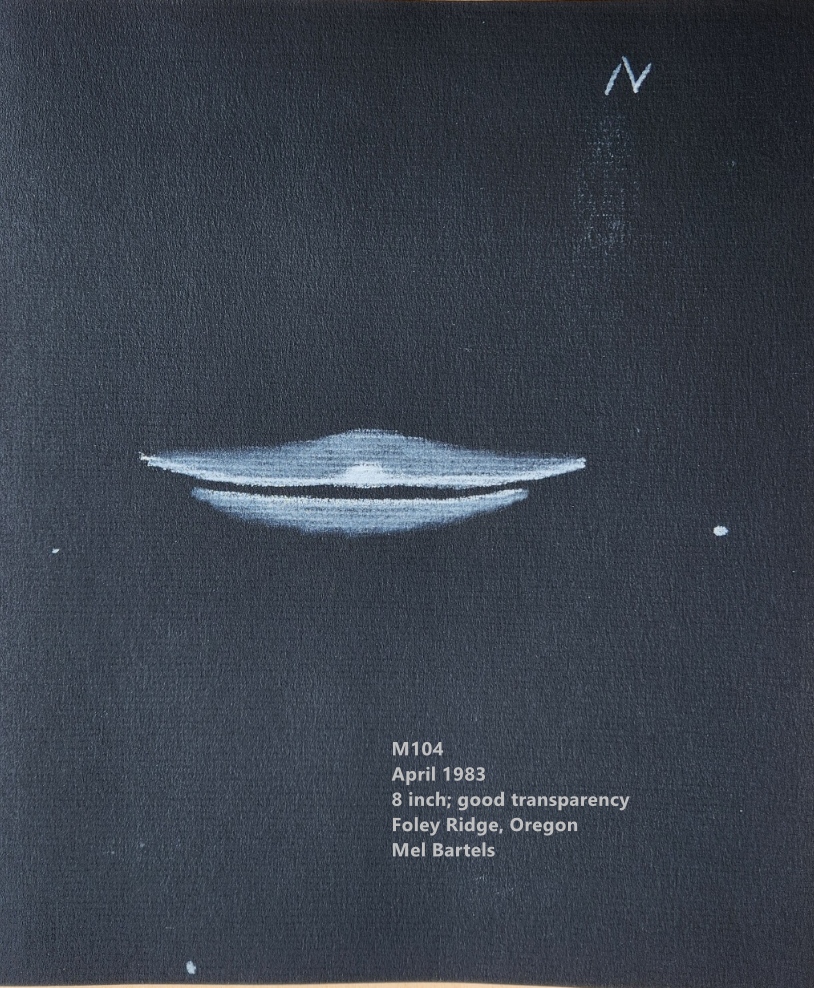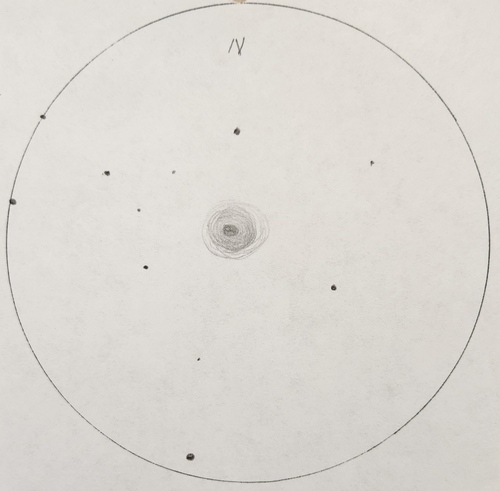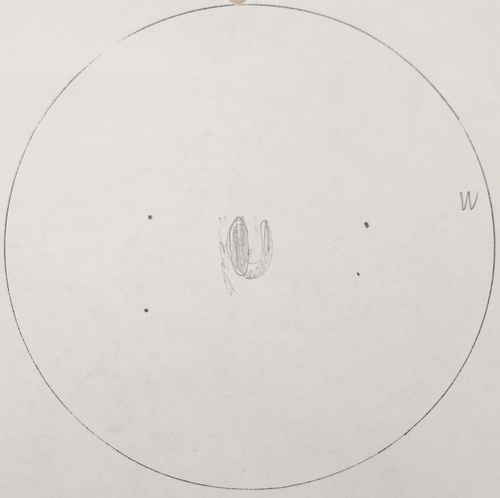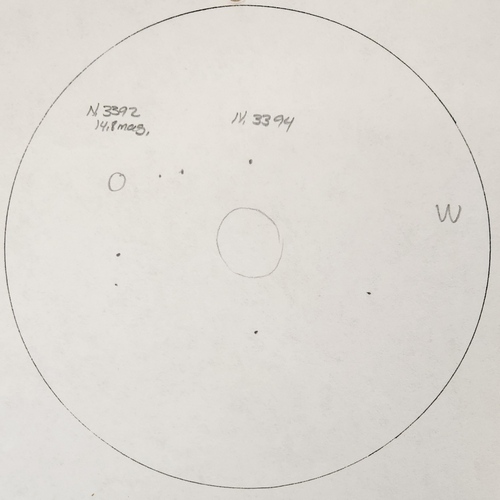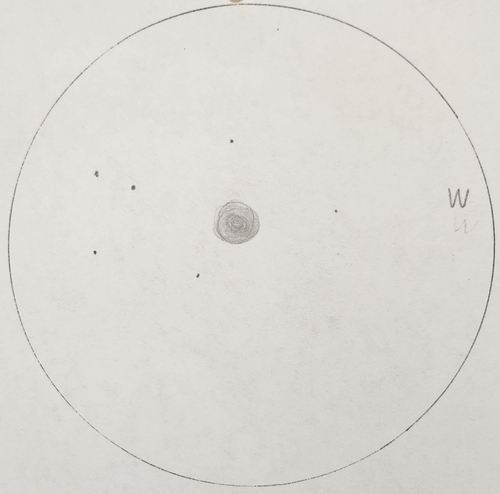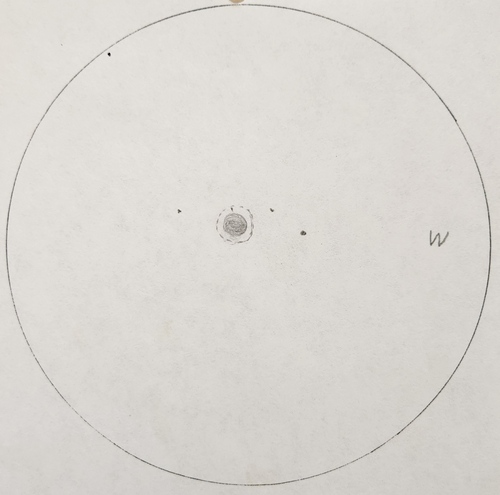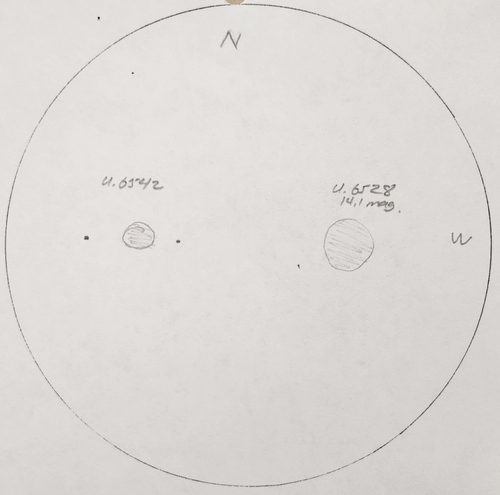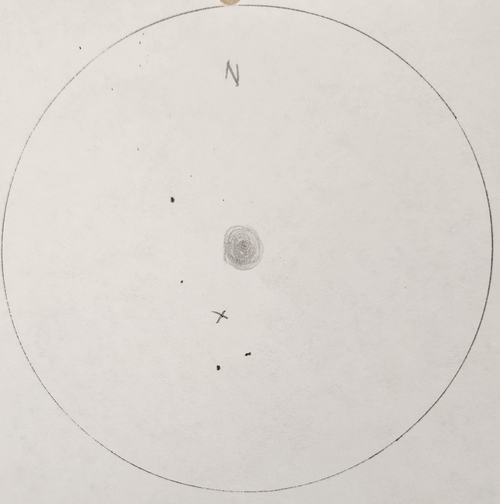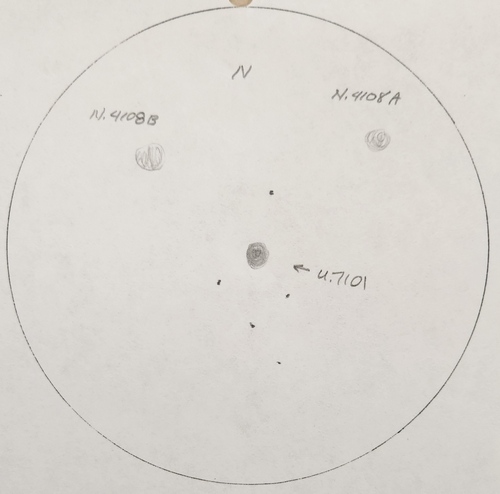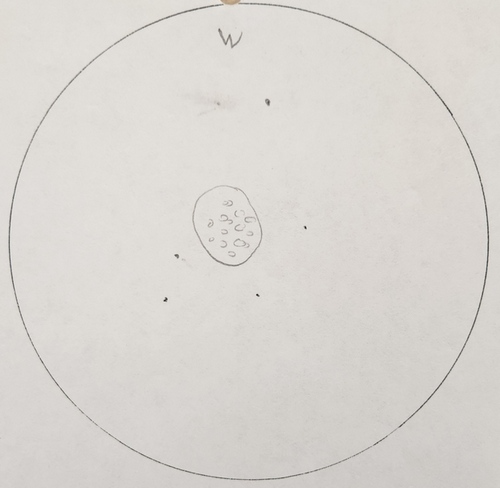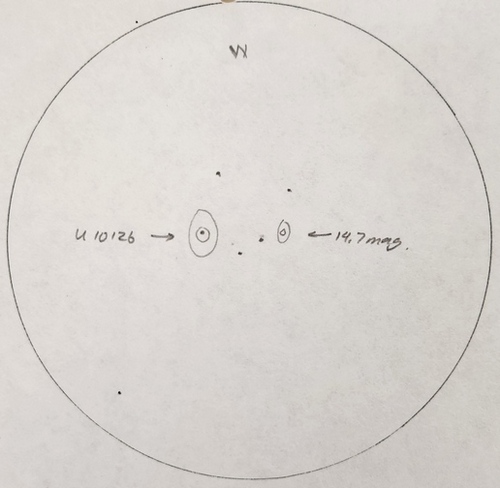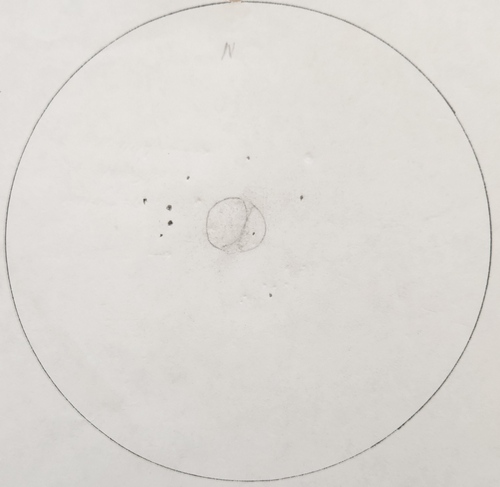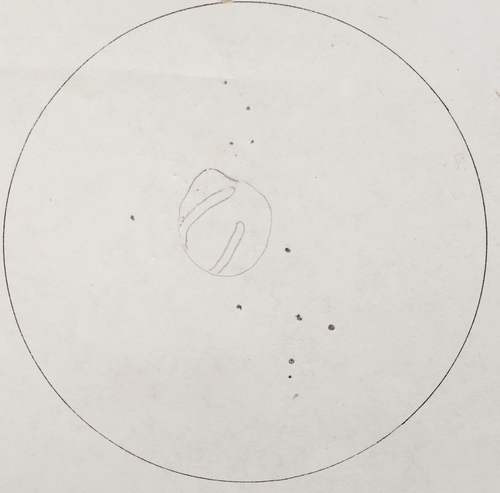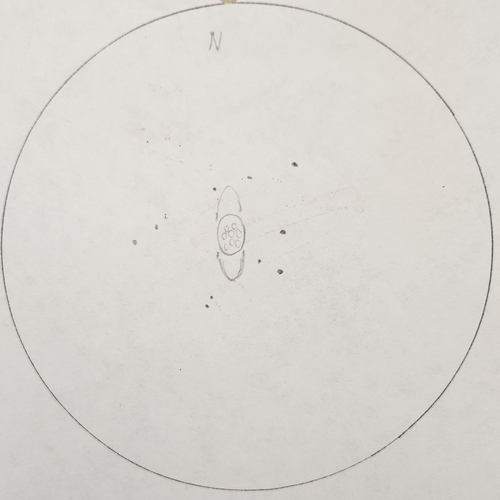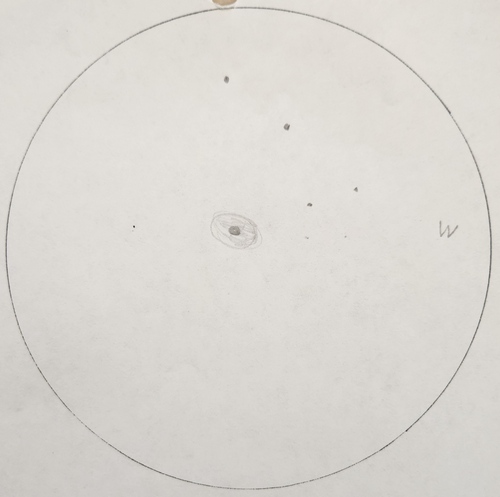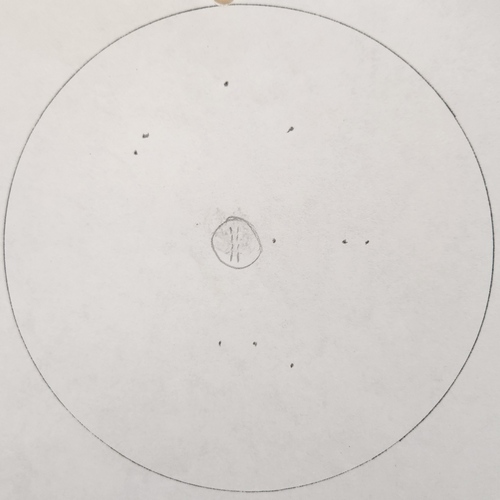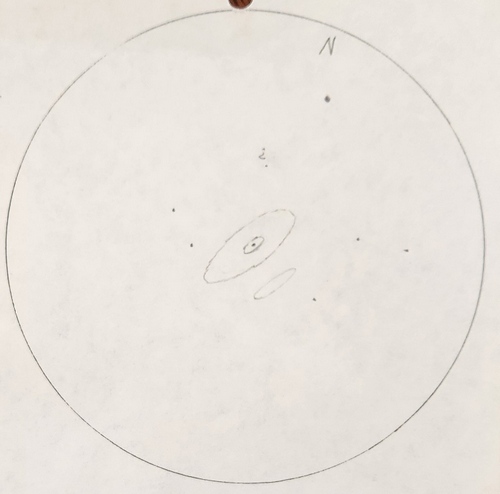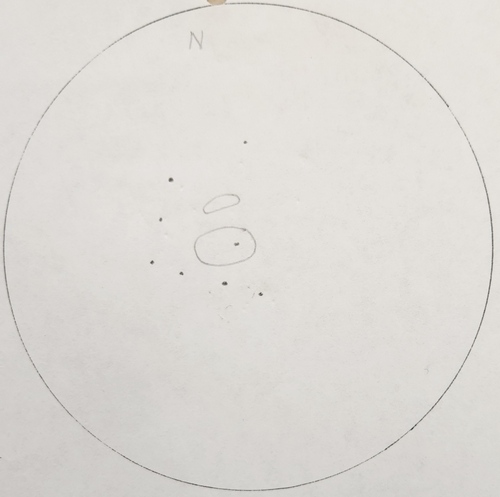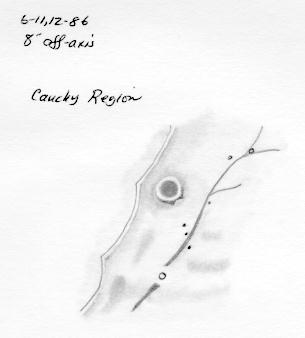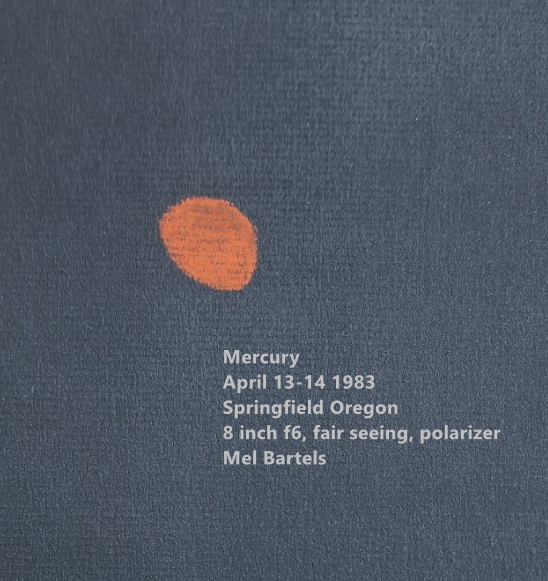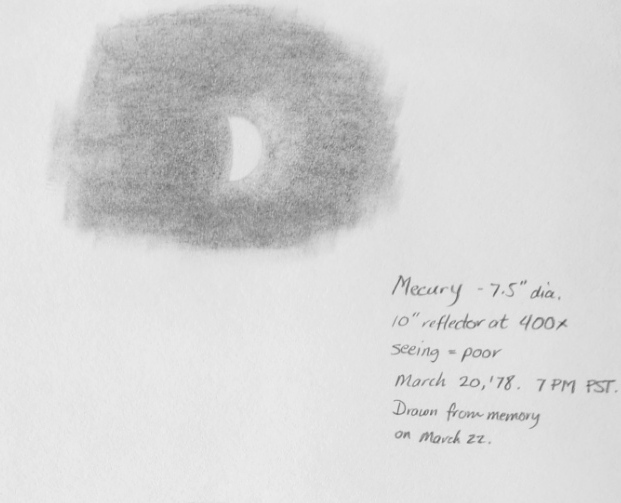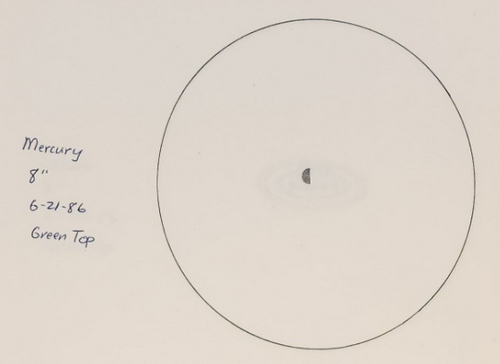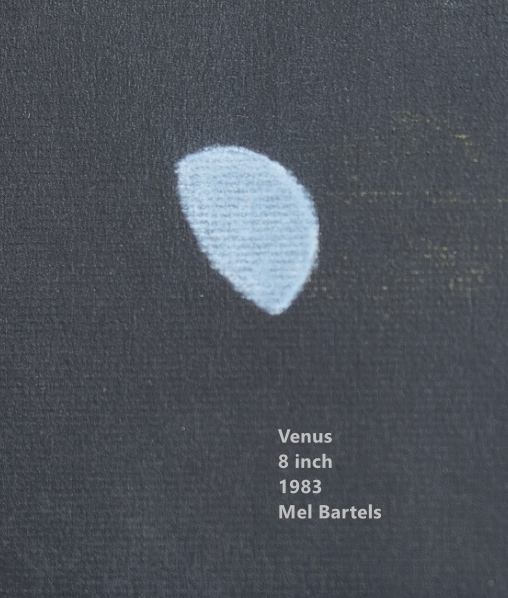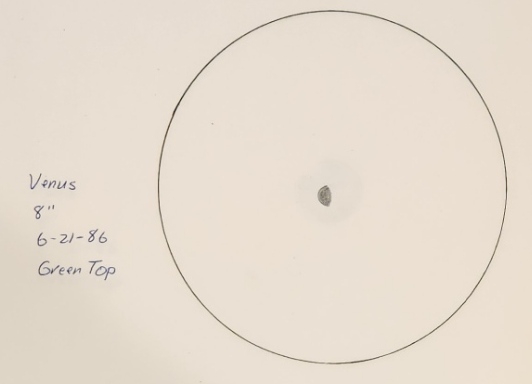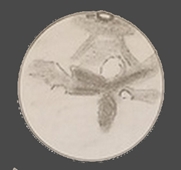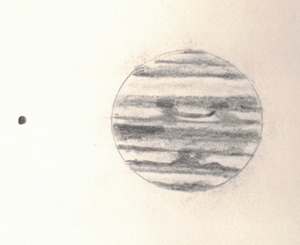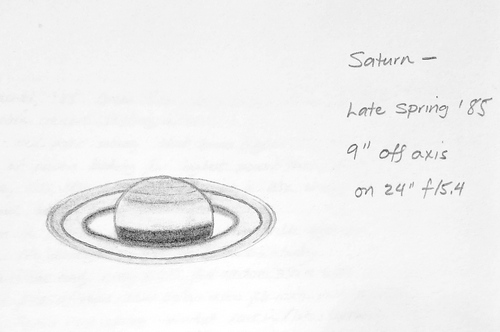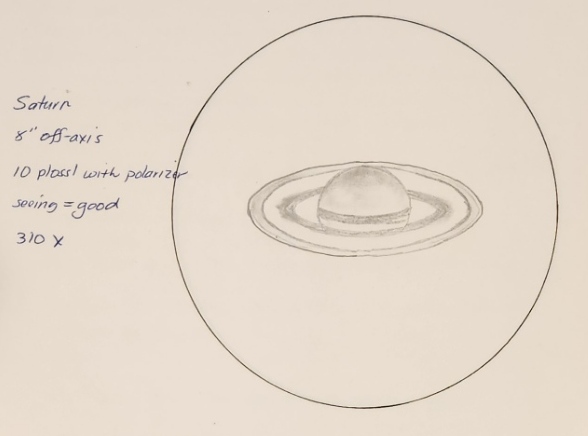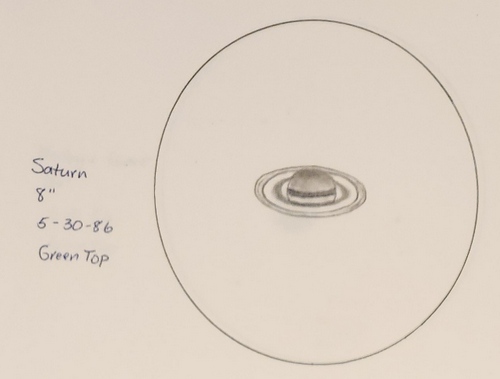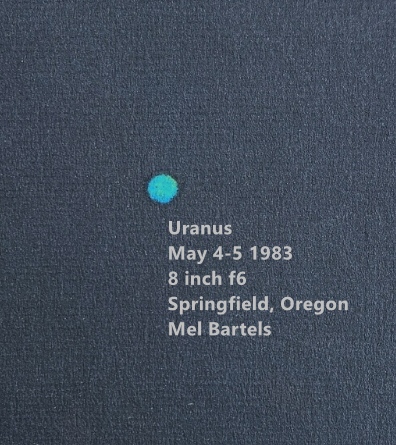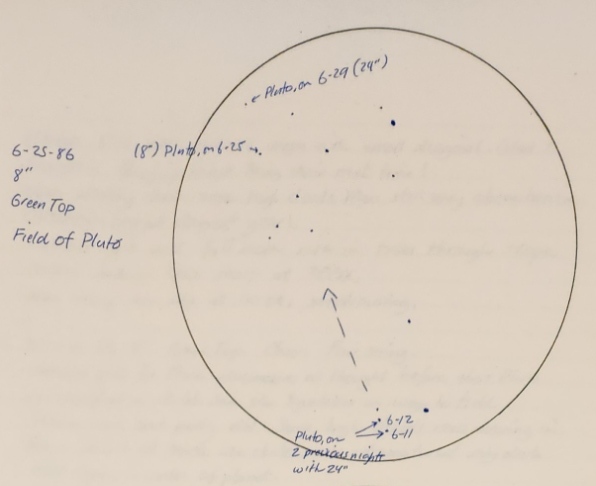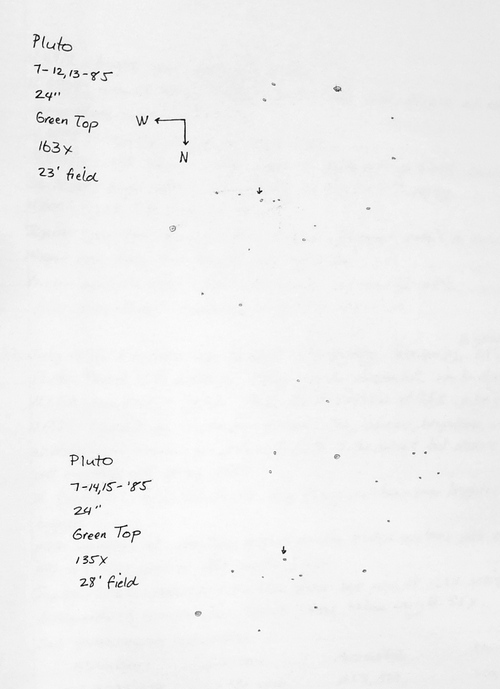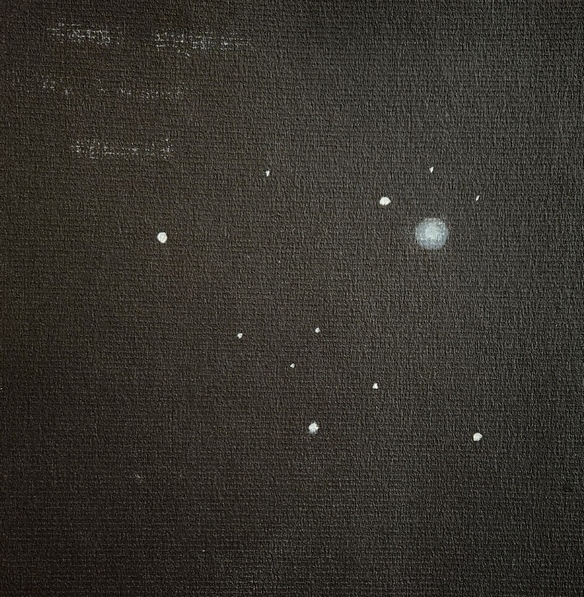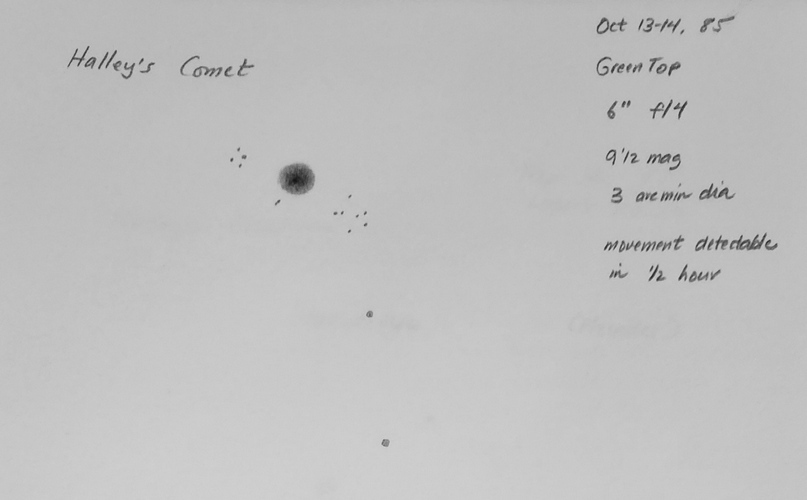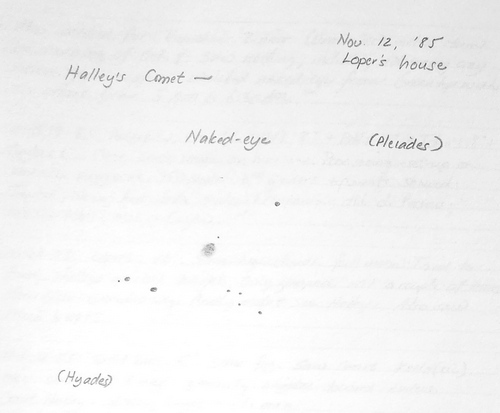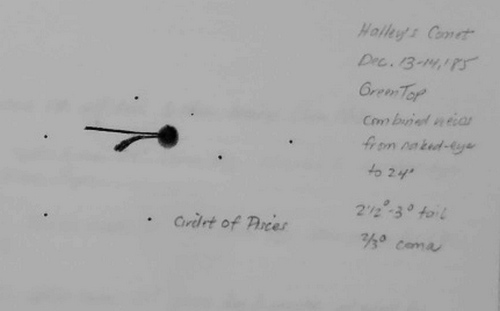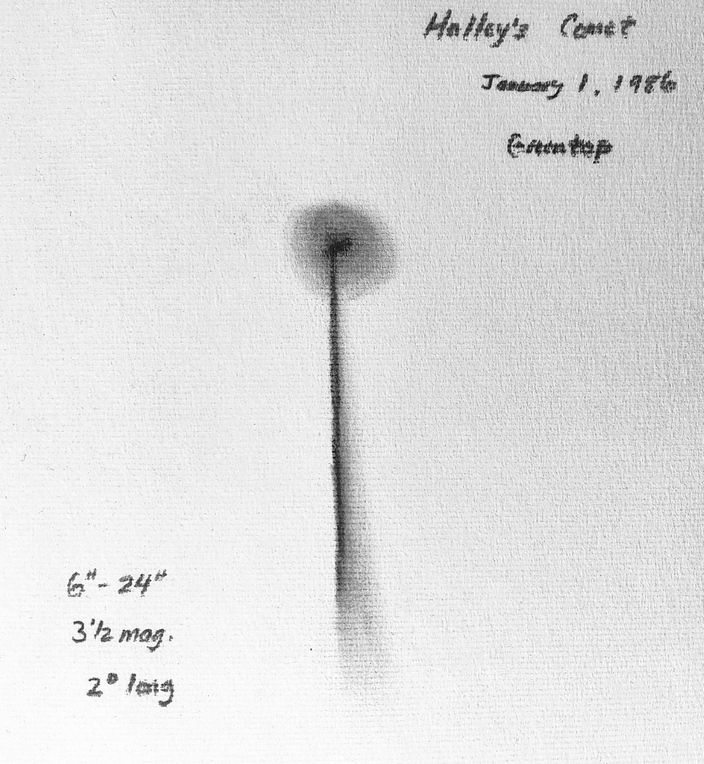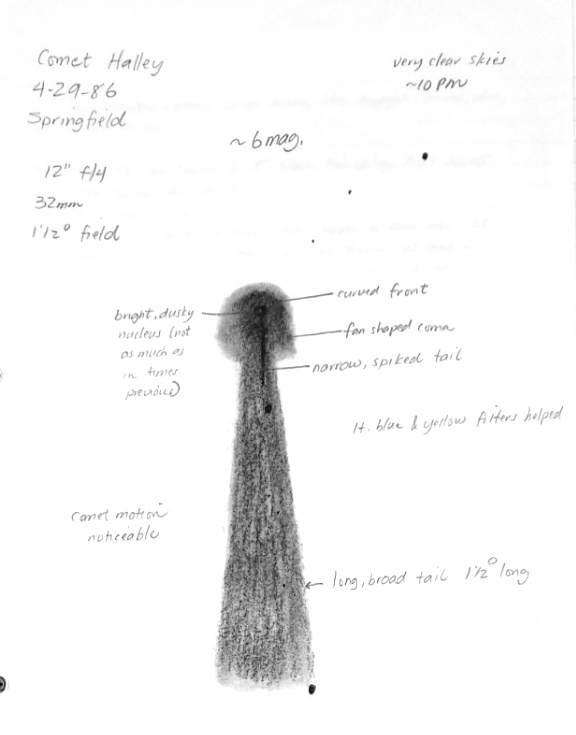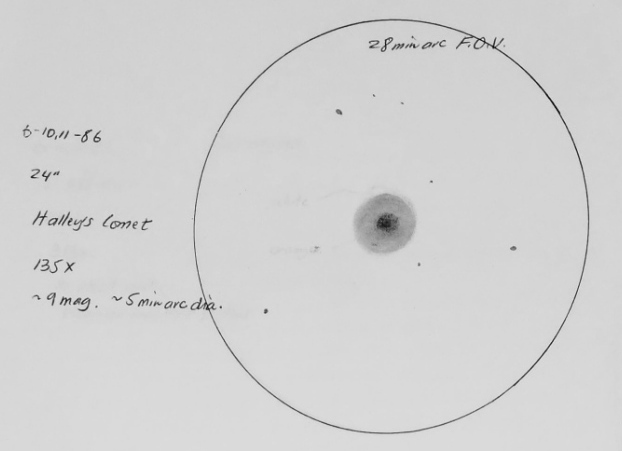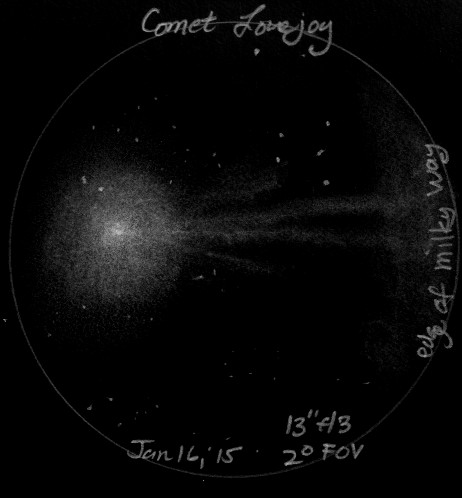A striking view of the Antenna Galaxies and a nearby galaxy that masquerades as a near lookalike phantom, visible in the 30 inch f2.7 wide angle telescope with a little nudging back and forth.
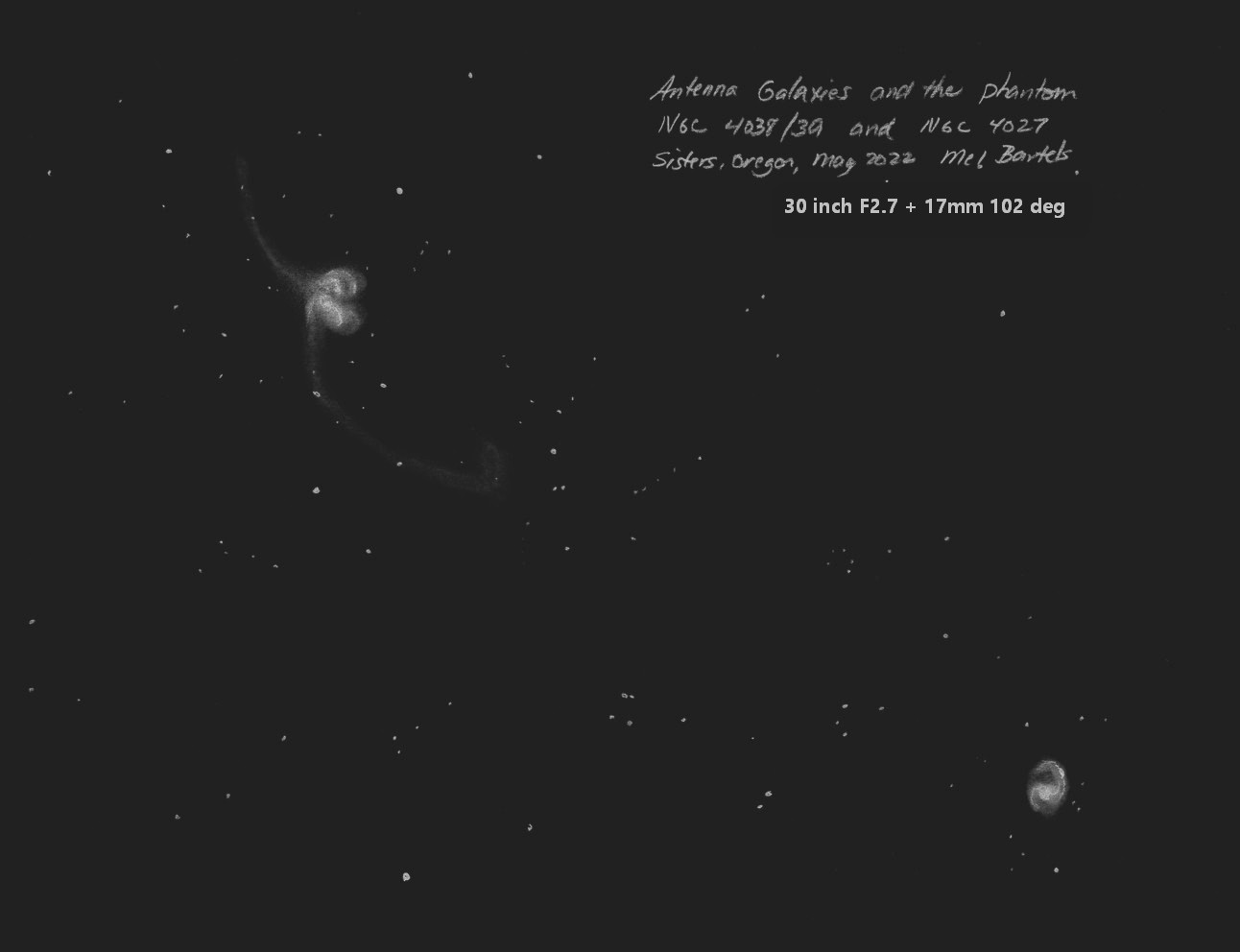

Arp 81 with tidal stream, 25 inch f2.6 at high power.
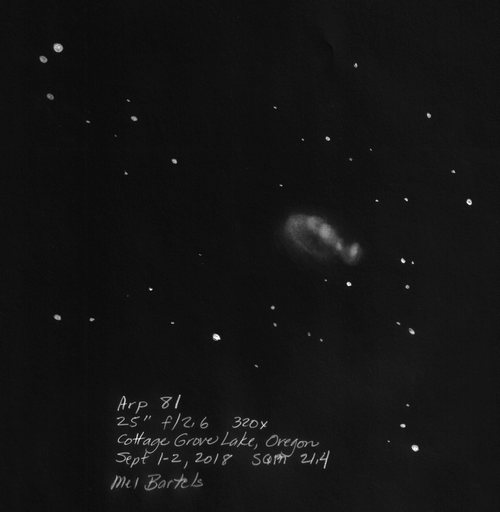

Arp 102 with tidal stream and IFN using my 30 inch f2.7.
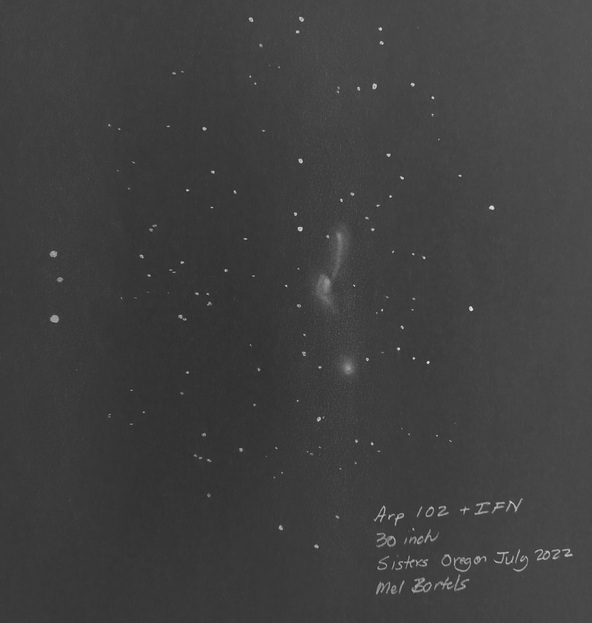

Arp 120, part of the Markarian Galaxy Chain, with tidal stream using my 30 inch f2.7

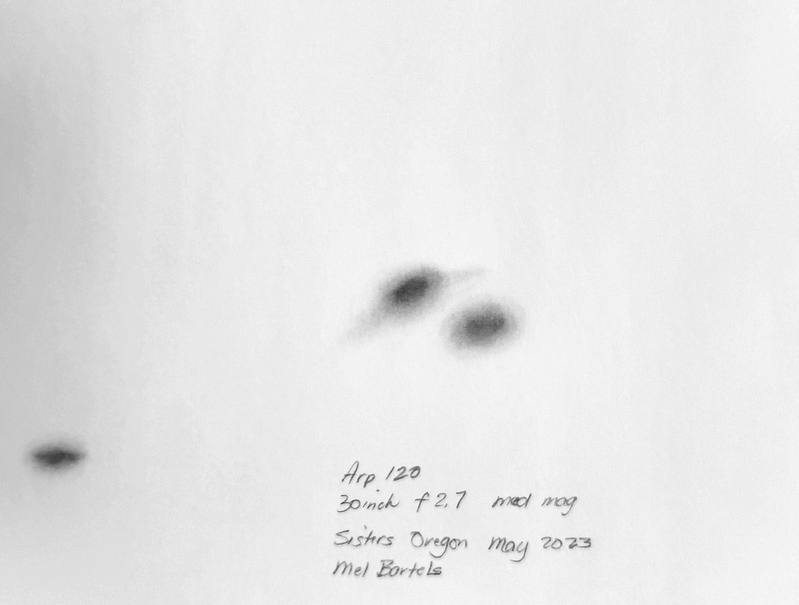
Arp 242 tidal stream (the Mice galaxies) with my 30 inch f2.7. These are small and easily overlooked because of their faintness.
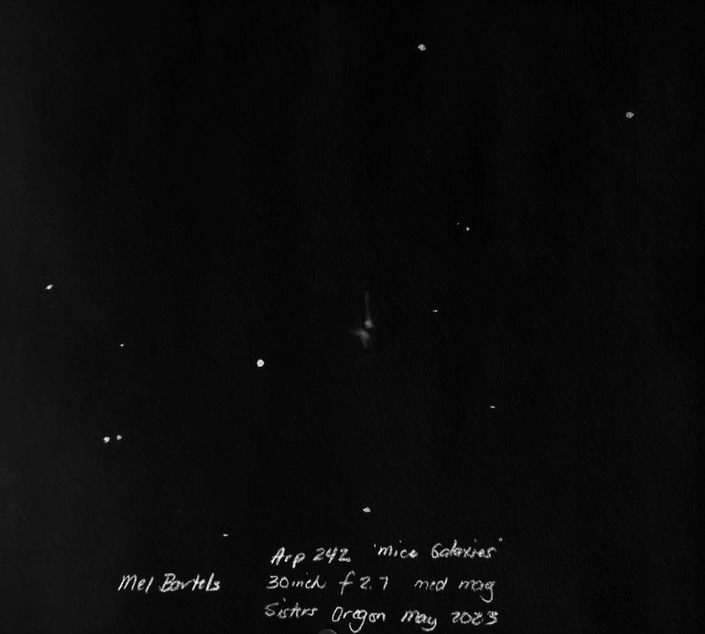

Arp 286 tidal stream with the nearby NGC 5574-6-7 group.
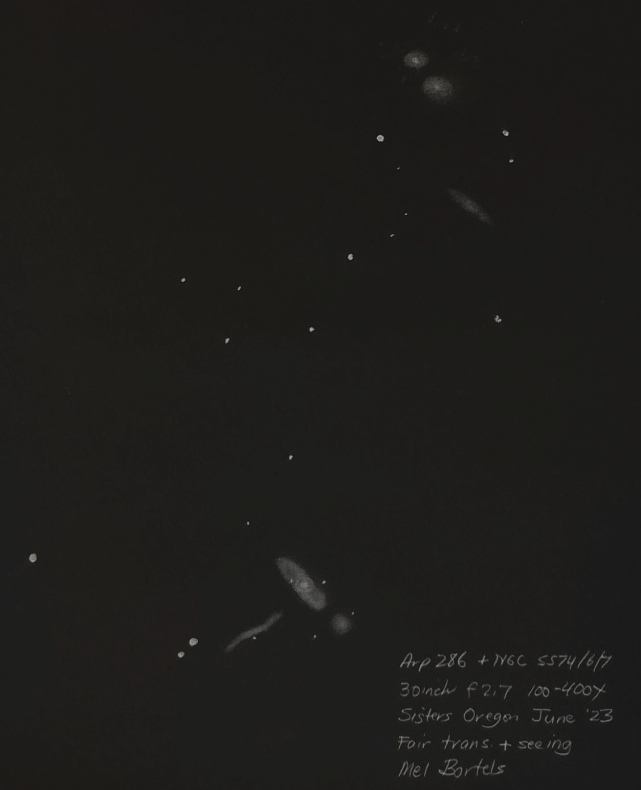

Dramatic view of the Draco Triplet with IFN and fainter background galaxies using my 30 inch f2.7.
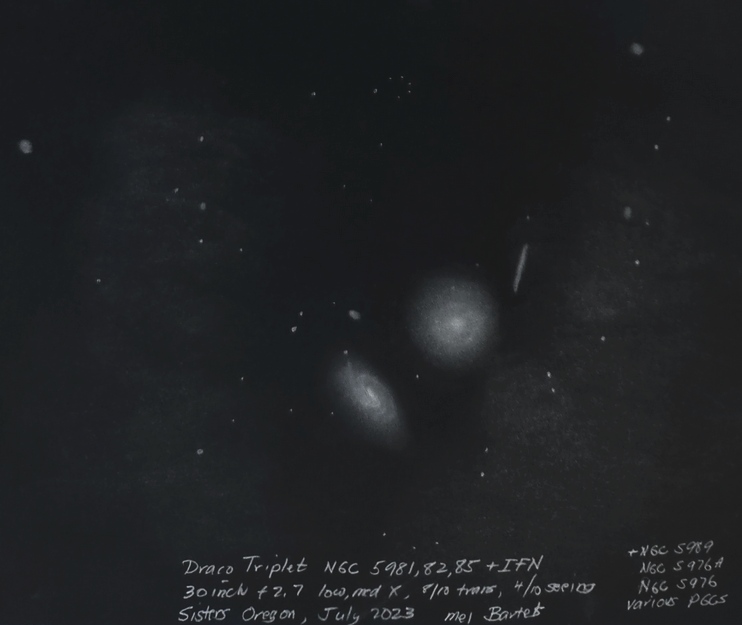

Four drawings of the Whirlpool galaxy (M51): 25 inch f2.6, 13 inch f3.0, 6 inch f2.8 and a 8 inch f7 from back in the day (white on black). The drawings show the Whirlpool from a variety of apertures, magnifications and fields of view.
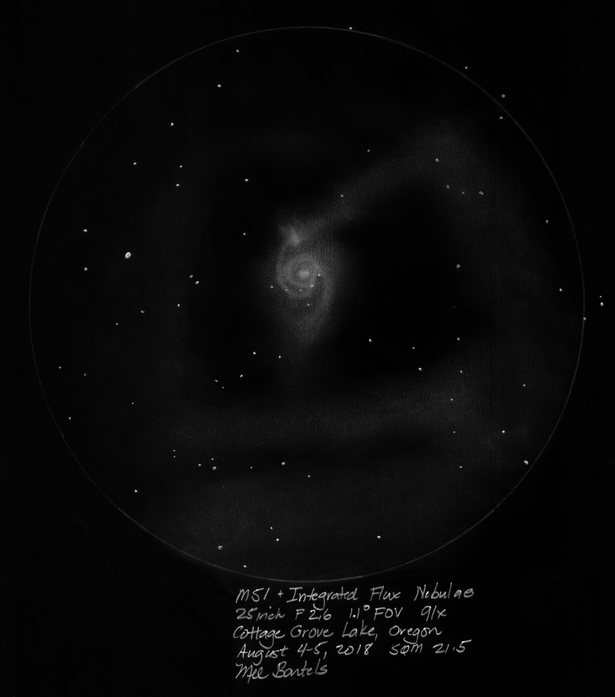

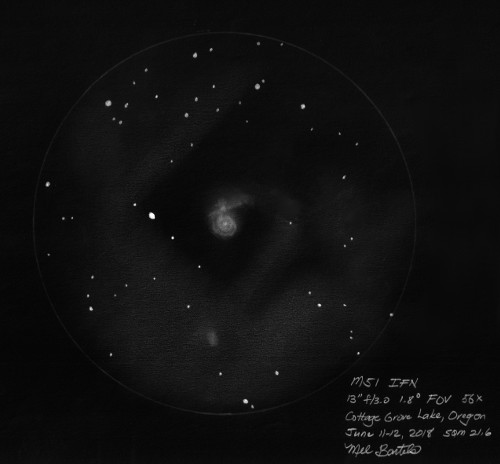

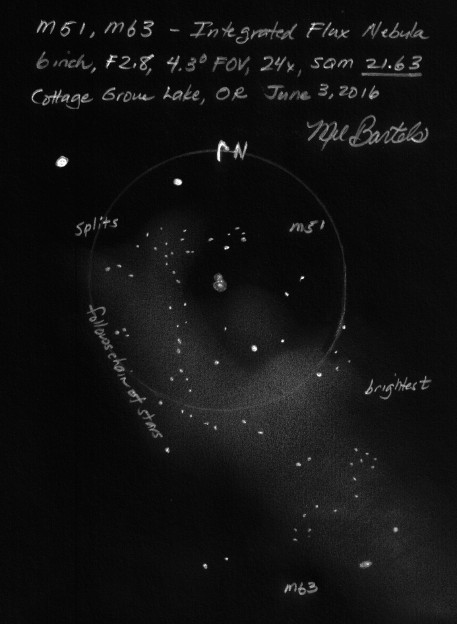

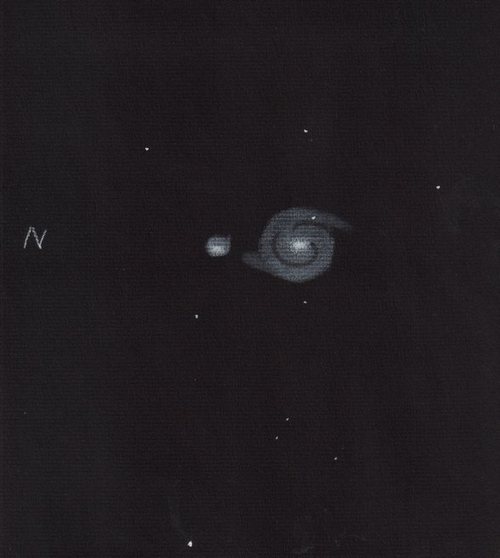

M63, the Sunflower galaxy, and its little known tidal disruption with the 30 inch f2.7.

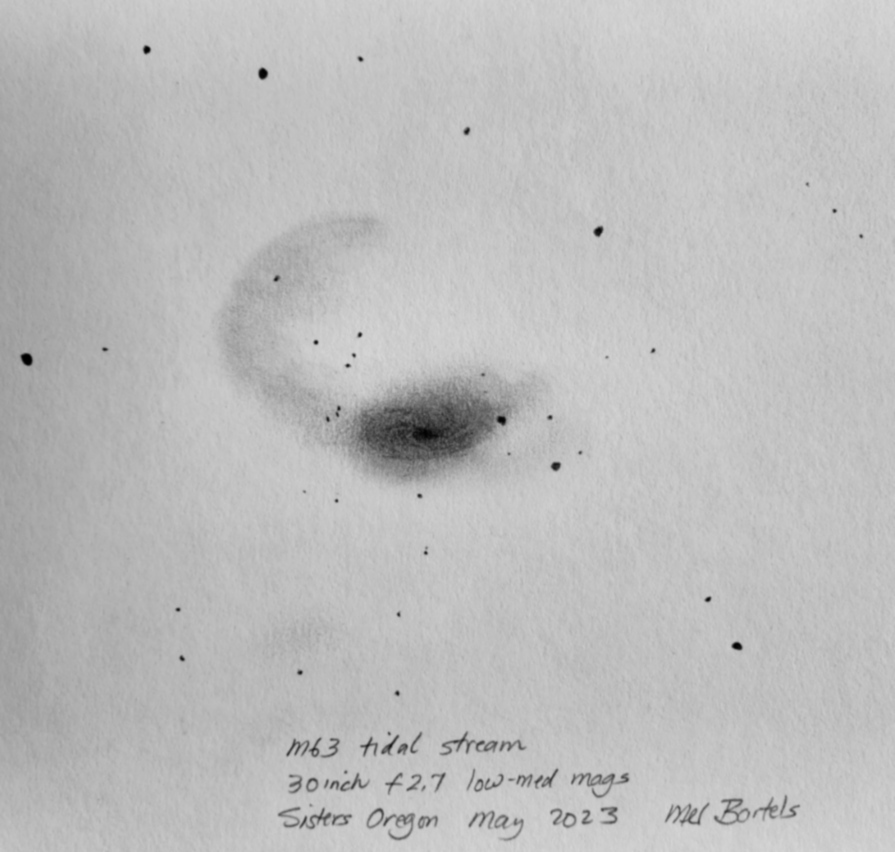
M104 tilted tidal stream halo + IFN, using my 30 inch f2.7.
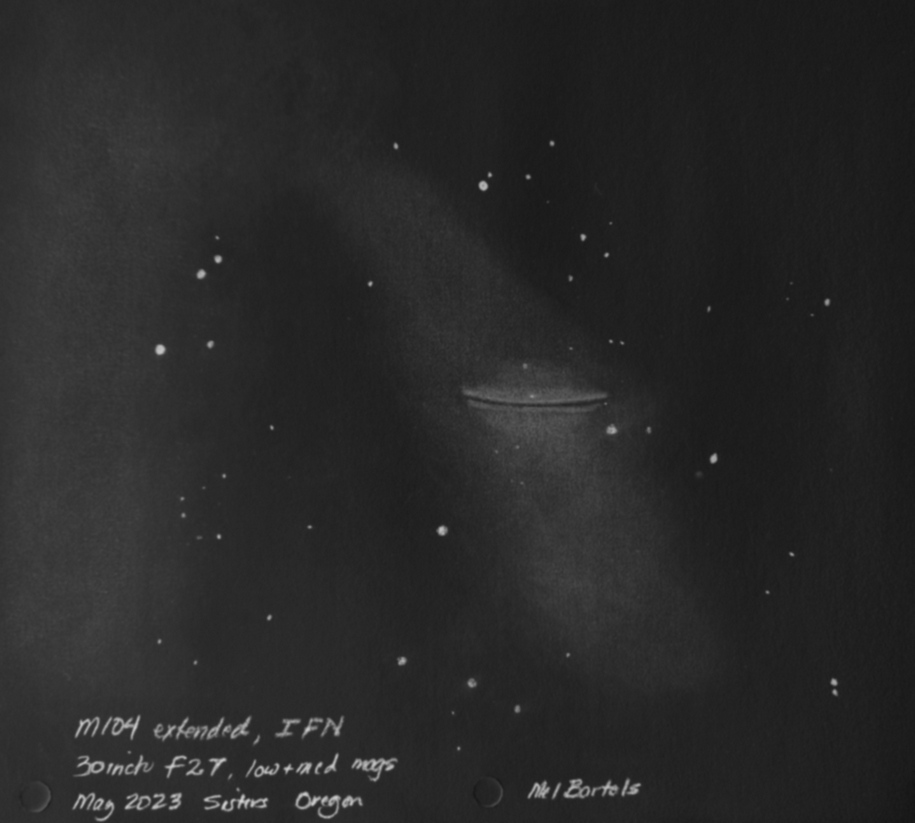

Leo Triplet (M65, M66, NGC 3628) with IFN using my 13 inch f3.0. This is a simply beautiful view, the large galaxies with their dusky gray to nearly white hues with the IFN encircling the galaxy trio. For decades I've enjoyed the trio, yet simply failed to notice subtle changes in the foreground glow. I also managed to glimpse portions of NGC 3628's tidal extension that reaches to the IFN. A Skyglow filter helped with the IFN, but dimmed the galaxies.


NGC 2775 tidal disruption + IFN + NGC 2773, NGC 2777 + 2 anon galaxies using my 30 inch f2.7. NGC 2775's ring is interesting in its right.
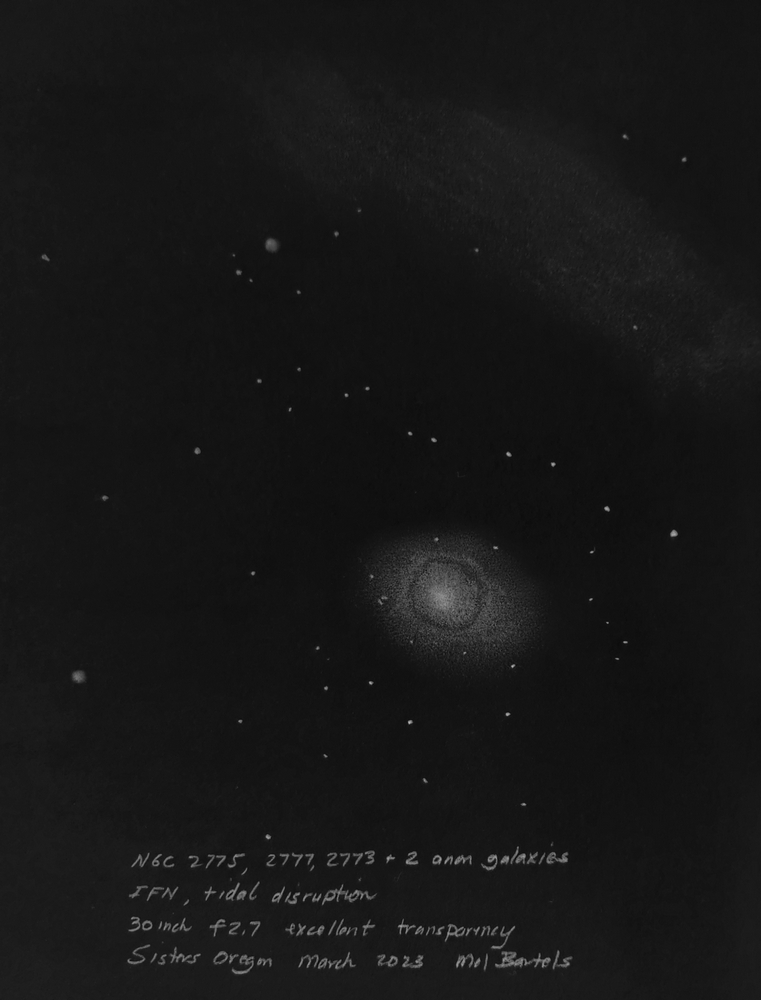

A very wide field view of NGC2903 and IFN
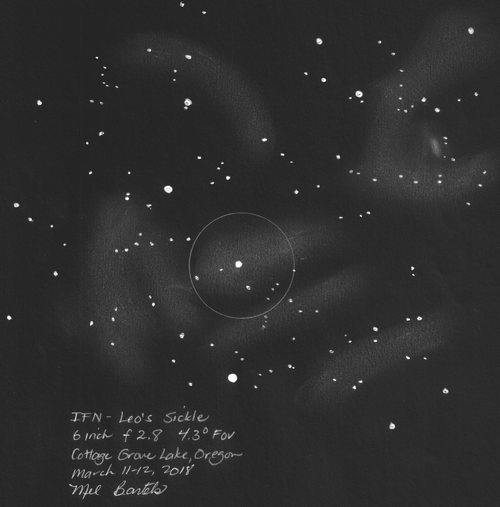

NGC3310 with tidal shield, 30 inch f2.7.


A wide field view of NGC 3310 using the 30 inch f2.7. Here, I move the scope about, creating a drawing by combining fields of view.


NGC 4013 with its beautiful tidal stream that loops back onto the galaxy, 30 inch f2.7.

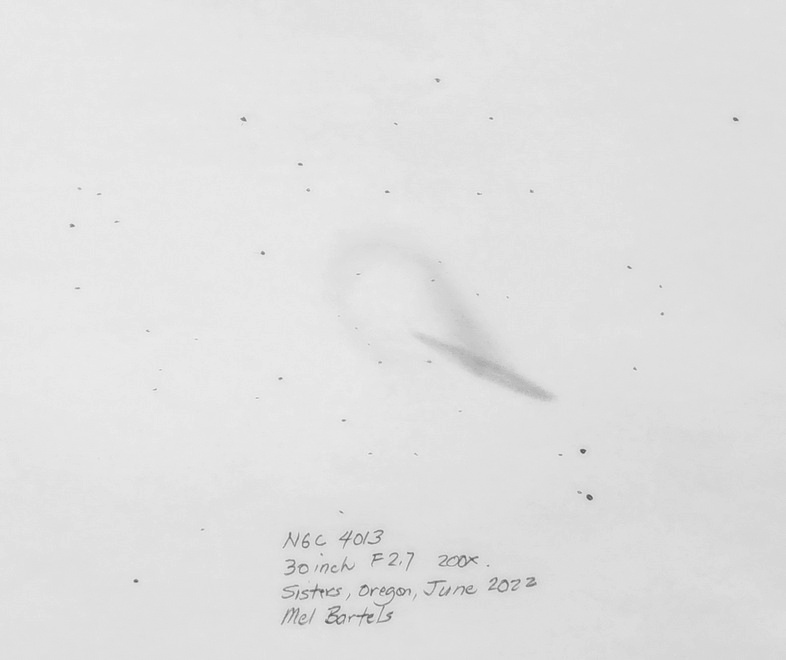
NGC 4216 with its kinked tidal stream. Seen readily though it is a very low contrast object, 30 inch f2.7.


NGC 4651 with its arms with shields tidal streams; IFN, 30 inch f.2.7.
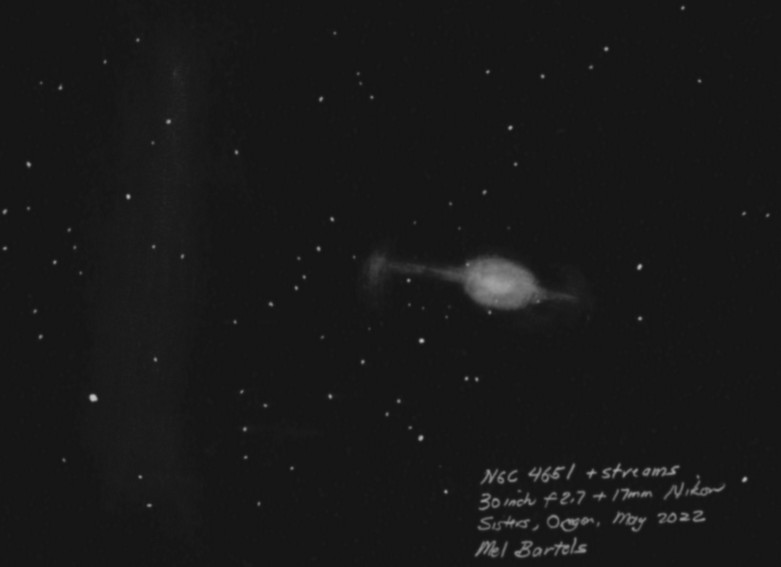

NGC 5907 with faint tidal streams and a wall of bright IFN followed by an annotated drawing. A highlight observation. Controversially, digital images show one or two loops, 30 inch f2.7.
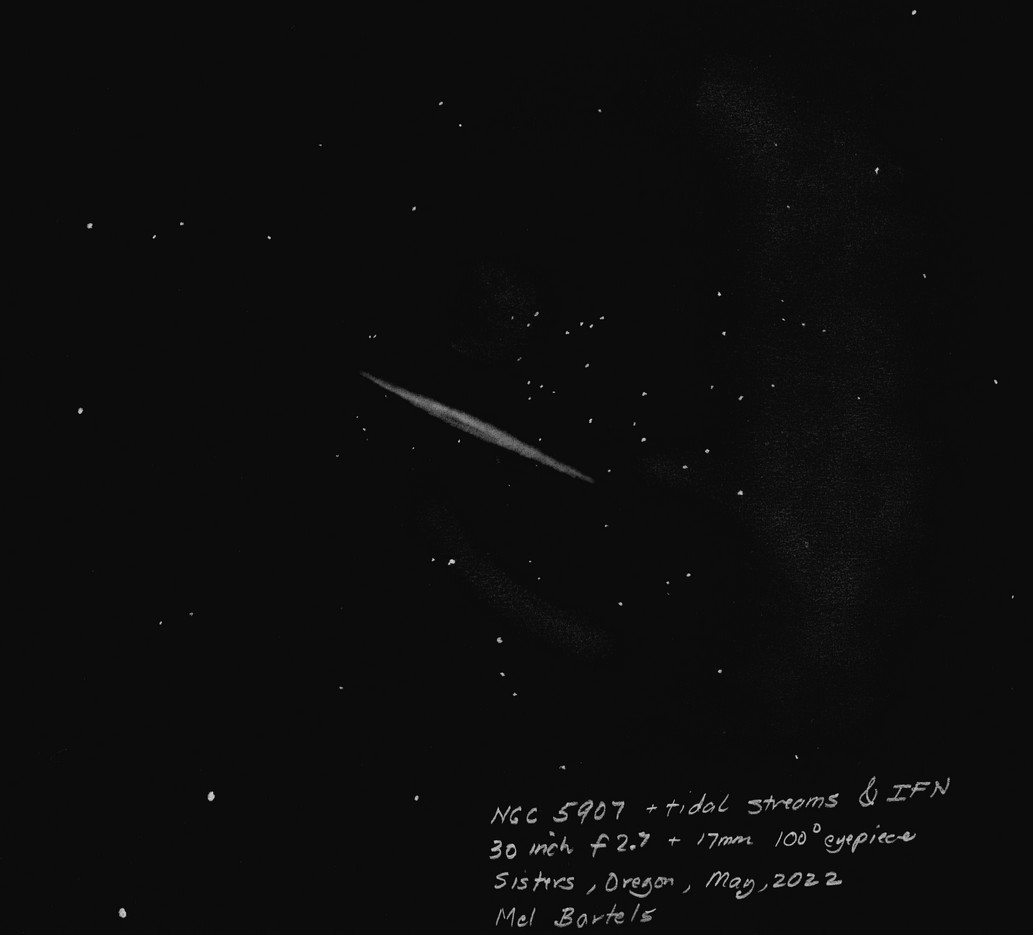

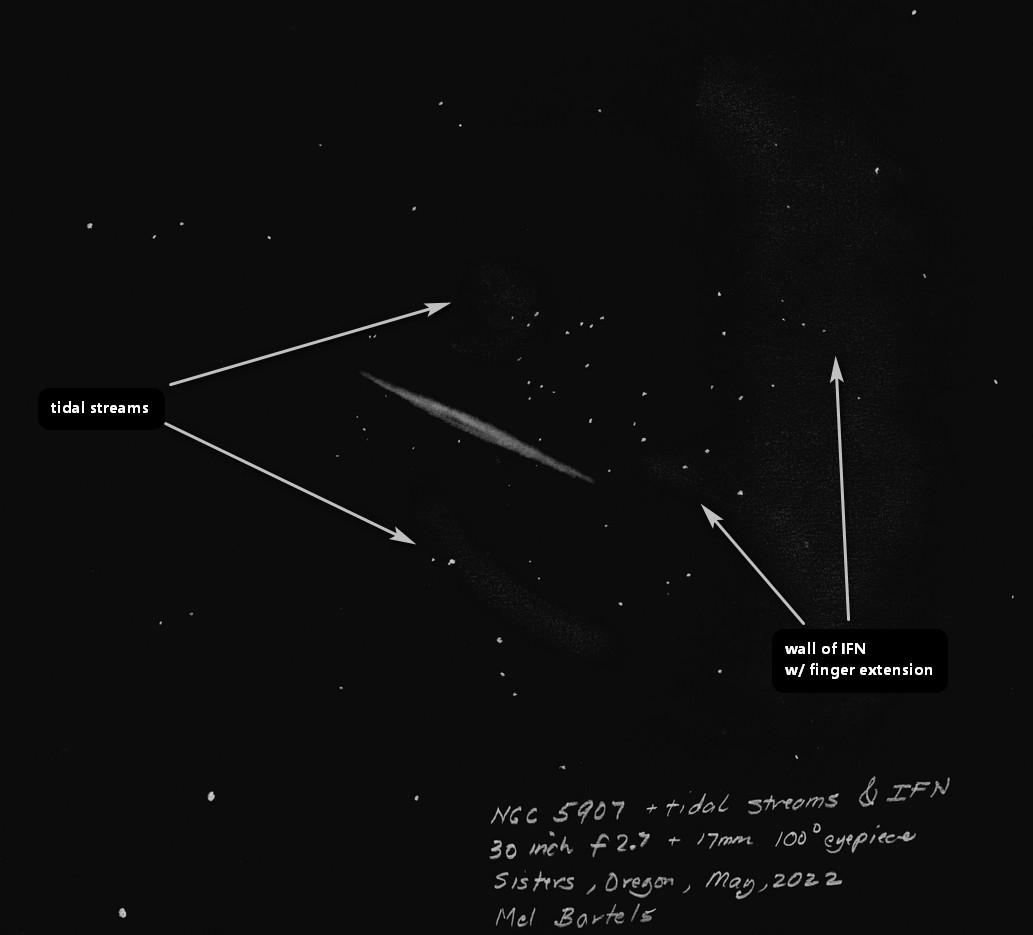

NGC 5987 + IFN, 30 inch f.2.7.

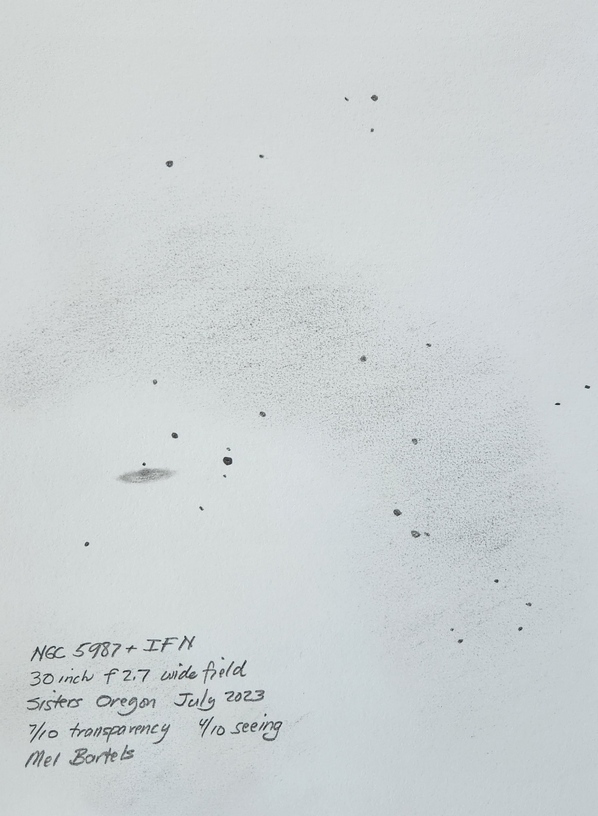
Since M87 is in the news with the dramatic image of its black hole, and since I've never observed it with my fast 25 inch F2.6, I devoted a few nights to observing. The black hole's jet is quite the observing challenge. The first night was hopeless because seeing was not good enough. The last night seeing improved to where the stars would sharpen nicely for a few seconds then fuzz out again. Trying to see the jet consisted of watching the stars for sharpening then settling in to catch a second or two glimpse before it all fuzzed out again. The jet appeared quite faint and dark gray in color. Quite surprisingly, I saw it disconnected from the galaxy's nucleus. I found proper magnification to be key: too much magnification resulted in no observation presumably because even during the sharp periods, the jet was too fuzzy, and too low of magnification made the jet just too small to see. 320x worked but slightly higher and slightly lower magnifications were not successful. I managed to see the jet several times; this is indeed a difficult observation at the limit of possibility that took me a couple of nights to succeed. To relax, I scanned the broad area, delighting in every single field of view filled with many galaxies of different morphologies. Richest Field Galaxy Observing at its best!
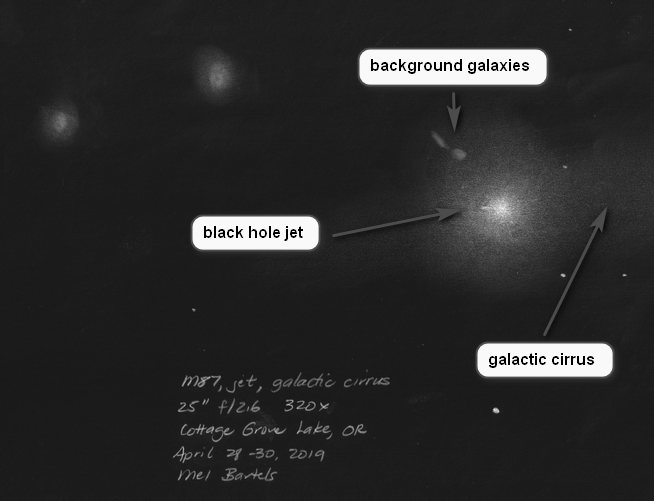

Cygnus X-1 shockwave annotated. 25 inch f2.6.
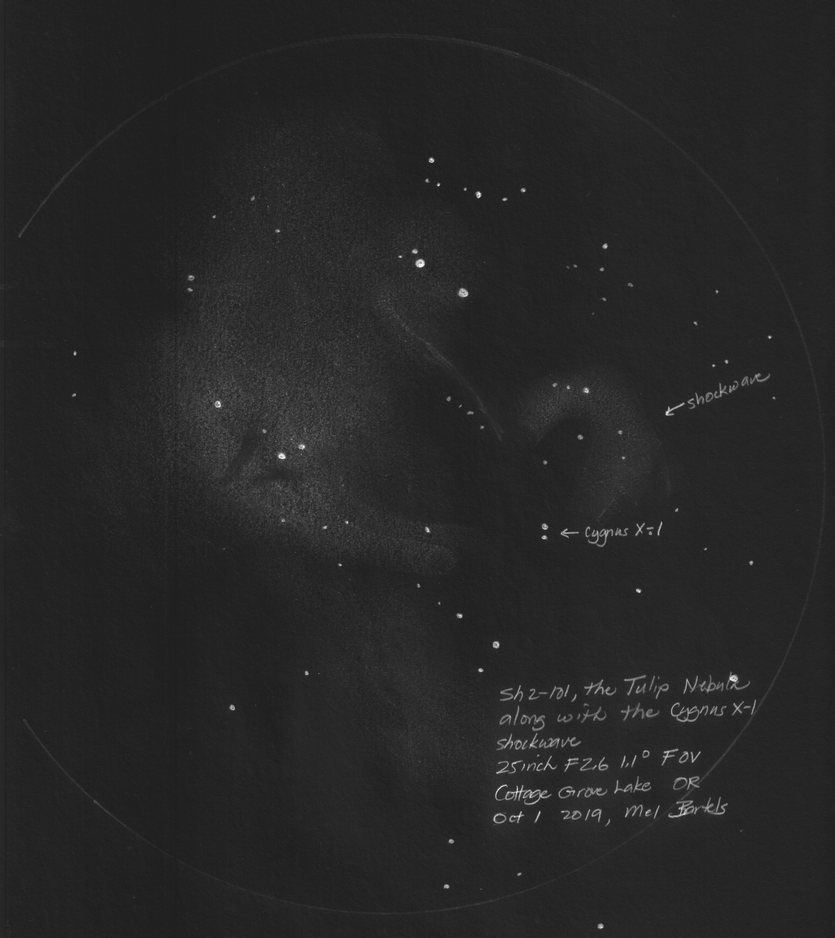

Sh2-101, the Tulip Nebula, containing the Cygnus X-1 shockwave, not annotated. 25 inch f2.6.


Cygnus X-1, 25 inch f2.6 high power.


Cygnus X-1. Here is the progression, from easy to difficult, to see the X-1 shockwave.

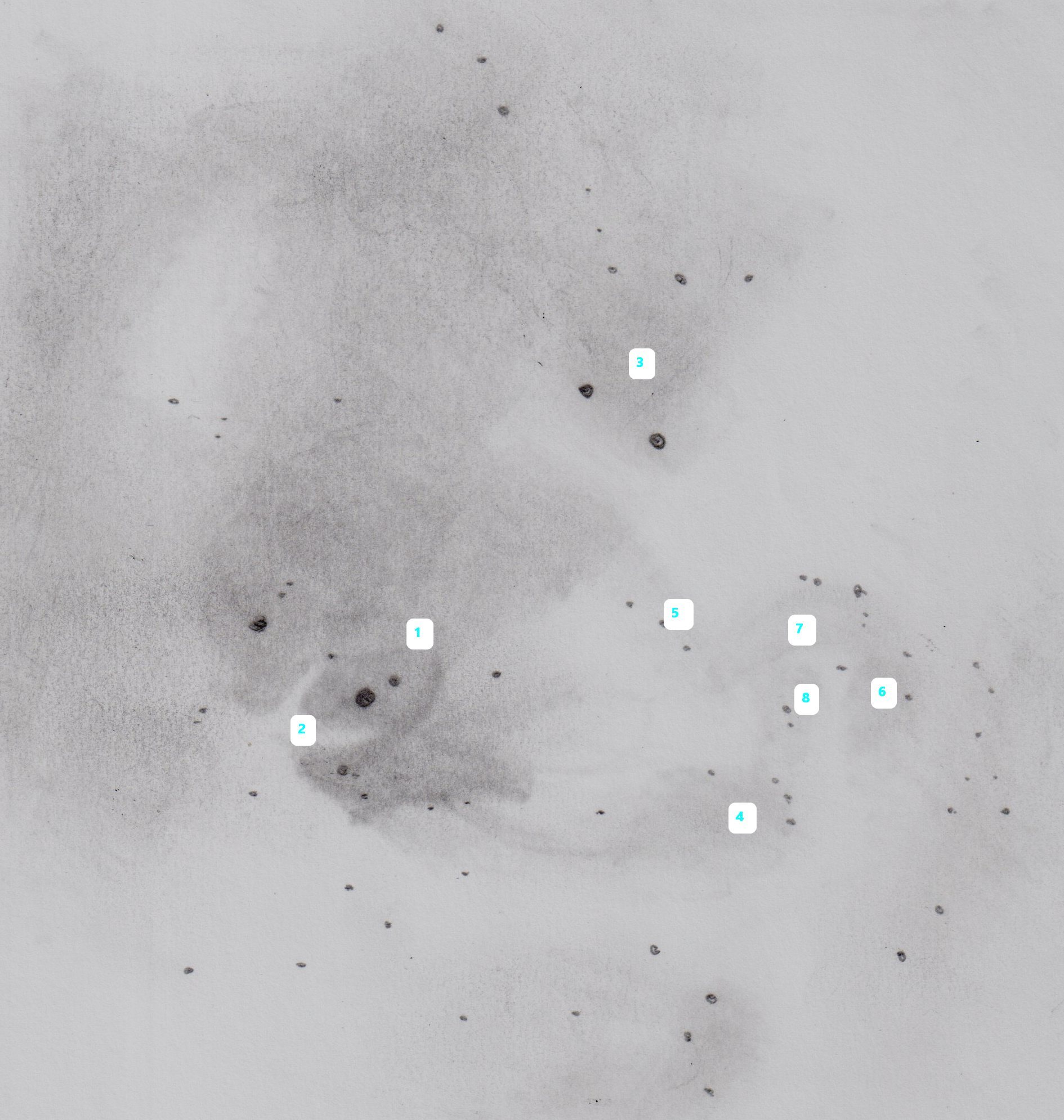
Sh2-101 Tulip Cygnus X-1 as seen through my 6 inch f2.8. Compare to the 25 inch views.


Cygnus X-1 shockwave as seen through my 10.5 inch f2.7.
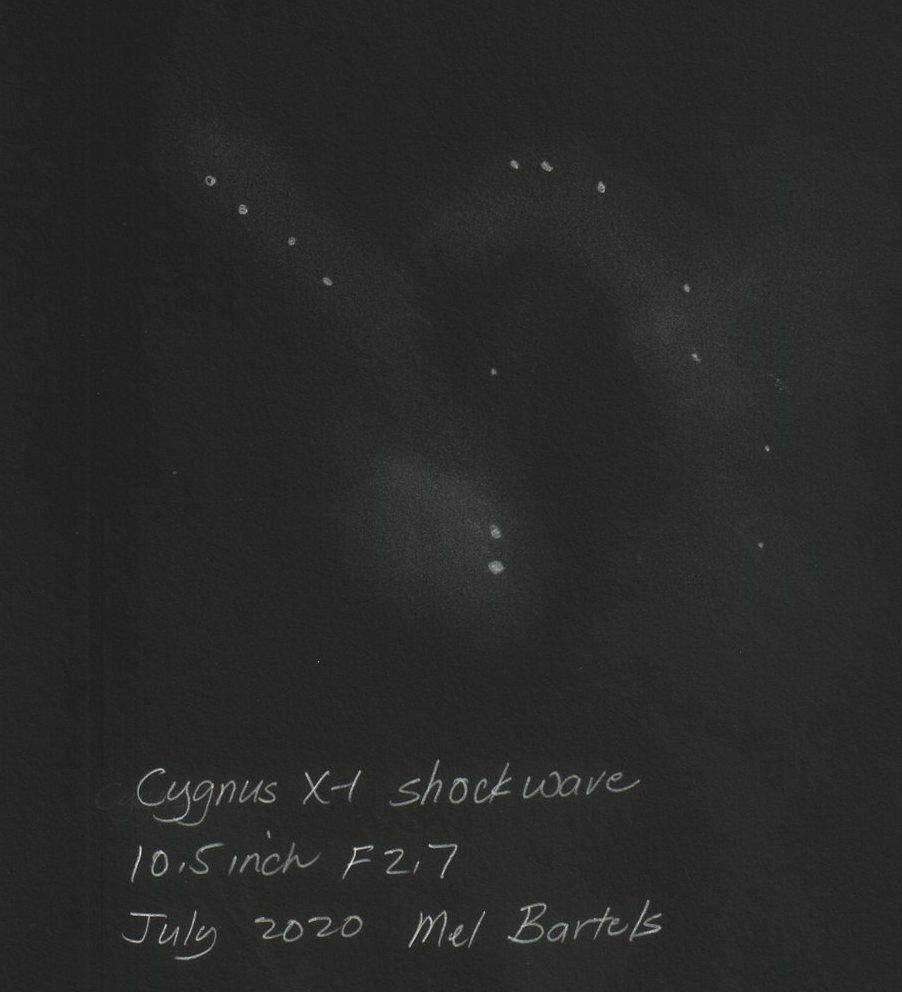

The newly discovered OIII arc in Gemini, possibly a part of a very large supernova remnant. This segment is 10 degrees long. 16.25 inch f2.9 with TV Bandmate nebula filter.
See the Cloudy Nights discussion.


OIII cloud next to the Andromeda Galaxy as seen through the 30 inch f2.7.

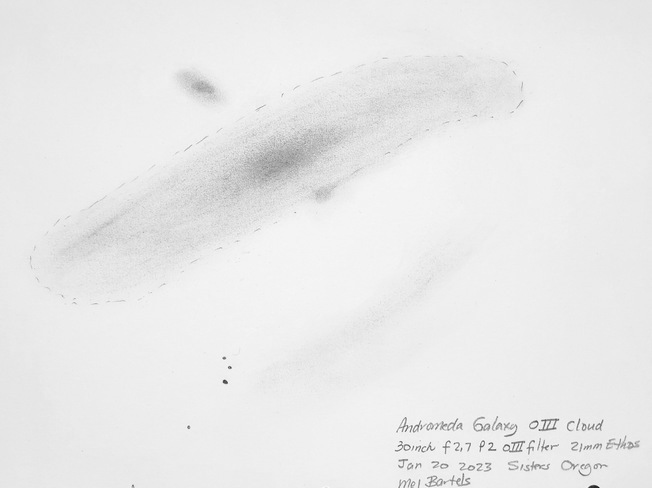
OIII cloud next to the Andromeda Galaxy as seen through the 16 inch f2.9.
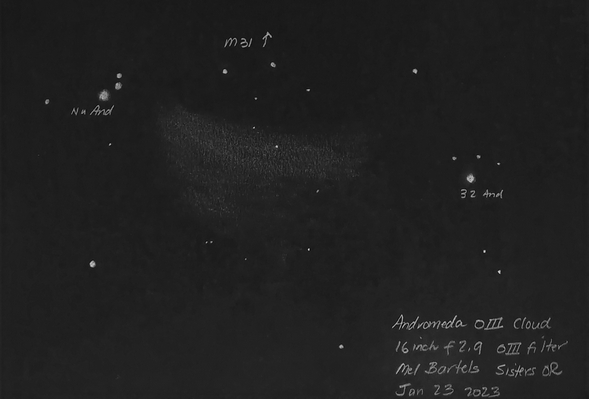

Shenron OIII region, NGC 7094 planetary, M15 IFN 'Z', IFN near Enif including Herschel's region #48; 30 inch.
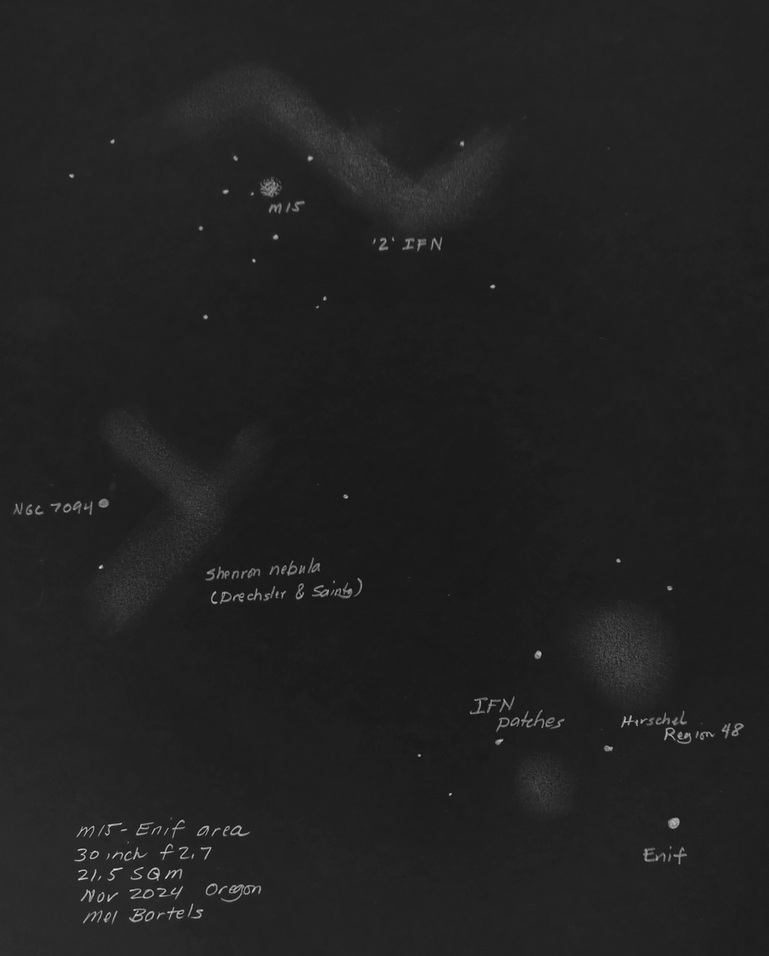

The Sivan 2 object: looks to be partially OIII. Drawn with the 16 inch f2.9.
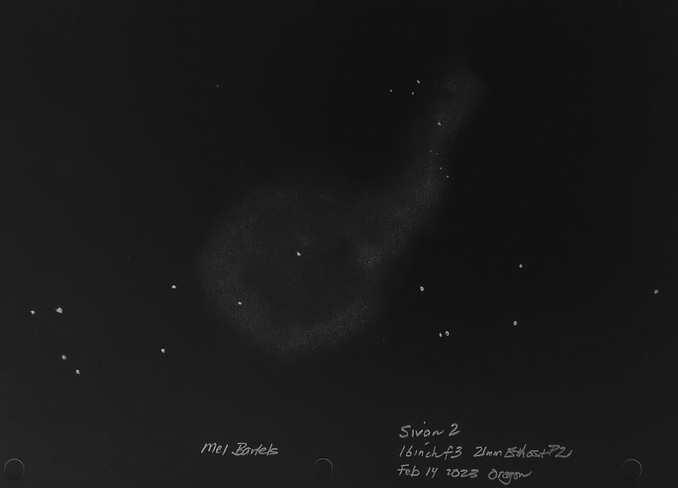

The newly discovered Fal 1 OIII object north of M50.
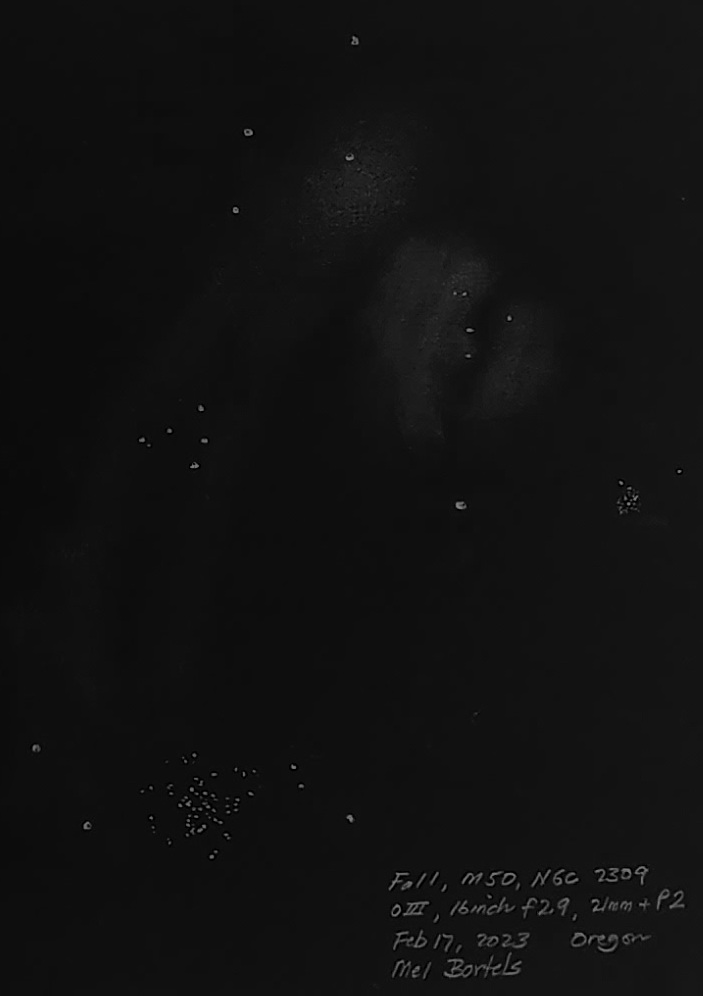

Merrill's Star Nebula. 25 inch f2.6.
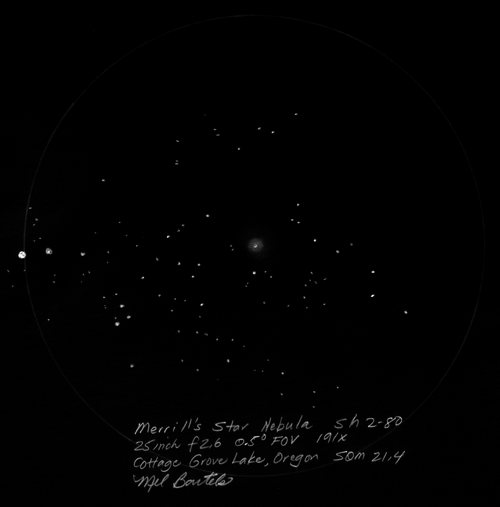

SH2-308, a Wolf-Rayet shell. Really beautiful with my 13 inch f3.0.

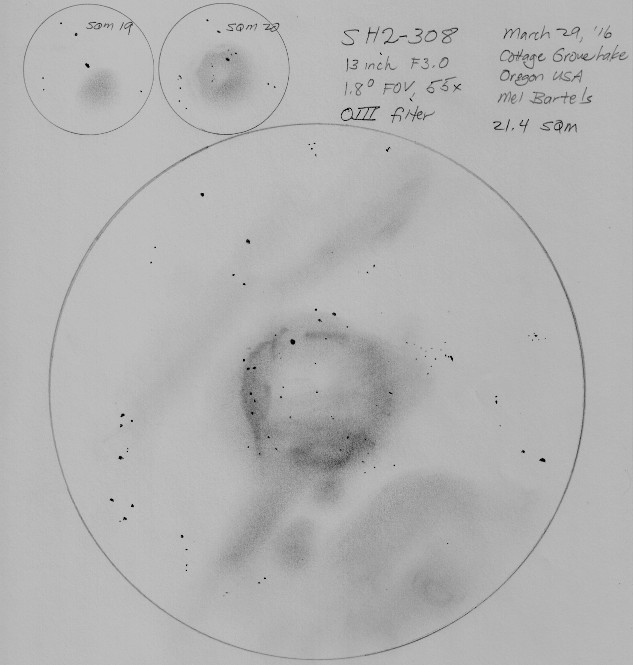
WR 134 (V1769). A complex ring as seen in my 25 inch f2.6.

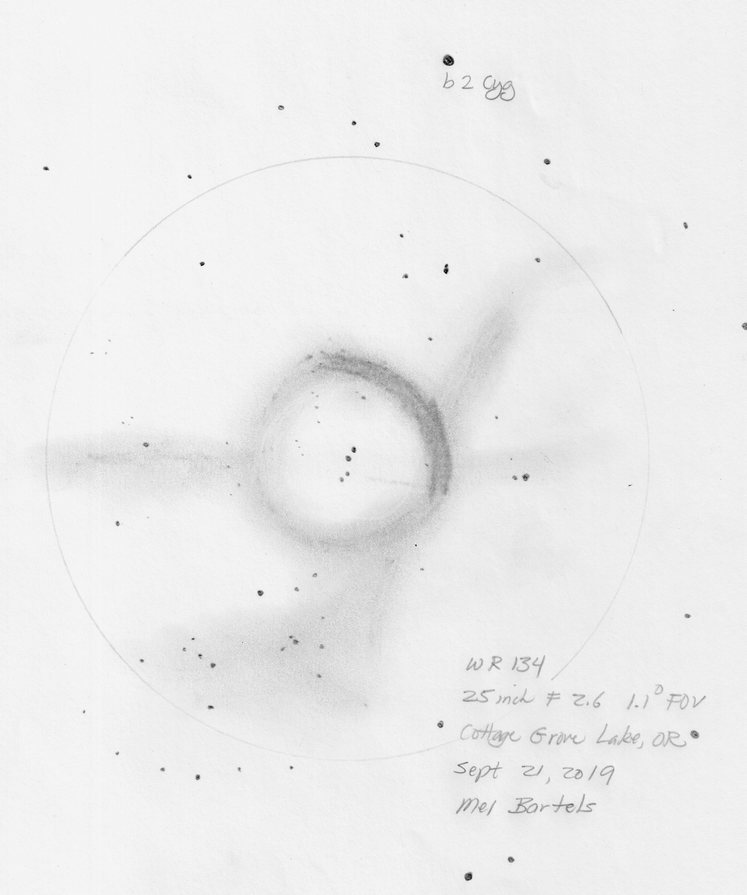
Andromeda's Parachute, a quadrupuly lensed quasar 10.9 billion light-years away. 25 inch f2.6.

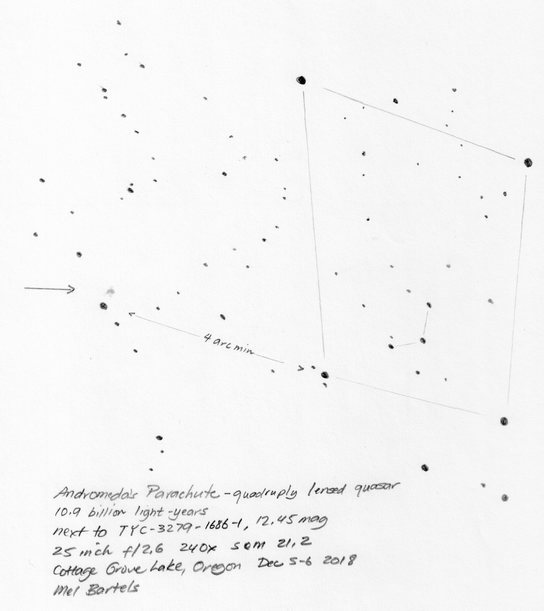
The 'Ring' of Betelgeuse is broken into clumpy dark nebulae with B36 the dominant feature on the western side as a long diagonal streak. There are offshoots to the northwest, one leading to B35. The arced bell to the north of Betelgeuse is clumpy and splotchy. The long curved section to the south of Betelgeuse is beautiful - subtle, mottled, striated.
The 'Dark River' leading pouring from the North American Nebula.

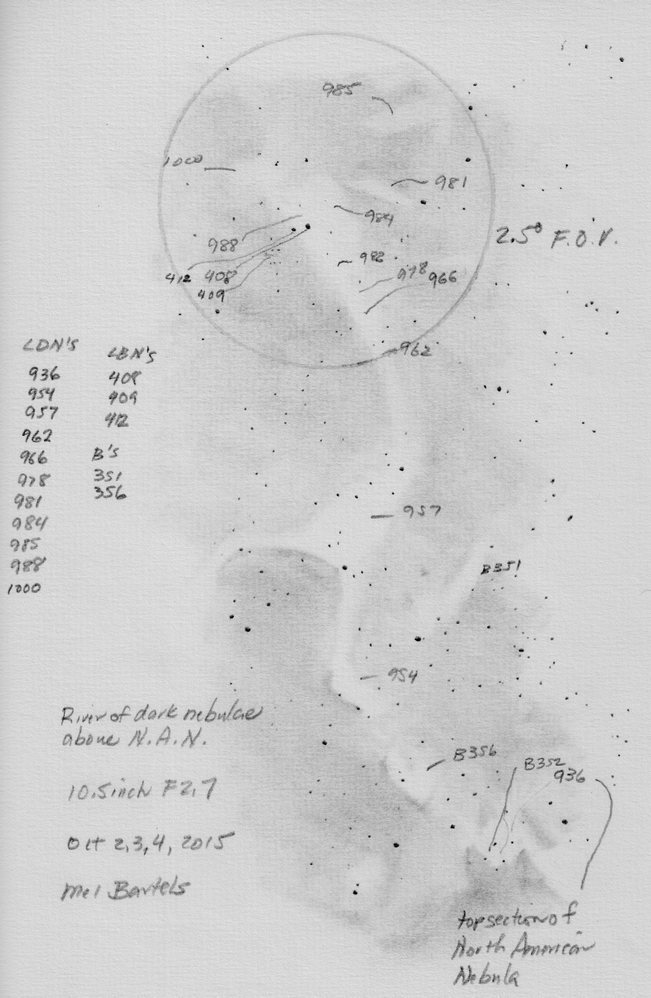
The HorseHead Nebula area (IC434) with my 25 inch f2.6.
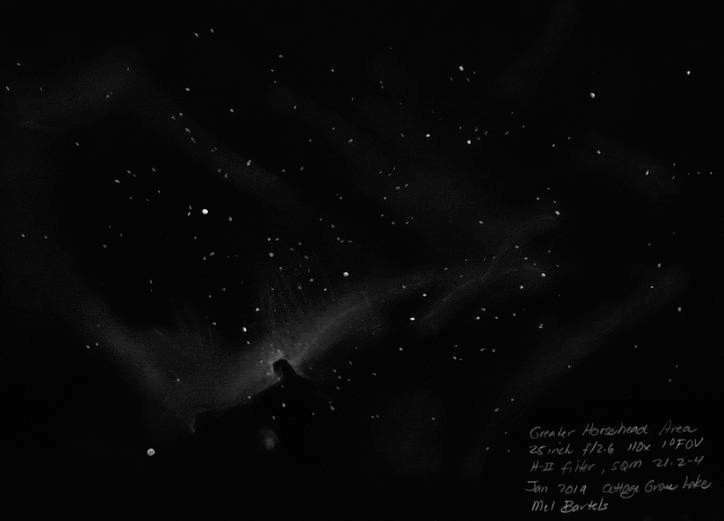

The HorseHead Nebula area (IC434) with my 13 inch f3.0.
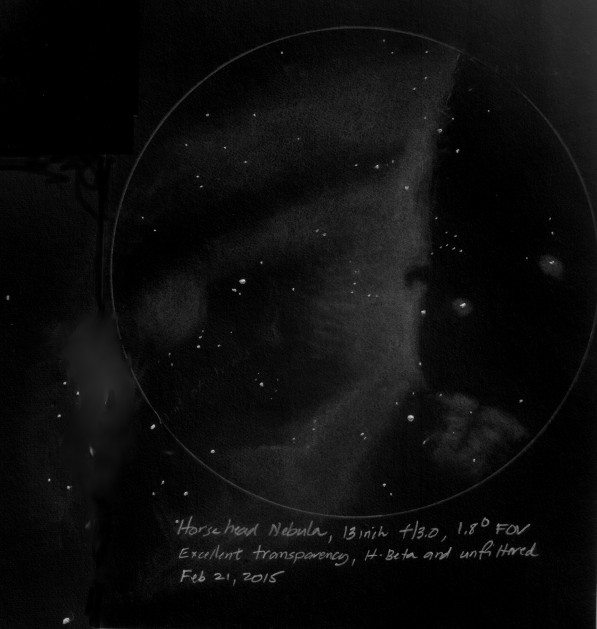

A dark area in Orion's Belt as seen in my 6 inch f2.8.
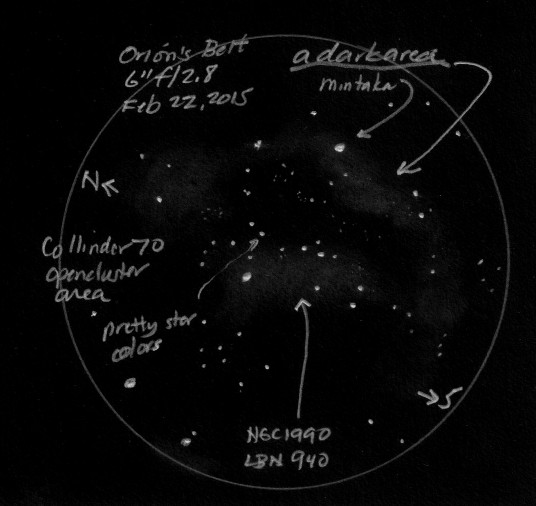

CTB1 the Medulla Nebula with the 30 inch f2.7. A 'false' arc of nebulosity appears adjacent.
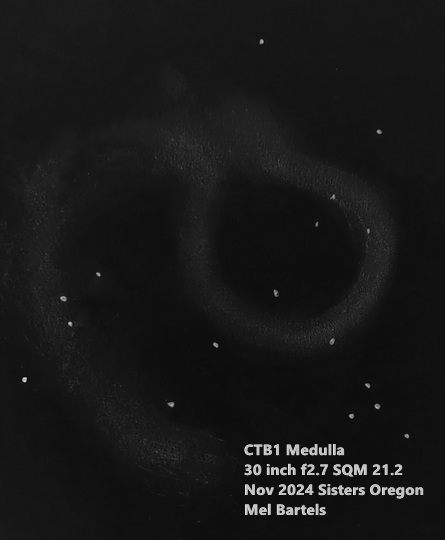

Progressive drawings of SN remnant G65.3 5.7.


IC443, the Jellyfish Nebula as seen in my 13 inch f3.0.

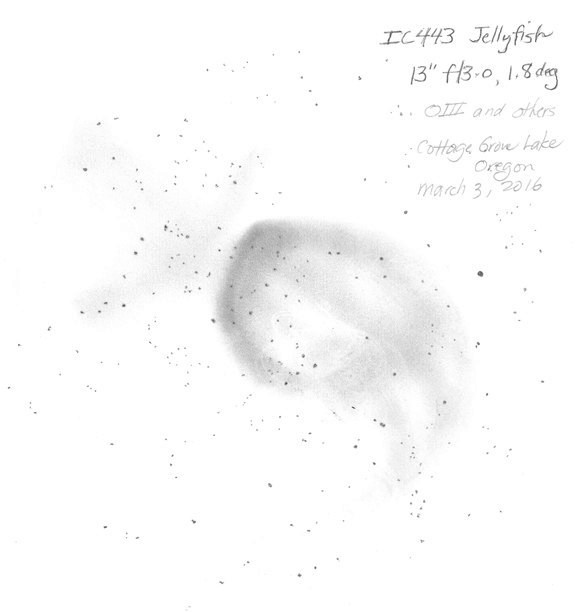
There's a dust belt to the west side of M42, the Orion Nebula with Barnard's Loop curving to the east and below. Two drawings with my 6 inch f2.8.
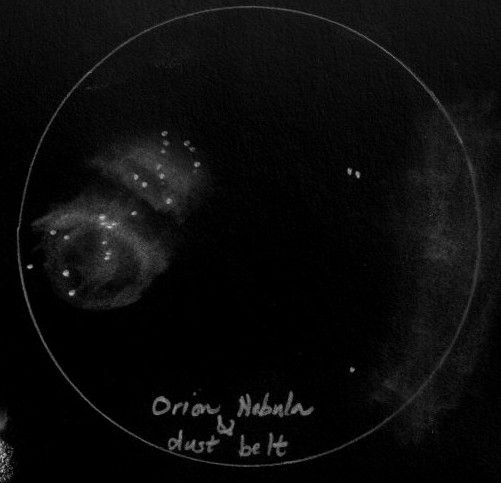

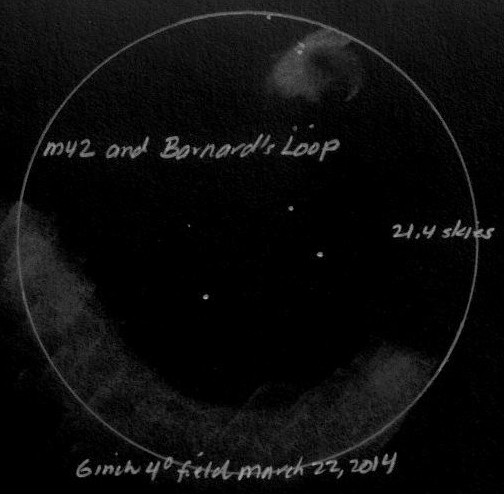

M78 and nearby Barnard's Loop.
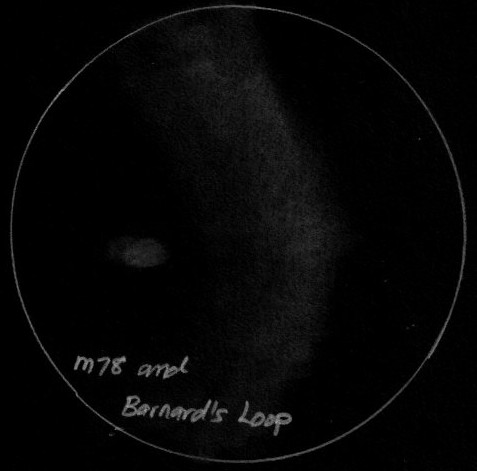

The Monoceros Loop, G205.5+0.5, a very large supernova remnant between the Rosette Neb and the Christmas Tree cluster / Cone Neb. 16.25 inch f2.9 with TV Bandmate.


The NHZ-HU6 supernova remnant bubble, 5 deg diameter, 16.25 inch f2.9 with TV Bandmate nebula filter. Digital image here.


Orion-Eridanus Super Bubble, SH2-245, SH2-264 and the southern arc of Barnard's Loop. This is a mosaic of many sketches with the 6 inch f2.8.
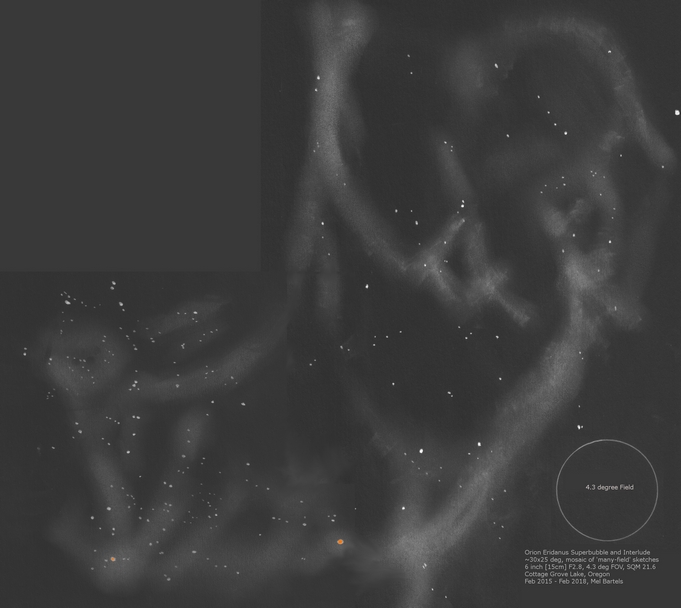

SH2-240, the Spaghetti Nebula (Simeis 147). My impression through my 10.5 inch f2.7 2.5 degree field telescope is first, one of many bright stars with faint broad nebulosity that upon closer inspection shows brighter knots and upon lengthy investigation reveals filaments, particularly the double filament on the SE side. Also visible are several dark splotches.
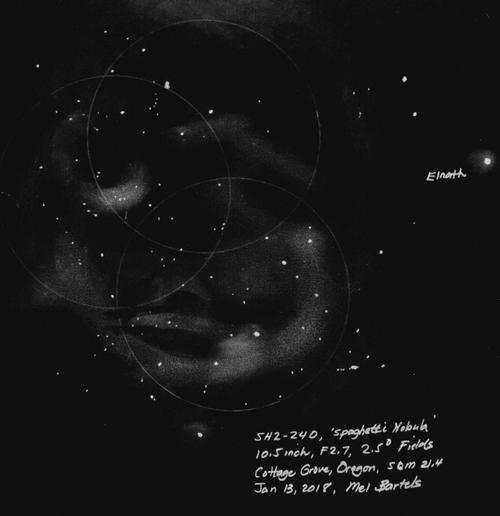

SH2-245, the Fish Hook, part of the Eridanus Super Bubble.
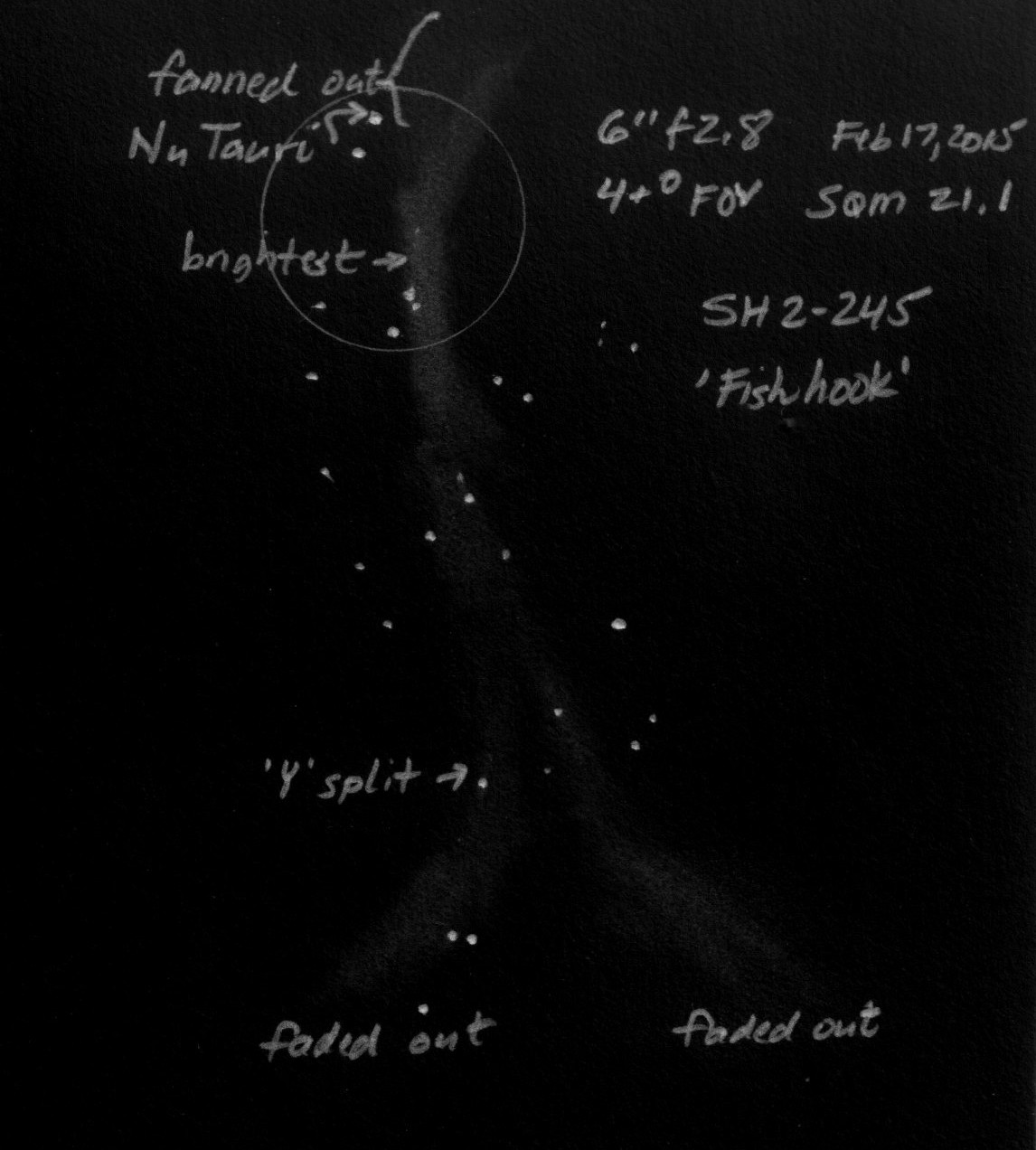

North of Albireo is the supernova remnant S-91 or G65.3 5.7. Fields sketched with my 10.5 inch f2.7 and my 13 inch f3.0.


Veil Nebula, an integrated combined sketch with the 30 inch f2.7 and the 25 inch f2.6. White pastel on black, 20x28 inches.
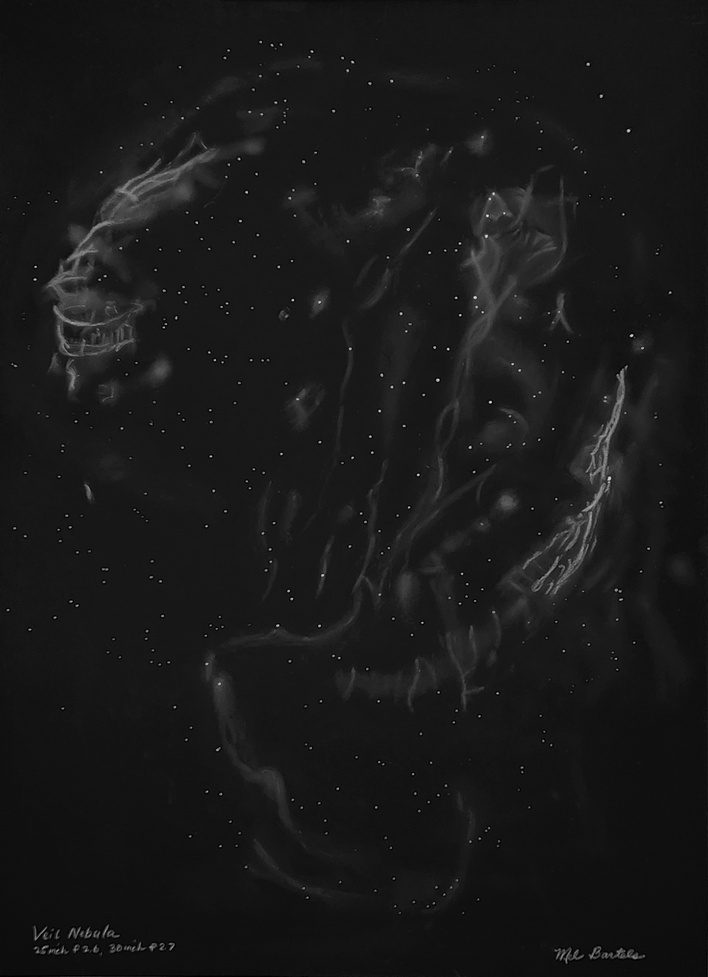

Veil Nebula, complete, a mosaic of drawings with the 25 inch f2.6. Western Veil with the 30 inch including the dust cloud to the outside Veil Nebula section, the Witch's Broom, with 25 inch f2.6. Veil Nebula section, the Witch's Broom, with 25 inch f2.6. Veil Nebula, 25 inch f2.6, eastern arc. Veil Nebula section, the triangle tail, with 25 inch f2.6. Though well known, it's rare to see this much detail in the Veil Nebula in a single field of view. Drawn with the 6 inch f2.8. G82.2 5.3 W63 SN remnant. Drawn with the 25 inch f2.6. The blue sprites of the Small Sagittarius Star Cloud with the 30 inch f2.7, 1 deg field. See https://www.astrobin.com/full/hirvty/E/ The California Nebula with a 30 inch f2.7, 1 deg field. And the California Nebula is framed nicely in the 4+ degree field of view of the 6 inch f2.8. Cederblad 214 (NGC 7822). 25 inch f2.6. The Elephant's Trunk, 30 inch f2.7, 1 deg field, unfiltered. The Elephant's Trunk, 20 inch f5 at 4mm exit pupil with OIII filter. IC 1396, contains the Elephant's Trunk, 30 inch, 1 deg field, unfiltered. The Iris Nebula. 13 inch f3.0. With my 10.5 inch [27cm] f2.7 Richest Field Telescope, placing the Lagoon Nebula, M8 and the Trifid Nebula, M20, in the same 2.5 degree field of view reveals a curved bridge between the two. Lower's Nebula Sh2-261, LBN 863, with the 25 inch f2.6. North American Nebula, Yucatan portion. North American Nebula, SE of Yucatan portion. Nebulae in the NW Cygnus area near Omnicron Cyg and the Propeller, 16 inch f2.9. The Pelican Nebula, 30 inch f2.7, 1 deg field. Propeller Nebula, Simies 57, DWB 111/117. The Raspberry Nebula and Bigfoot. 25 inch f2.6. The Trifid Nebula, M20 and the open cluster, M21, in color, as seen through the eyepiece of my 30 inch f2.7. Zeta Ophiuchi shockwave (inner), 30 inch f2.7. Zeta Ophiuchi Sh2-27. 16 inch f2.9. Abell 12, a faint planetary almost touching Mu Orionis. 13 inch f3.0. Abell 21, the Medusa Nebula. 10.5 inch f2.7. Abell 39 with IFN, 30 inch f2.7 K3-82 planetary. 25 inch f2.6. M27, the Dumbbell, with interstellar medium. 25 inch f2.6. M57 the Ring Nebula along with IC1296 and IFN, in color, using the 30 inch f2.7 along with the 25 inch f2.6. The extended ring's rim is visible in 21.7 skies with OIII filter at 6mm pupil; high power and good seeing for interior stars; intense blue-green with red tinged color. M57 the Ring Nebula along with IC1296, 30 inch f2.7. M57 the Ring Nebula with the 25 inch f2.6, in color. The extended rim is faintly visible. Extended M57 area with the 25 inch f2.6. Broad M57 region showing the IFN and the extended ring with the 15.25 inch f2.9. The Ring Nebula with my 24 inch f5.4. White on black drawing. The Ring Nebula with my 24 inch f5.4, 2nd drawing. Background area around the Ring Nebula. Hickson 50 in the lower left, M97 to the IFN, bathed in faint IFN, 30 inch f2.7. Two planetaries: MWP1 and ALV1 (MWP1 is the large 3 column planetary centered in the drawing while ALV1 is the small circular planetary to the lower right). Streaks of InterStellar Medium also appear. Best viewed with no filter and NPB filter. Both immediately seen while sweeping the area. Necklace Nebula. 25 inch f2.6. NGC 6751, Hulo 1, V Aquilae carbon star, 30 inch f2.7 at high X. Sh2-216, the largest planetary nebula in the sky at nearly 2 degrees. The Blue horsehead nebula, IC4592 and IC 4601. Rho Ophiuchi region 6 inch f2.8. Rho Ophiuchi region 25 inch f2.6. The Witchhead nebula with my 6 inch F2.8. Cone Nebula, Christmas Tree cluster, 13 inch F3.0. Best view was with the 13mm Ethos and UHC filter at 1.1 deg FOV and 90x. The view at lower power with the 21mm Ethos and 1.8 deg FOV at 55x showed more of the surrounding nebulosity but made the Cone too small and indistinct. At the lower power, the NPB filter worked best. Without a filter, the Cone was hardly there. Cone Nebula, 24 inch, first drawing. IC 1470, NGC 7510, K17, Sh2-157, BFS 19, 30 inch f2.7 Faint Hbeta nebulae from M43 to the Horsehead. 25 inch f2.6. The Rosette Nebula with my 16.25 inch f2.9 and a TV Bandmate nebula filter. The Seagull Nebula. 6 inch f2.8. SH2-264 (Lambda Orionis) wiht the 6 inch f2.8. The Flying Bat and Giant Squid. The Flying Bat is the huge arc to the left of the field and the Giant Squid is the bipolar nebula in the middle of the field. They are known as SH2-129 and OU4. The red carbon star is V419 Cephei. 13 inch f3.0. The Sagitta Bubble (and M71), a large scale object, drawn with the 30 inch f2.7.. A sketch of the newly identified H-alpha bubble, WD-1, and some thoughts on sketching and imaging using the 10.5 inch f2.7.. M3 + IFN using the 30 inch f2.7. M5 + IFN using the 30 inch f2.7. Palomar 5 with the 30 inch f2.7. The clouds of M13, the Great Hercules Cluster, with the 30 inch f2.7. M13, the Great Hercules Cluster, with the 25 inch f2.6, followed by the greater M13 area, 13 inch f3.0. M75 with the 6 inch f2.8, wide field. M92 with the 6 inch f2.8, wide field. NGC 6723 with the Corona Australis IFN The Perseus Double Cluster clouds with the 30 inch f2.7. Compare to James Pelley's image. The Perseus Double Cluster has a wall of nebulosity to one side with a patch of nebulosity to the west side. 6 inch f2.8. The Pleiades Bubble. First light with the 6 inch f2.8. I rediscovered the Pleiades Bubble. Pleiades Merope Nebula with the 25 inch f2.6. The greater Pleiades area with my 16 inch f2.9. M44, the Beehive cluster with IFN, 10.5 inch f2.7. M103 and Trumpler 1, 30 inch f2.7. Melotte 111 with my 6 inch f2.8. NGC7788, NGC7790, Be5, Fr1 open clusters with the 30 inch f2.7. NGC 7789, Caroline's Rose with the 30 inch f2.7., a pastel on black drawing. The broad area of Orion's Belt with the 6 inch f2.8. Because the field of view is spread over 100 degrees of apparent angle, detail is enhanced. Albireo is especially pretty with pinpoint star images from center to edge. A swoosh of nebulosity lies at the bottom of the field of view. 6 inch f2.8, pastel on black drawing. The Garnet Star. Pastel on black. WZ Cass, a beautiful double star, one being a carbon star, 30 inch f2.7. M31 with the 30 inch f2.7 including the Clouds of Andromeda. M31 and clouds with the 25 inch f2.6. The west side of the Andromeda Galaxy with its clouds. M31 with the 6 inch showing the 'Andromeda Twist'. M110, a companion to the Andromeda Galaxy, showing hints of dust lanes and spiral arms. Donatiello 1, Mirachs Ghost and IFN. Donatiello 1 is a recently discovered dwarf galaxy - see the Sky and Telescope article. With the 30 inch f2.7. The Draco Dwarf Galaxy proved very difficult and fairly confusing: difficult because it was so faint and confusing because of the brighter nearby IFN! In the end though a rewarding view. The galaxy, comprised of old stars, is thought to be one of the most dark matter dominated known. 13 inch f3.0. The Ursa Minor Dwarf galaxy. 25 inch f2.6. Leo I with IFN. 10.5 inch f2.7. Fireworks Galaxy (NGC 6946) sports a complex of bright Integrated Flux Nebula. Combined with the bright open cluster, NGC 6939, it's a wonderful view in a wide field larger aperture telescope. M64 + IFN with 10.5 inch f2.7. M74 + IFN with 30 inch f2.6, followed by M74 + UGC 1176 + IFN + Eta Piscium. Two drawings of the M81, M82 area with dramatic IFN, my 10.5 inch f2.7. Virgo Cluster - M84, 86, M87 et al M95, M96, M105. Barnard's Galaxy with IFN in my 16 inch f2.9 then using my 10.5 inch f2.7 followed by a drawing using my 6 inch f2.8. M101, the Pinwheel galaxy with IFN using my 10.5 inch f2.7. M101 with SN, May 2023, 30 inch f2.6. A beautiful chain of bright galaxies starting with the M105 group, continuing onto M96 and finishing with M95 with faint IFN. M106 with IFN using my 25 inch f2.6. M109 with IFN using my 25 inch f2.6. NGC 147 and NGC 185. 16 inch f2.9. Arp 205 NGC 3448 UGN 6061 + IFN, 30 inch f2.7. NGC 3893, NGC 3877 with IFN using my 30 inch f2.7. The double-double galaxy grouping with IFN, 30 inch f2.7. NGC 6946, the Fireworks Galaxy. NGC 6951 with IFN, 13 inch f3.0. Faint streaks of nebulosity near NGC 7331 and Stephen's Quintet, 10.5 inch f2.7. NGC 7771, 7769 + IFN, 30 inch f2.7. Bright IFN, among the easiest to see in the sky, 13.2 inch f3.0. Hoag's Object, a ring galaxy, 30 inch. Hoag's Object, a ring galaxy, 20 inch, I could see the ring about 20% of the time with an eyepiece yielding a 4mm exit pupil. Leo's Triplet plus 1, 10.5 inch f2.7. Markarian's Chain of galaxies in Virgo with my 10.5 inch f2.7. M64, the Black Eye Galaxy, 24 inch f5.4, early 1980's. M96 with faint embedded galaxy in the outer ring, 30 inch f2.7. The Sombrero Galaxy, compared with different apertures: 6 inch f2.8, 13 inch f3.0, 30 inch f2.7. NGC 459 with the 30 inch f2.7. NGC 4565 the Needle Galaxy with 30 inch f2.7. NGC 6028, a ring galaxy with the 30 inch f2.7 at high X. Not as difficult as Hoag's Object! A tight little grouping of galaxies called Zwicky's Necklace maybe 1.75 billion lightyears distant, 30 inch f2.7. Pastal drawing of the annular solar eclipse, the ring of fire, Oct 2023, from Fort Rock, central Oregon Lunar sketch of Birt and the Straight Wall using my new 25 inch f2.6 with a 10 inch unobstructed off-axis mask to reduce brightness. Lunar eclipse of January 31, 2018. Thrilling to watch the Beehive Cluster gradually emerge next to the Moon as the sky darkened. Pastel on black. Lunar eclipse of Oct 8, 2014. Pastel on black. Venus May 25 2023, 12 inch off-axis mask on the 30 inch f2.7 with doubled blue filters at high power. Shading. Venus, 24 inch, 8 inch off-axis mask. Venus, Mars, Jupiter and Saturn, 8 inch F6. Thin crescent Moon and Venus, unaided-eye 8 drawings of Mars during 1986 with the 24 inch f5.4 and the 8 inch F6. 4 drawings of Mars during 1988 with the 24 inch f5.4 and the Pine Mountain Observatory 32 inch. Mars. 24 inch with 8 inch off-axis mask. Mars, Phobos and Deimos, 12 inch f6. Occultation of Mars by the Moon, January 13 2025, 6 inch f2.8 on the pan mounting, re-emergence Jupiter. 9 inch off-axis mask, 24 inch. Jupiter 1986 with pastels, 8 inch f6. Jupiter 1983 in pastel on black, 8 inch f6. 4 drawings of Jupiter, 8 inch f6 and 24 inch f5.4, 1986-7. 2 drawings of Jupiter and Mars, 8 inch f6, 1986. Saturn with my new 25 inch f2.6 using a 10 inch unobstructed off-axis mask. Saturn's moons with the 30 inch f2.7. Saturn's spokes, along with the Moon and Pluto, 24 inch f5.4. Saturn, 24 inch with 8 inch off-axis mask. Saturn 1983 in pastel on black, 8 inch. Saturn and Mars, 24 inch f5.4, 1986. Saturn and Mars, 2 days later, 24 inch f5.4, 1986. Saturn's rings, edge on, 1980, 14.25 inch f5. Saturn comparison, 4 and 8 inch scopes, 1978. Conjunction of Saturn, Mars, Uranus. Pastel on black. Drawings of Mercury, Venus and the Moon with the 24 inch f5.4. Comet 2022 ZTF with my 30 inch f2.7. Comet 2022 ZTF, 7x50 binoculars. Comet Giacobini Zinner, Aug 1985 Comet Halley Aug 15 1985 first drawings showing 1 night movement (fainter than 15th mag) Comet Hergenrother Oct 7, 2012, Cottage Grove Lake, 13 inch [34cm] f3.0. Comet Liller, 24 inch, April 1988. Comet Liller and comet McNaught, 24 inch, March 1988. Comet Tsushinshan ATLAS 2024, Oct 14 2024, 16 inch f2.9 Comet Tsushinshan ATLAS 2024, Oct 17 2024, 30 inch f2.7 Comet Tsushinshan ATLAS 2024, Oct 23 2024, 30 inch f2.7 The Gegenschein to the northeast (left) of Capricornus with the Milky Way to the northwest (right).
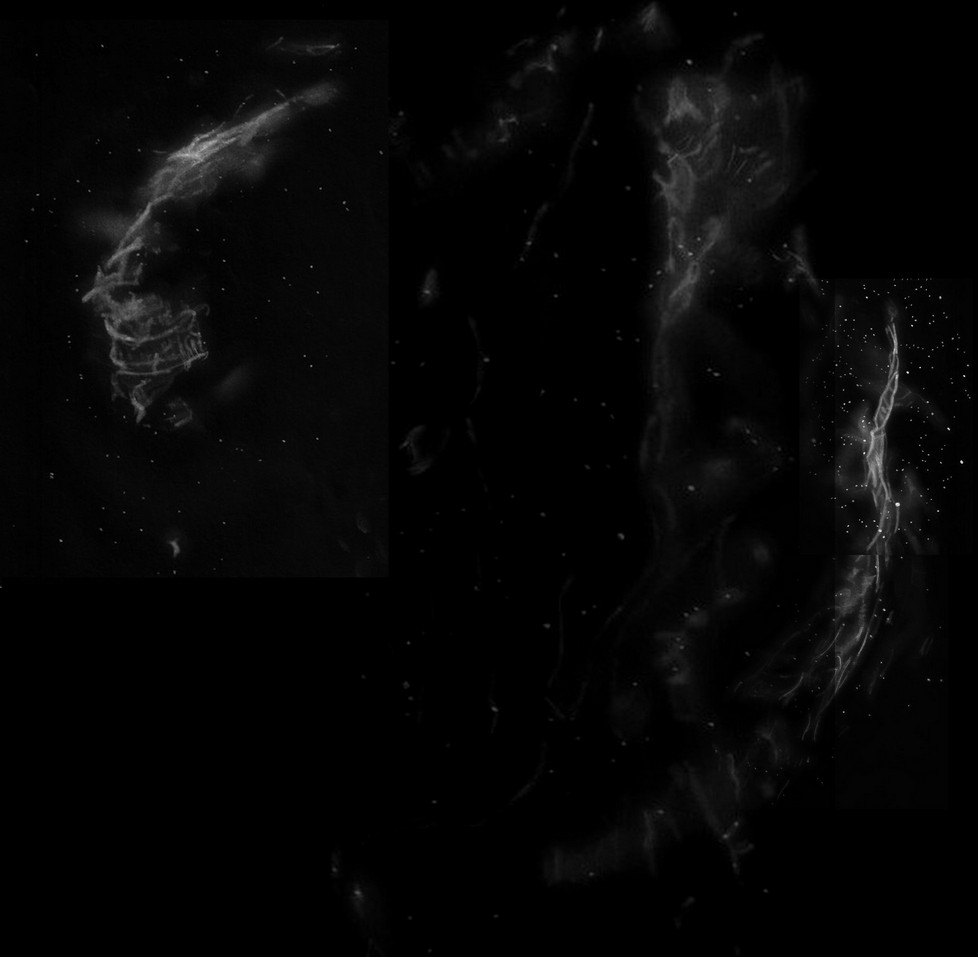

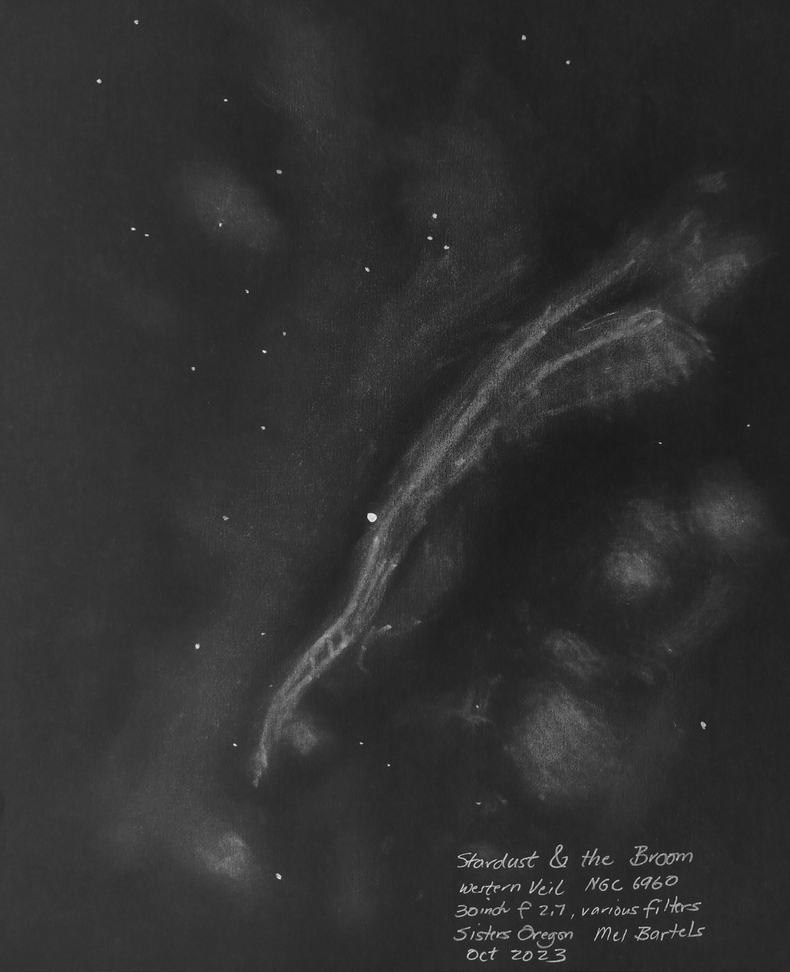


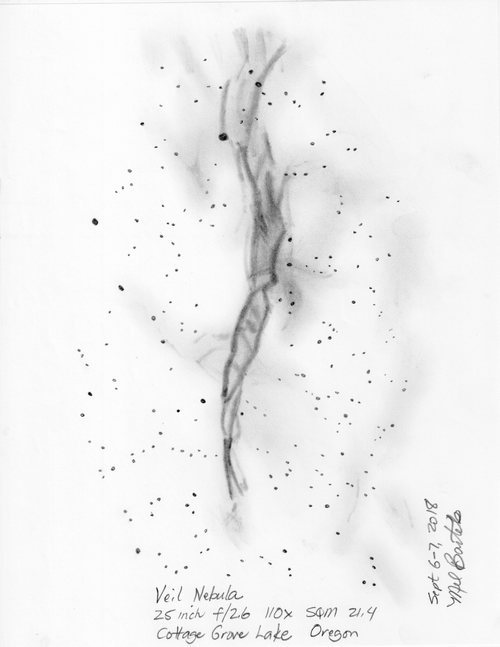



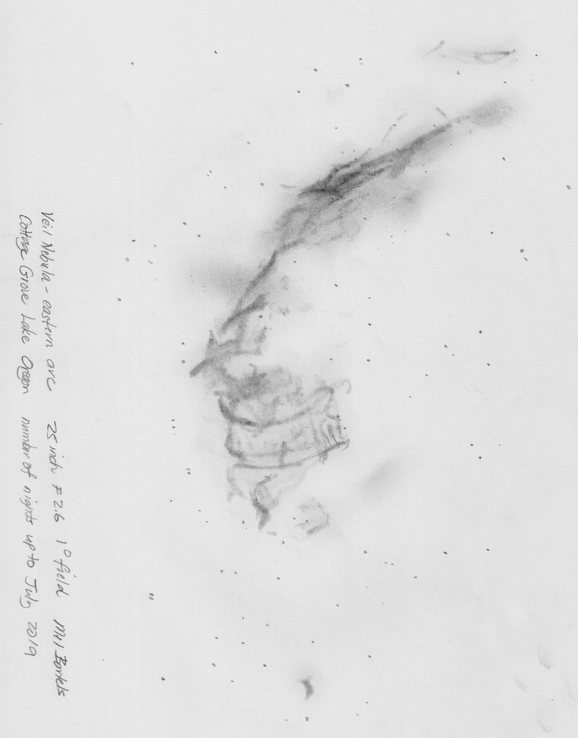


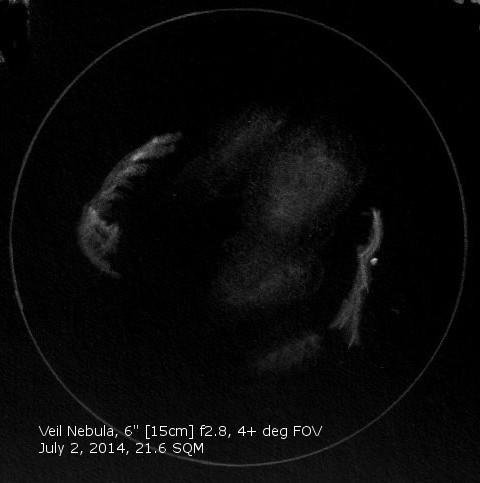

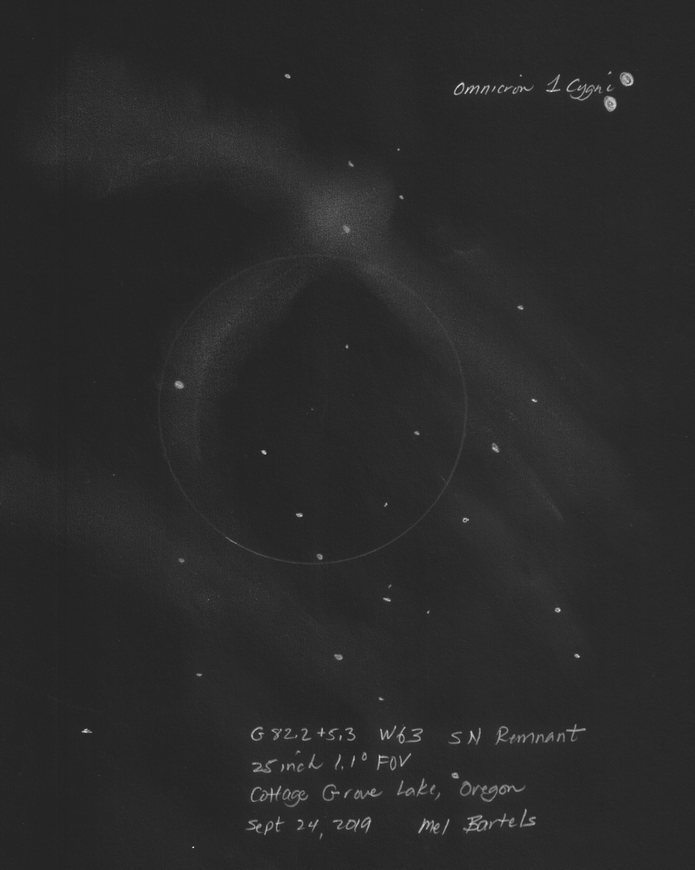

![]()
![]()
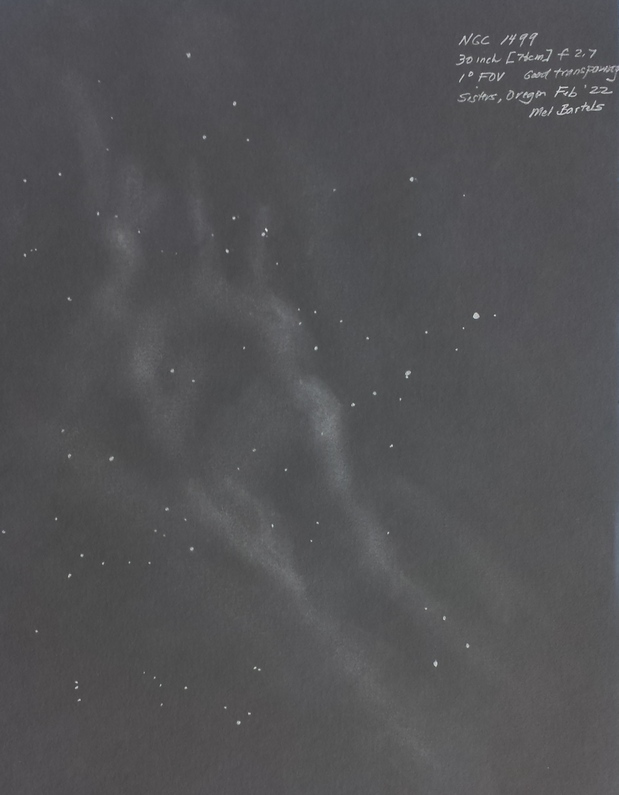

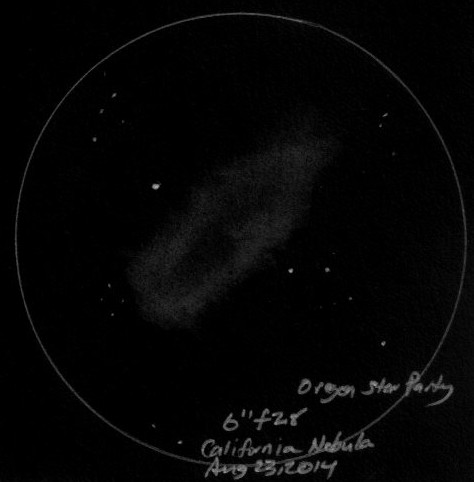



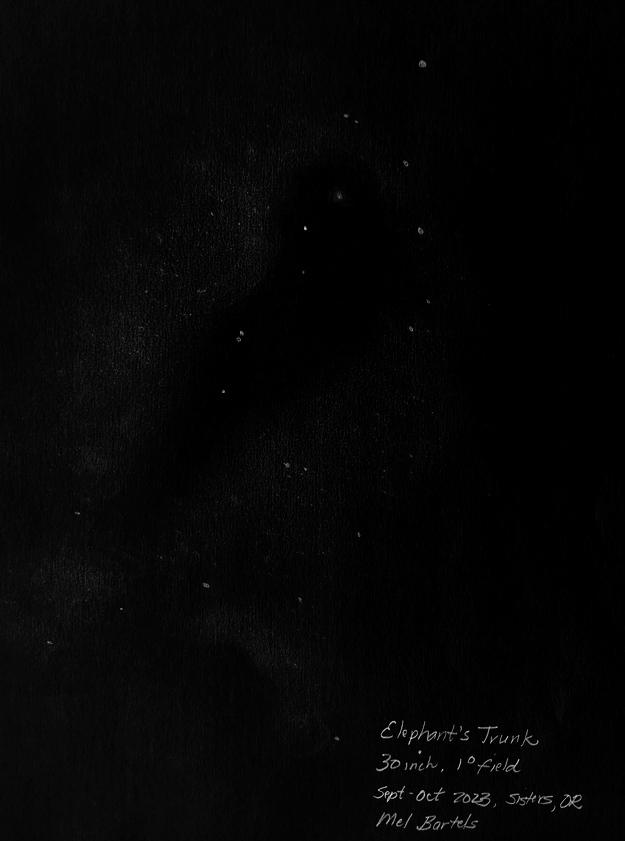

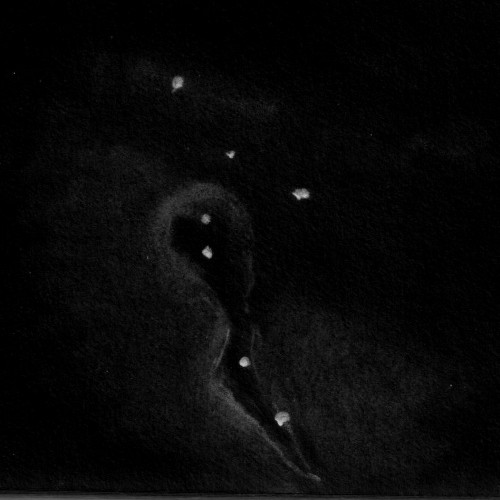

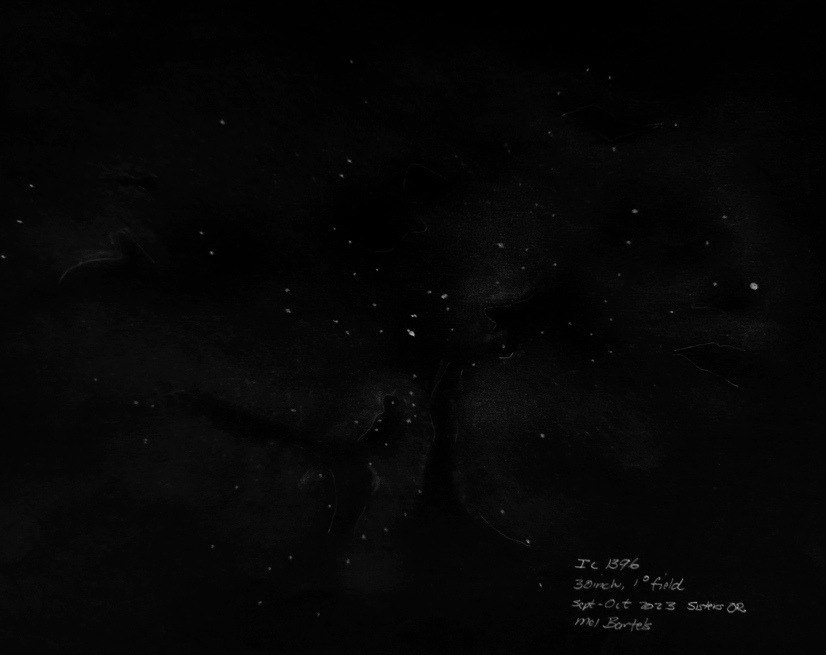

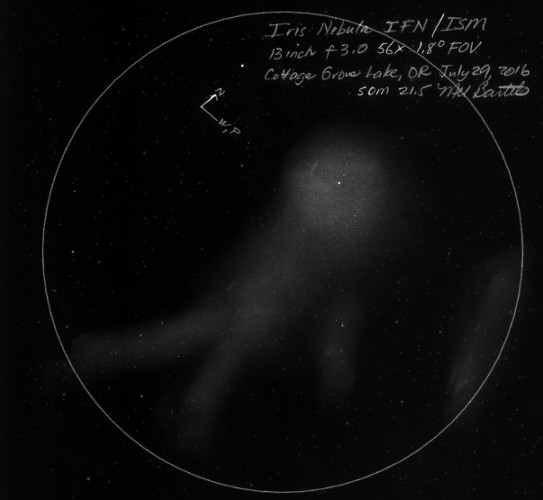


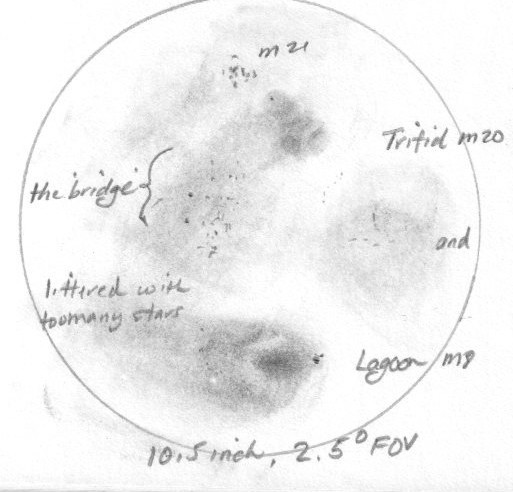

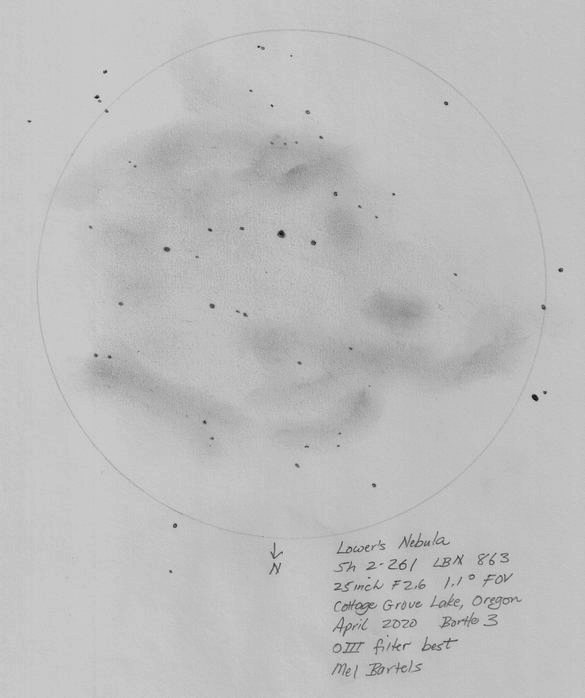
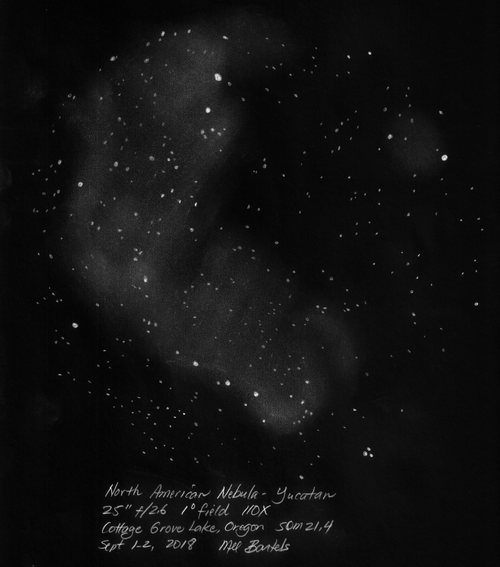



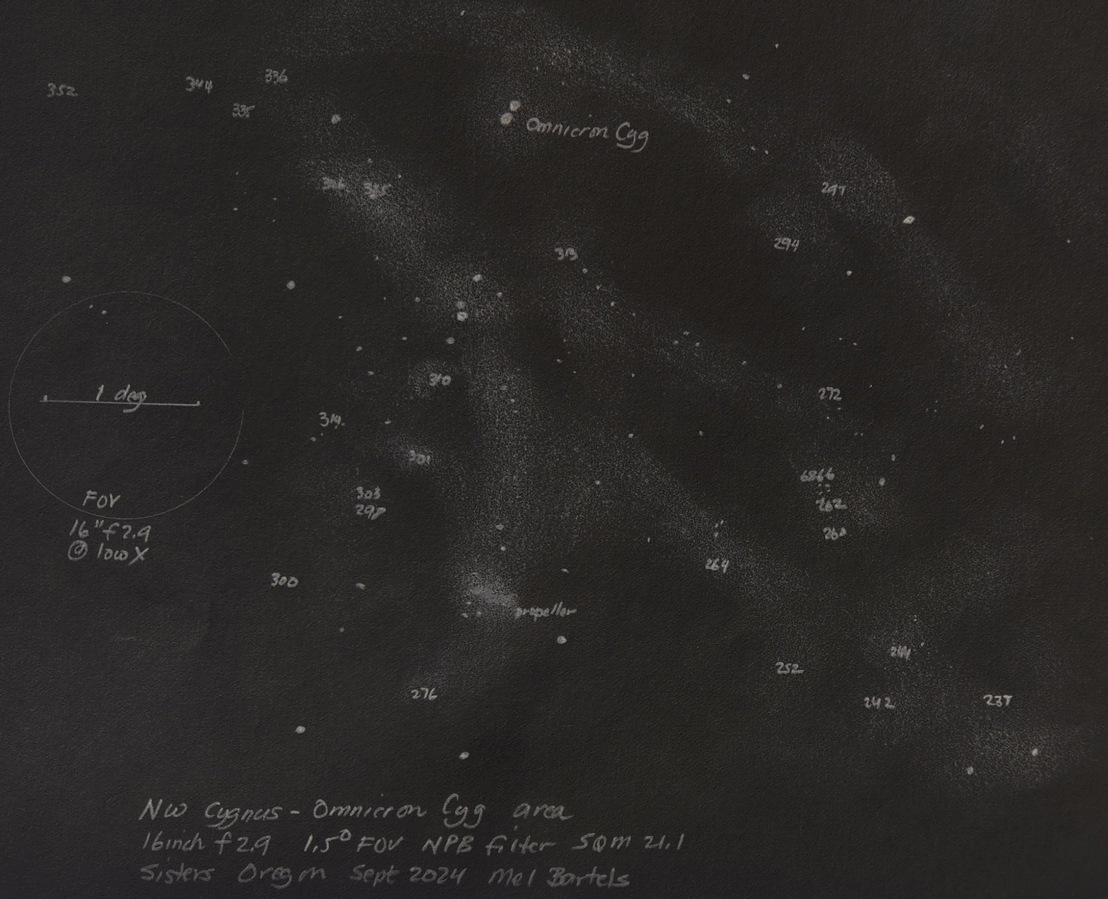

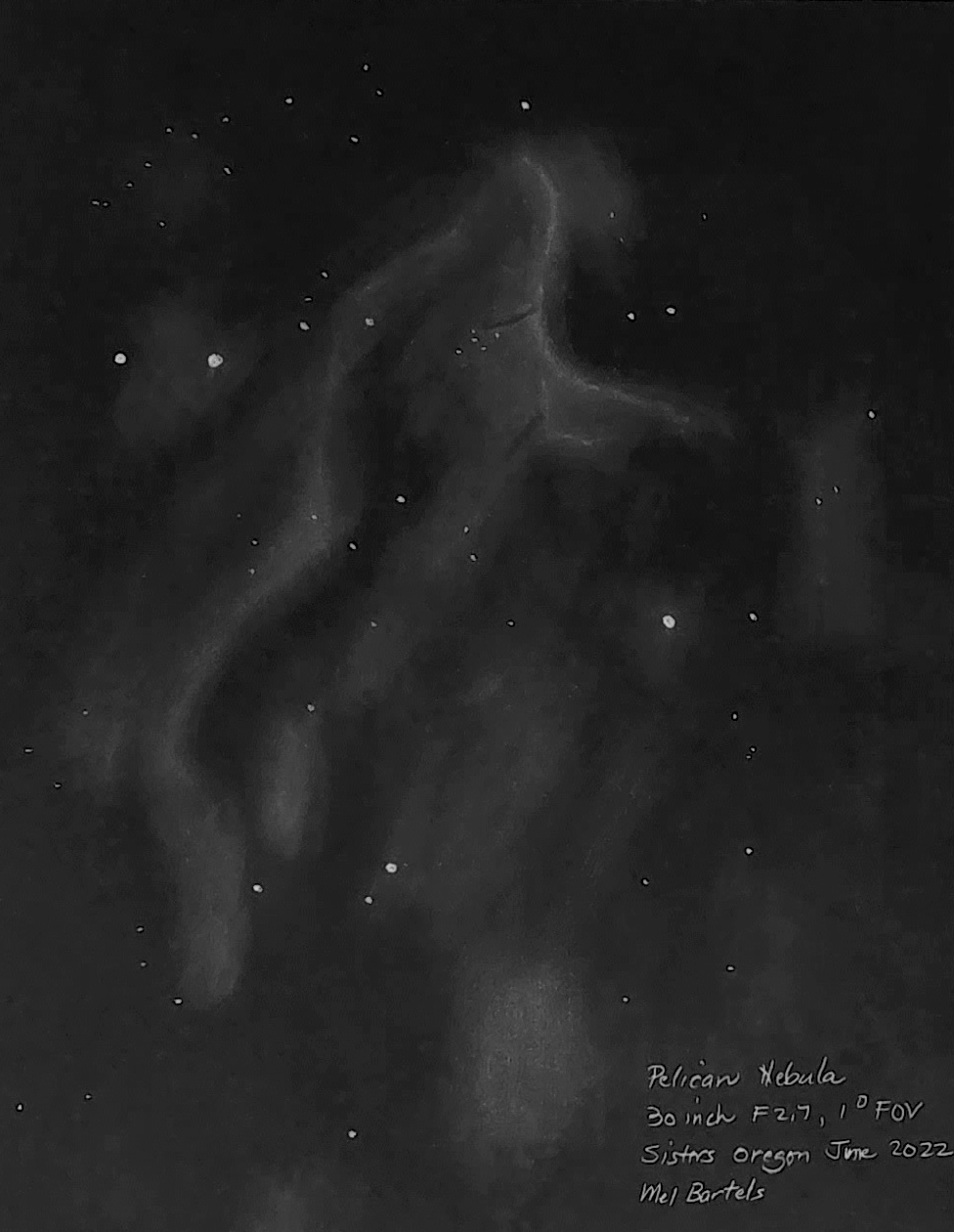


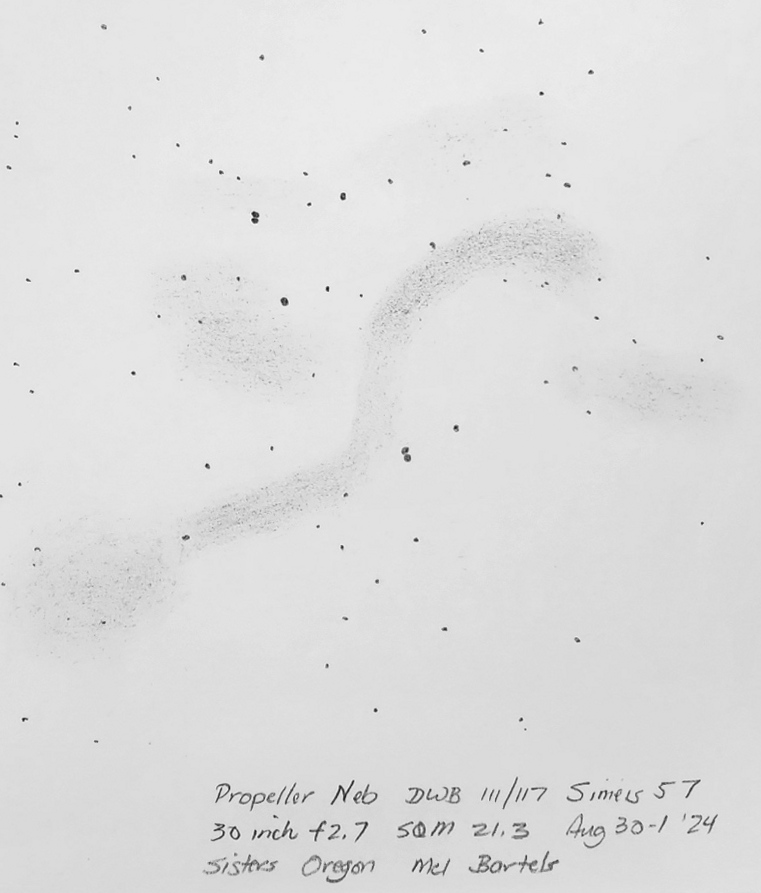
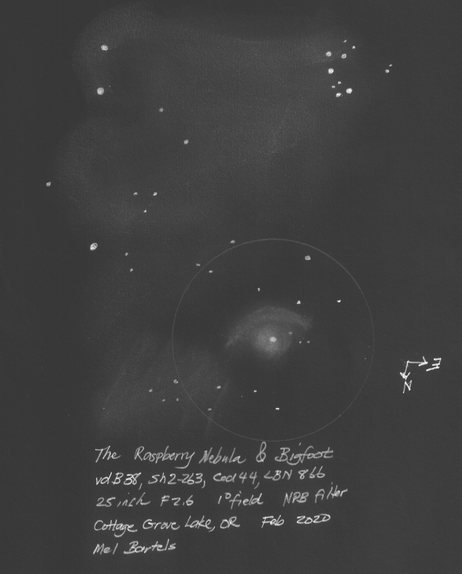

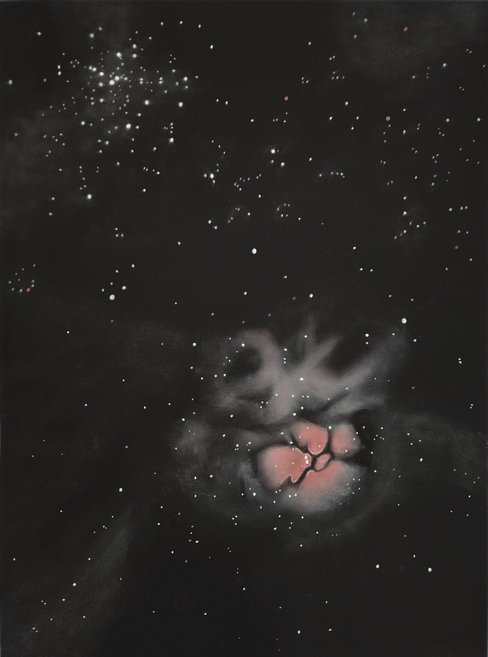

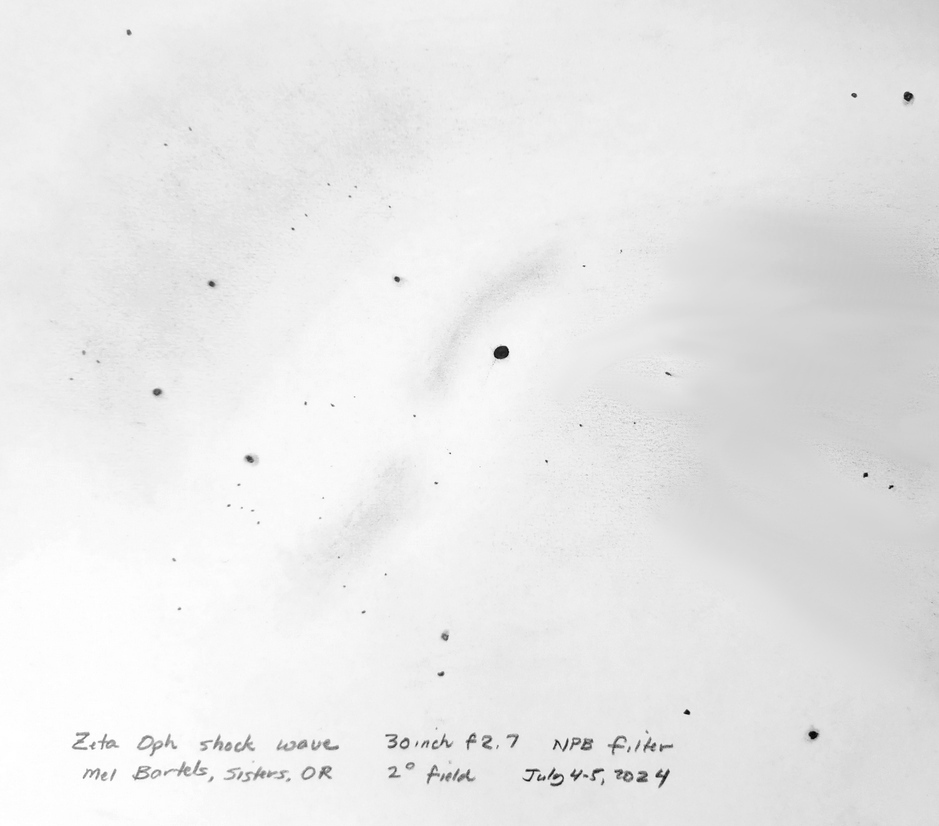
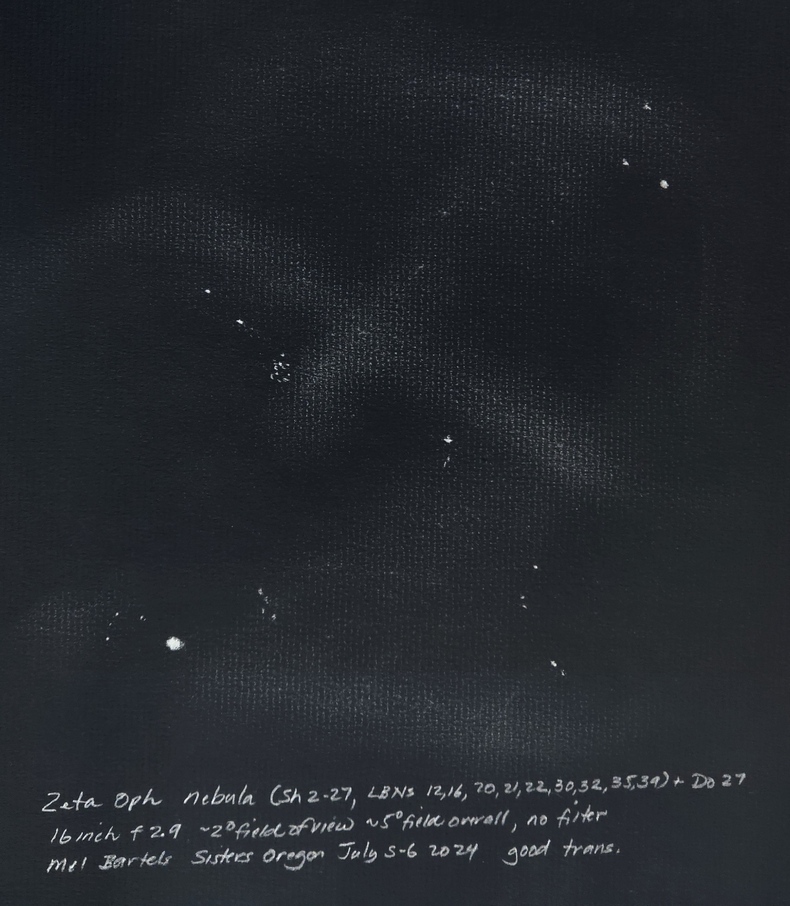

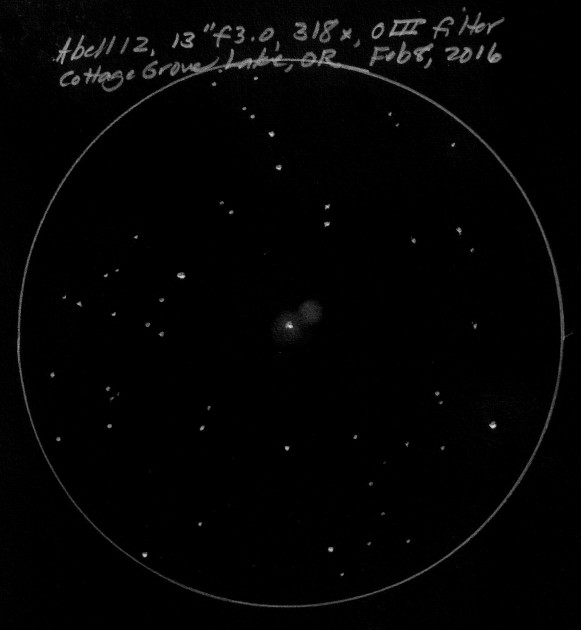

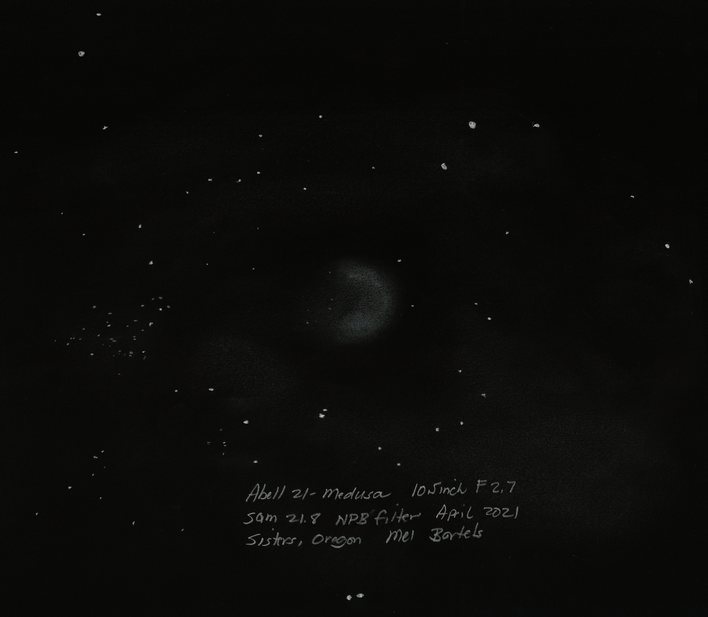

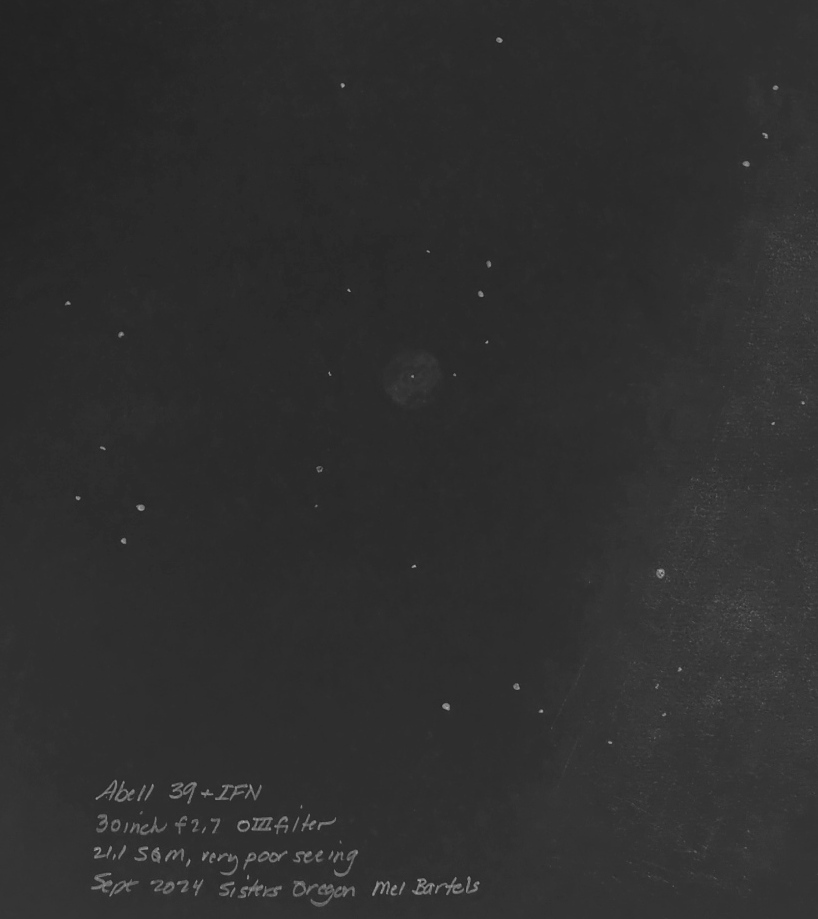

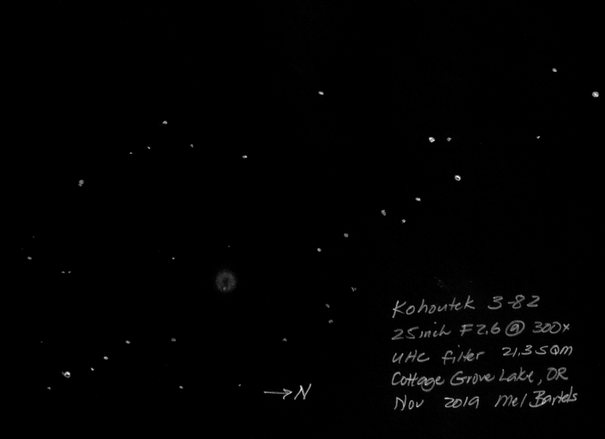


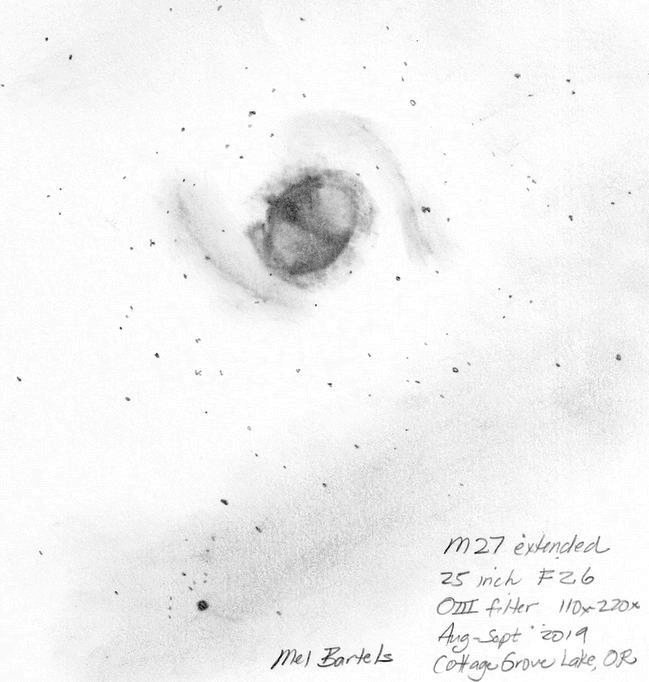


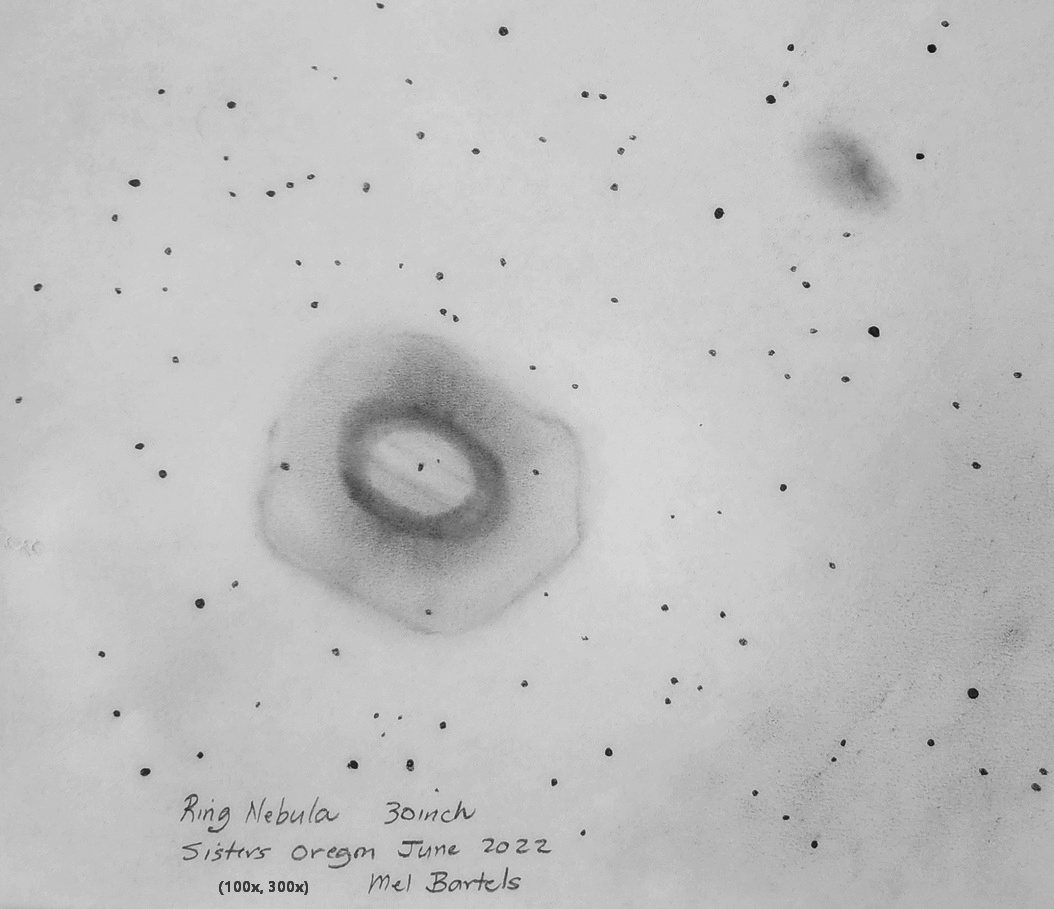
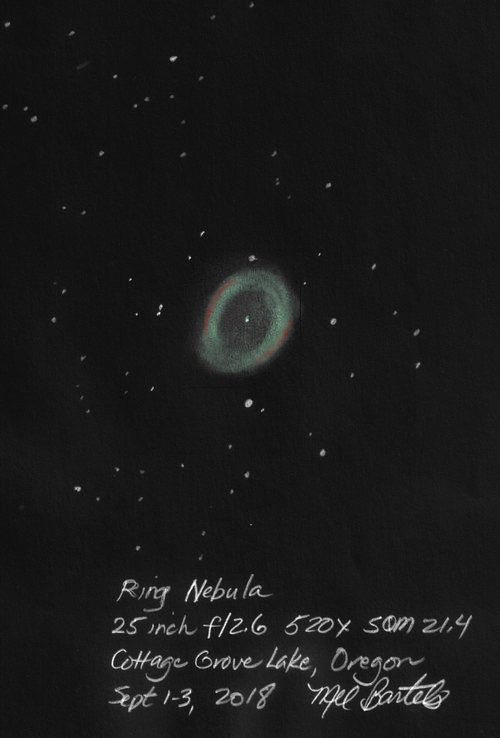
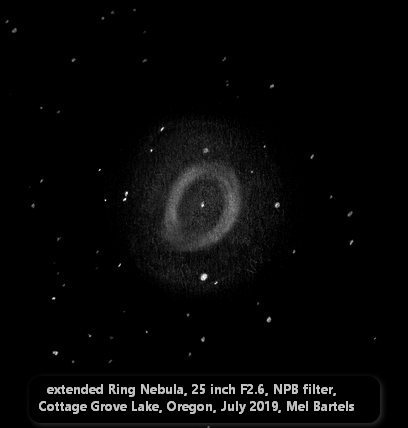

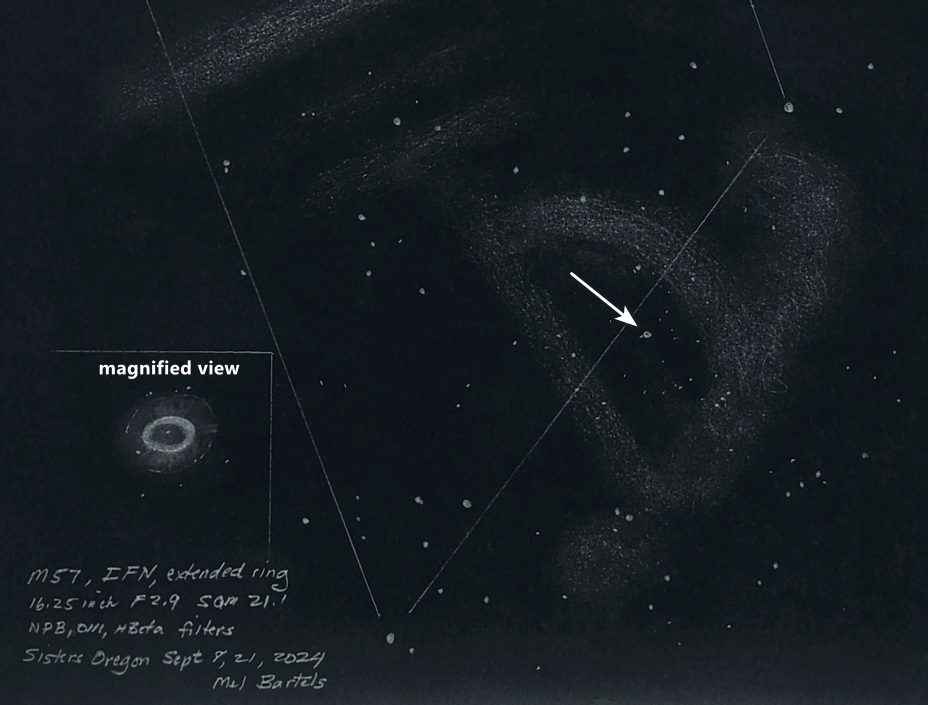

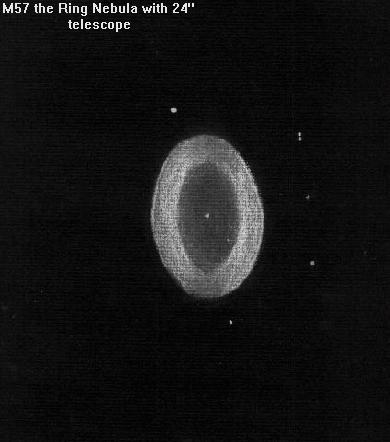
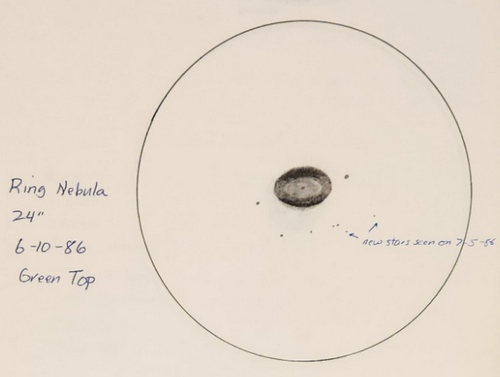
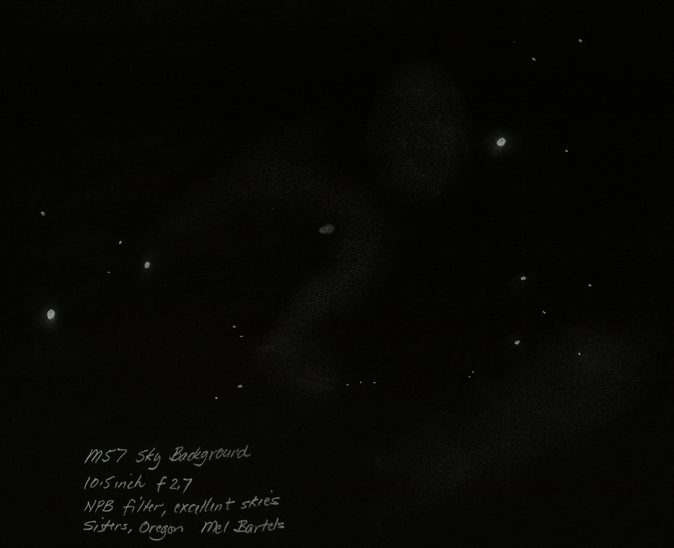

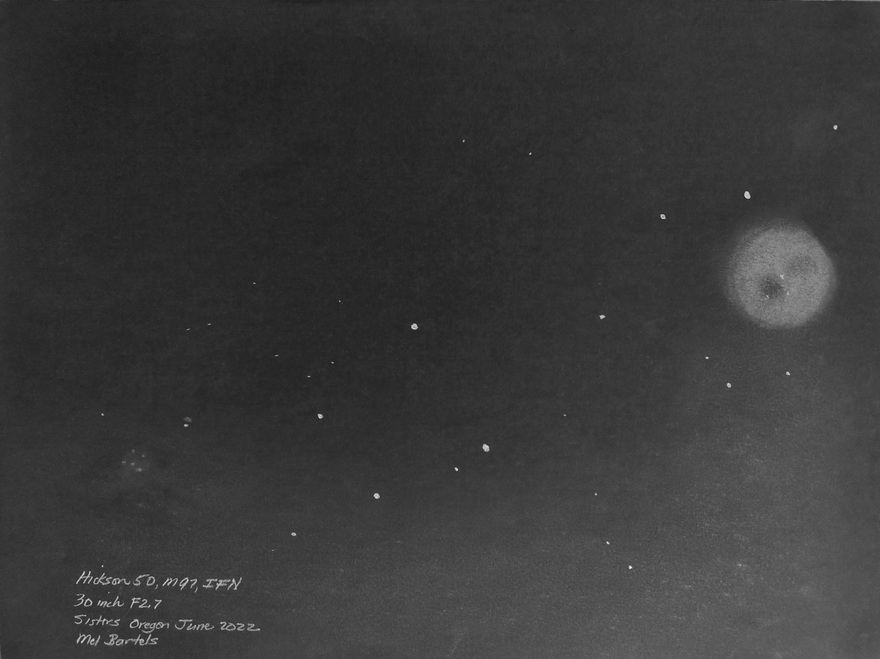

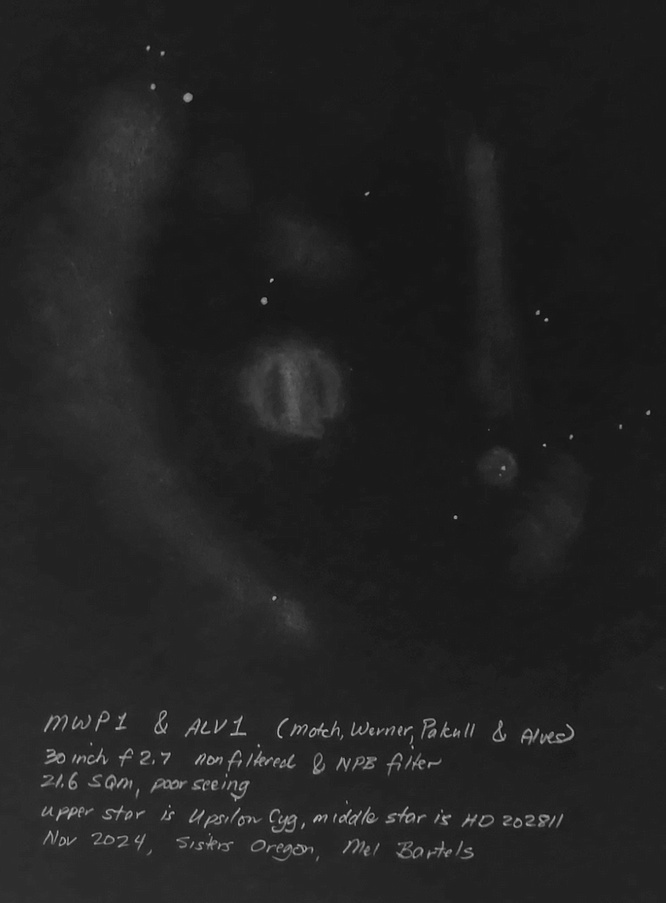

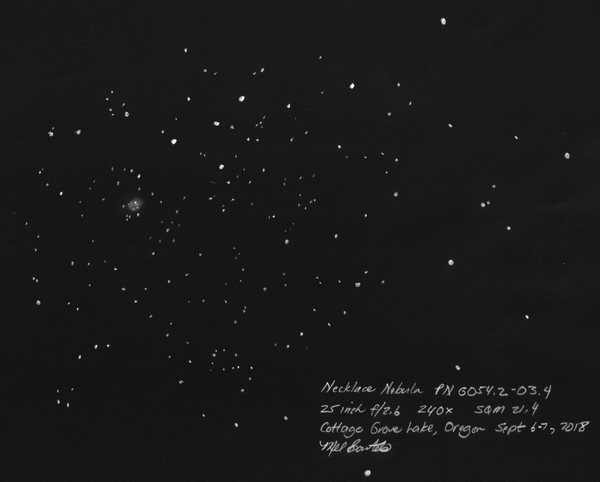


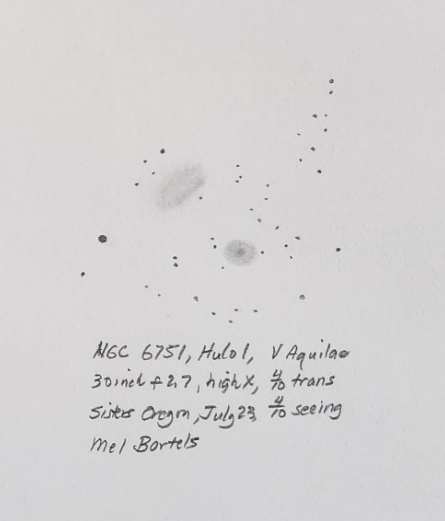
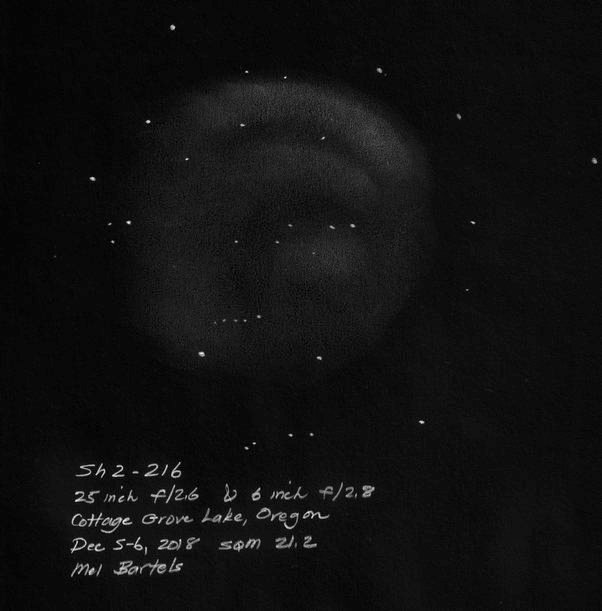

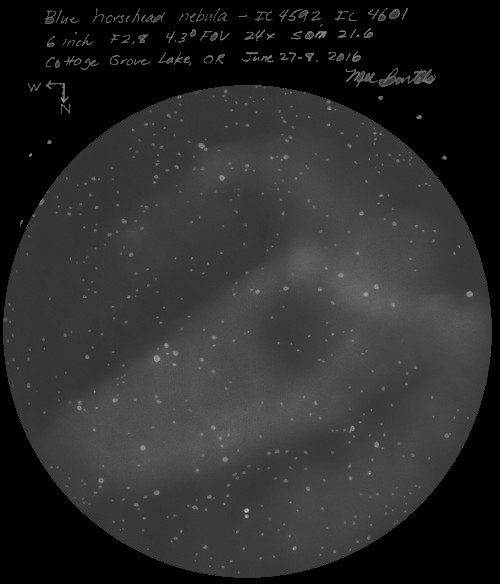

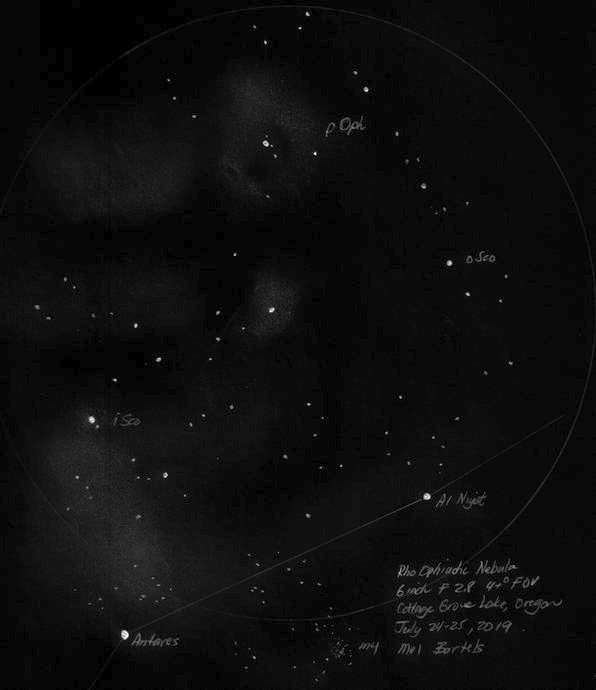

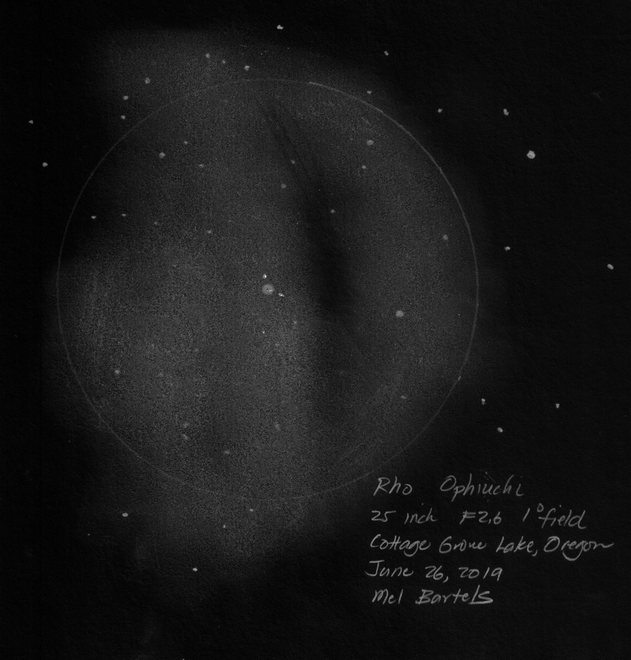

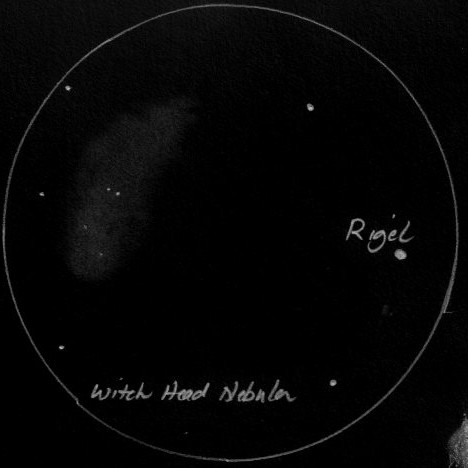


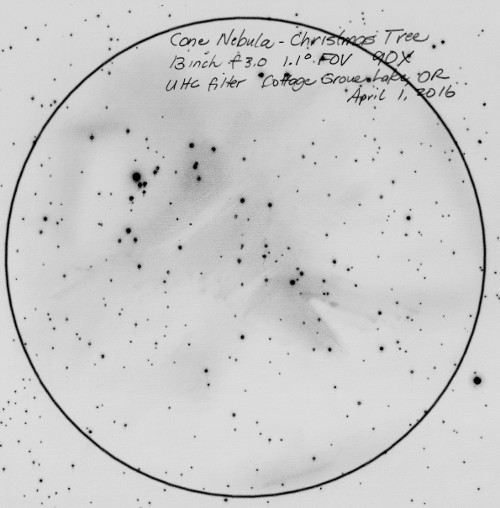
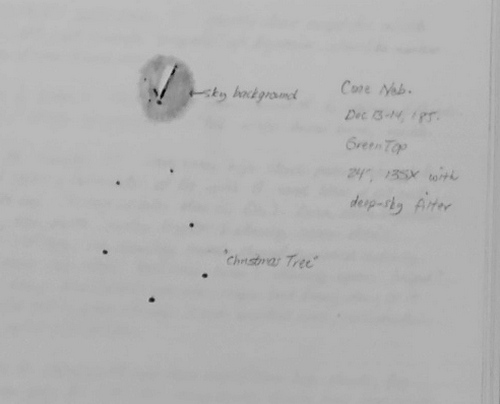


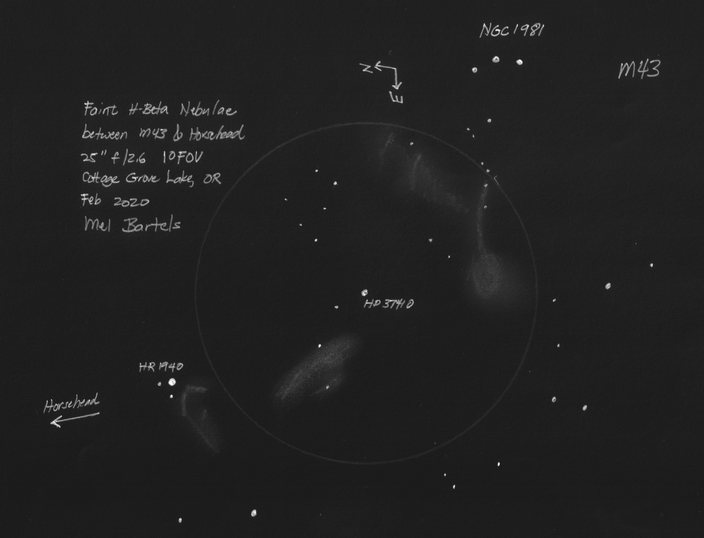



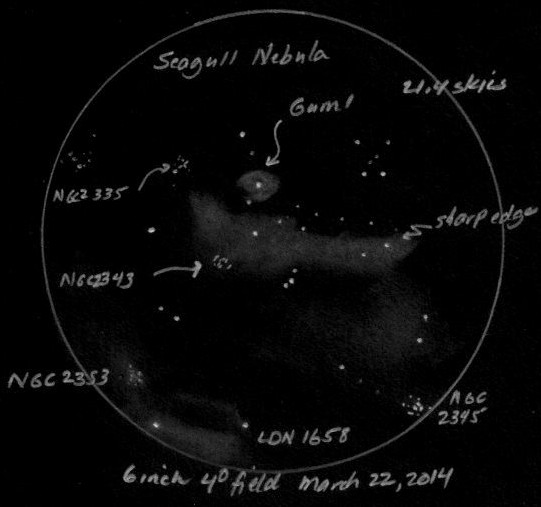

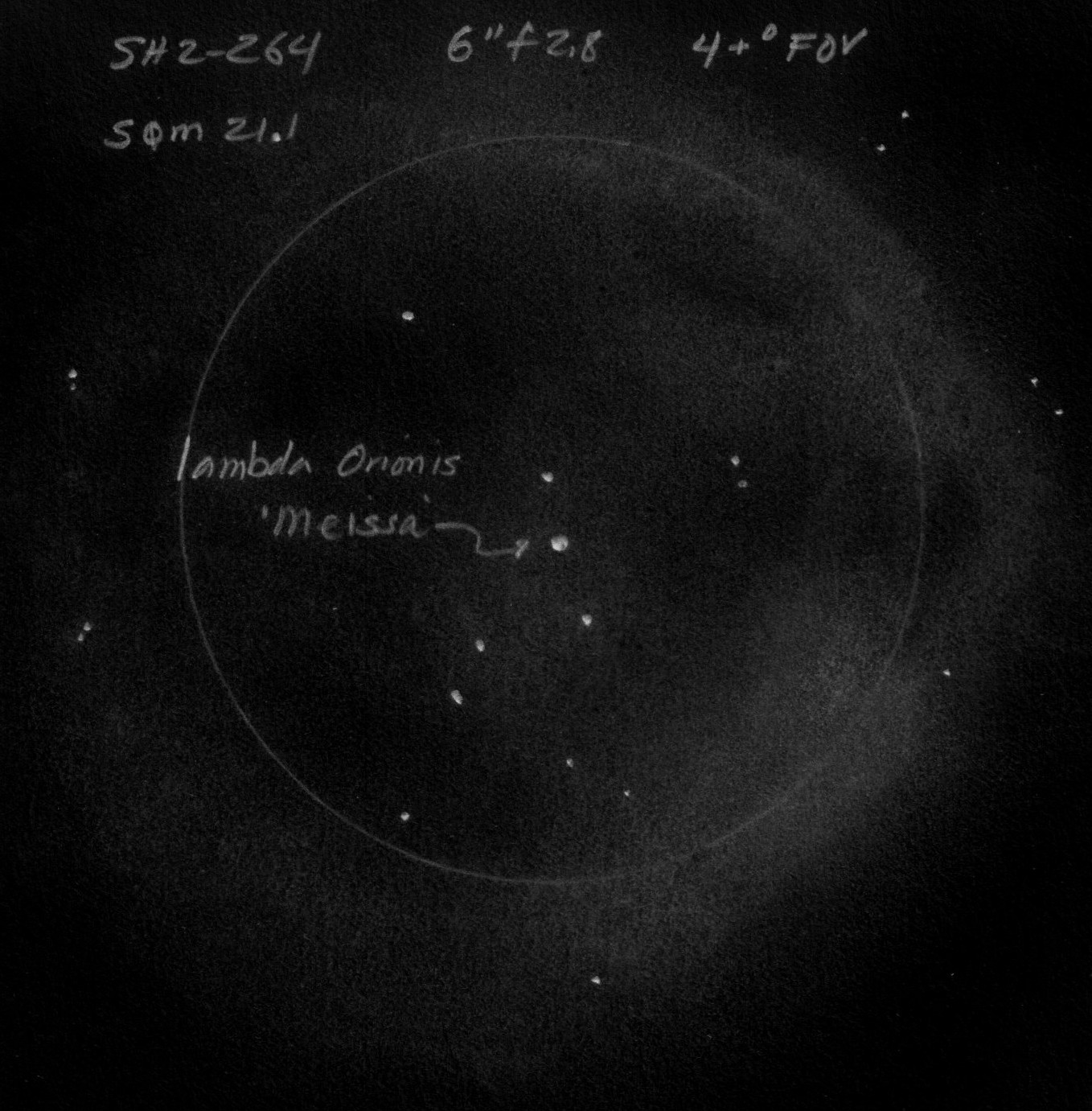

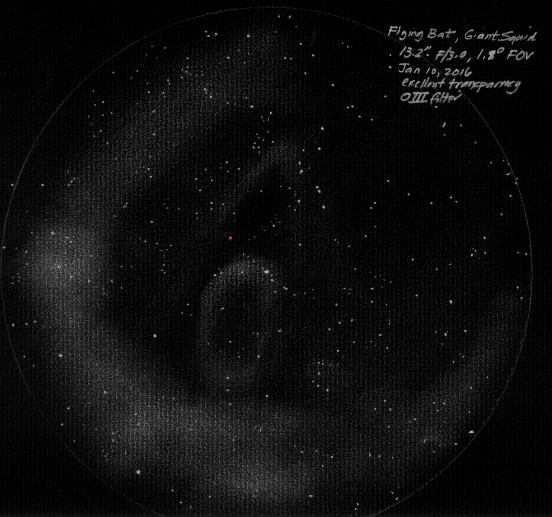

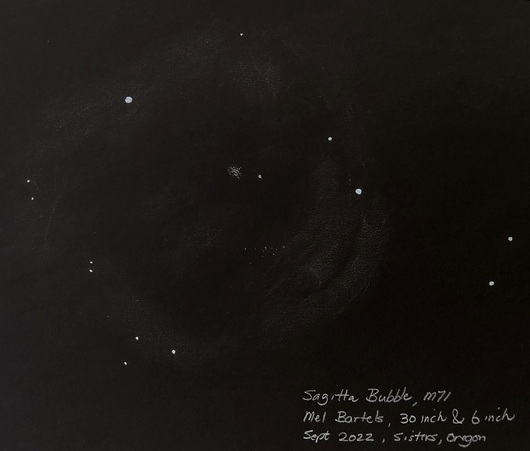

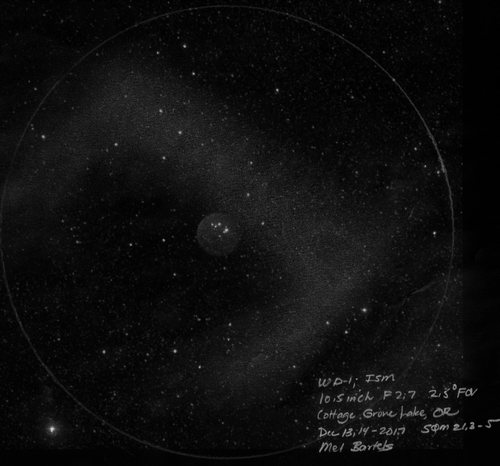

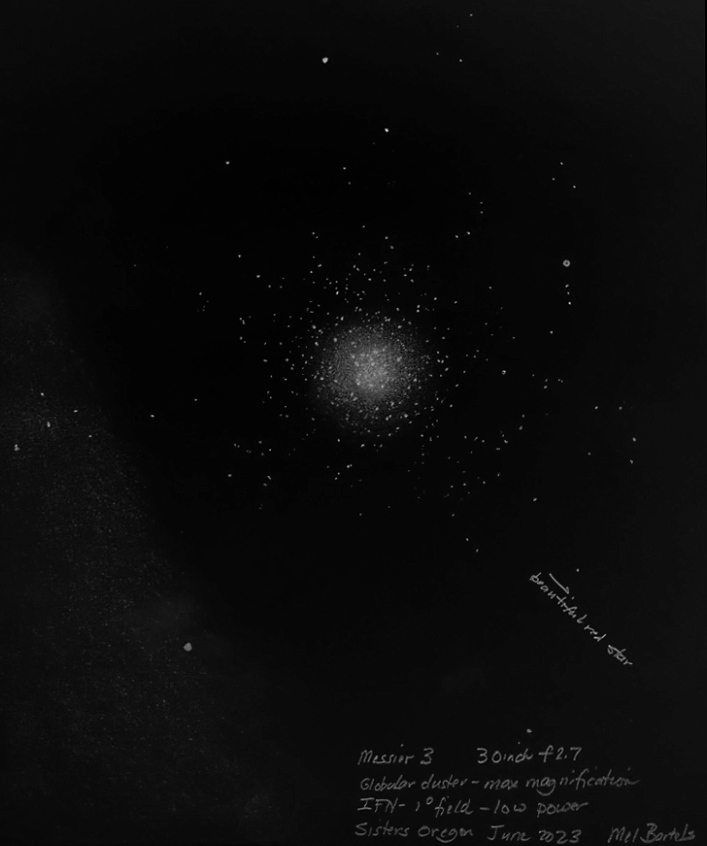

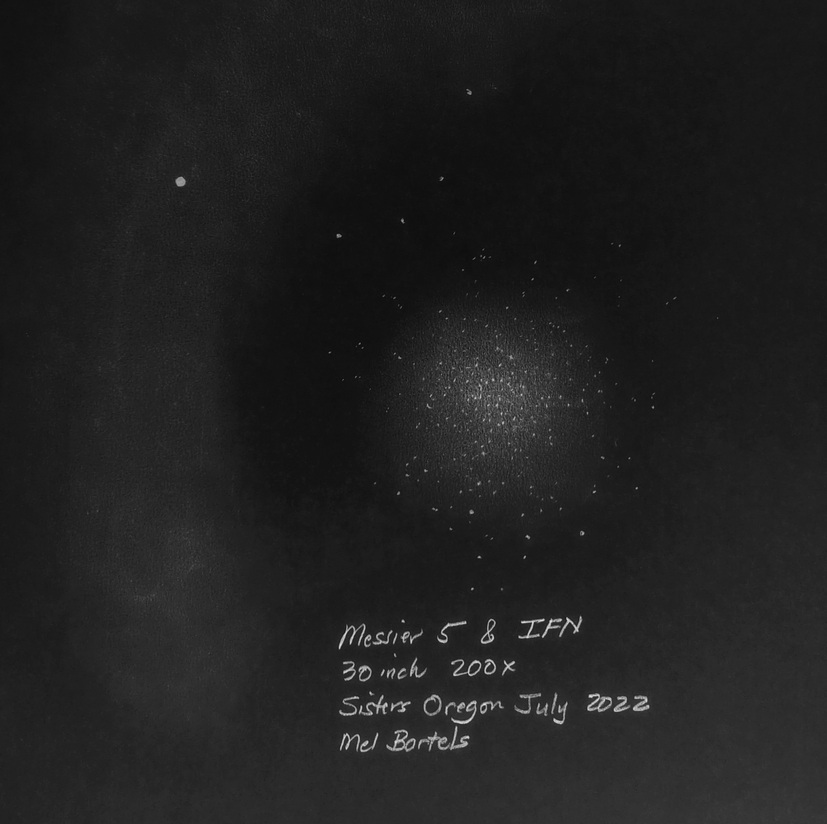


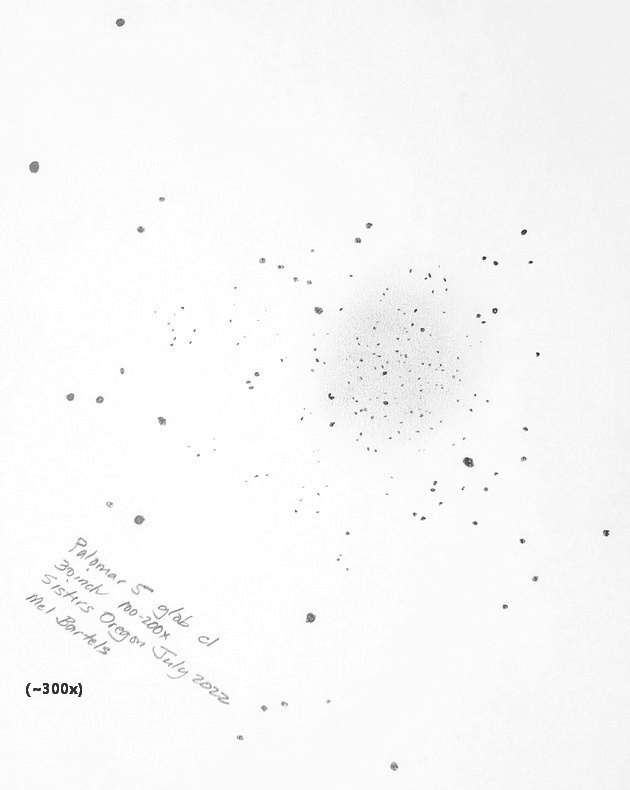
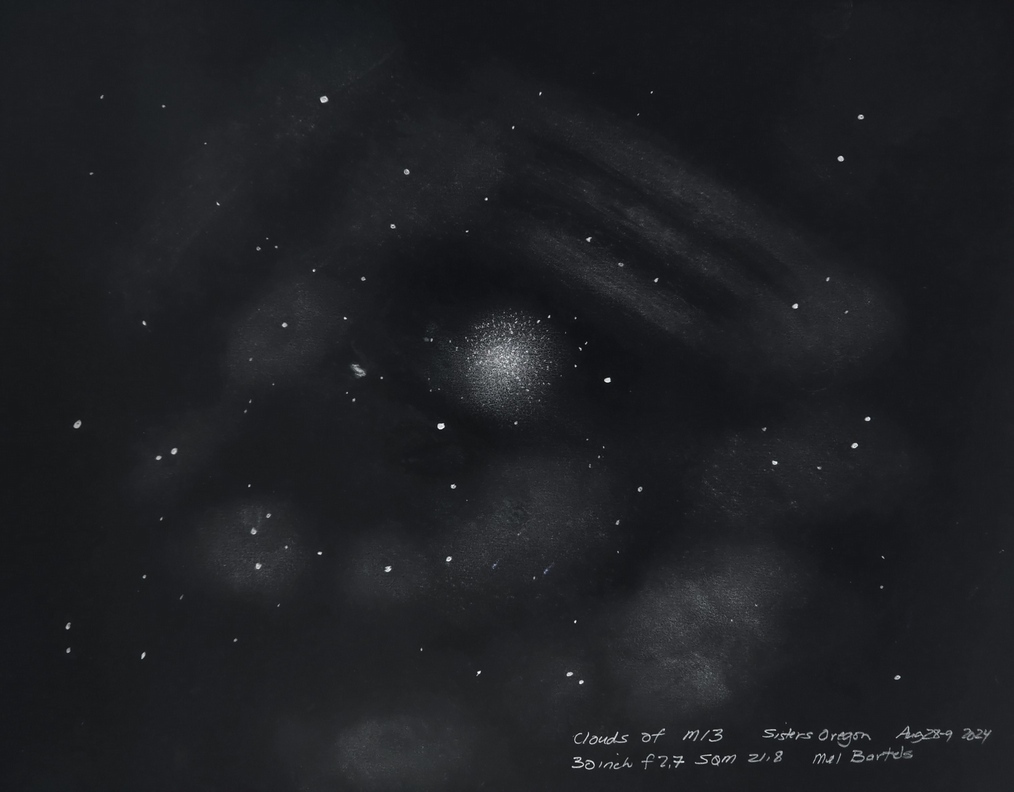

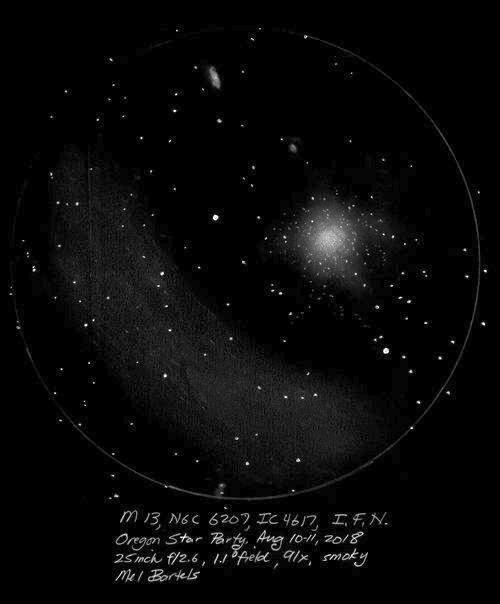




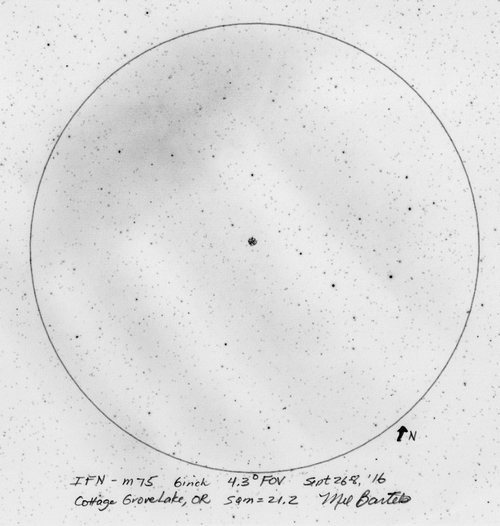
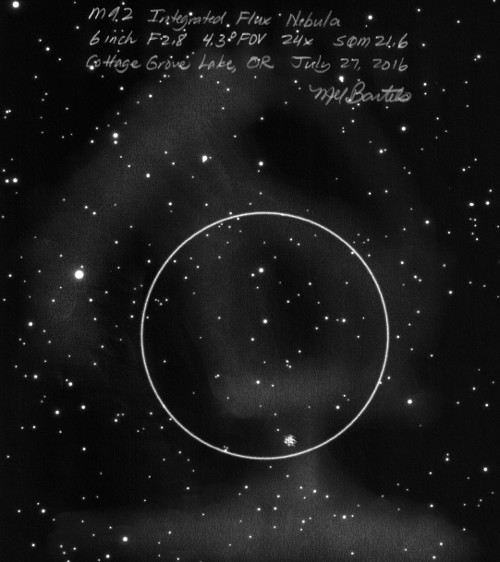

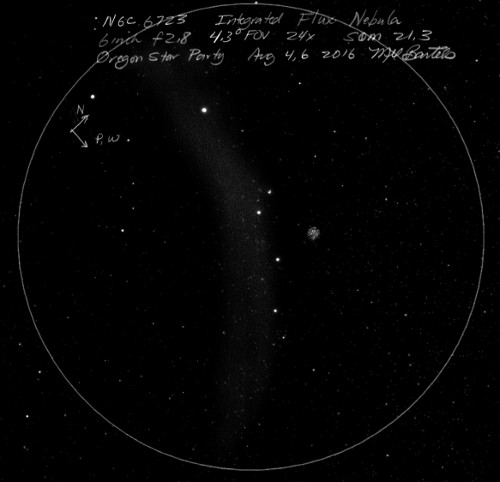



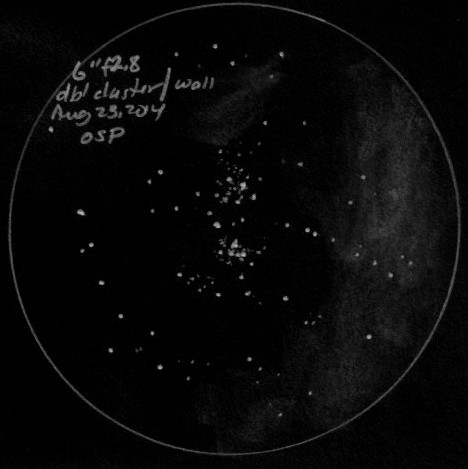

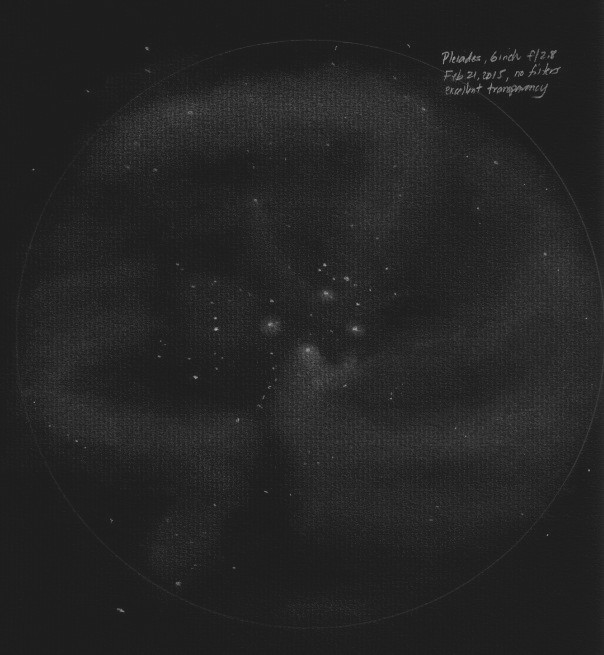

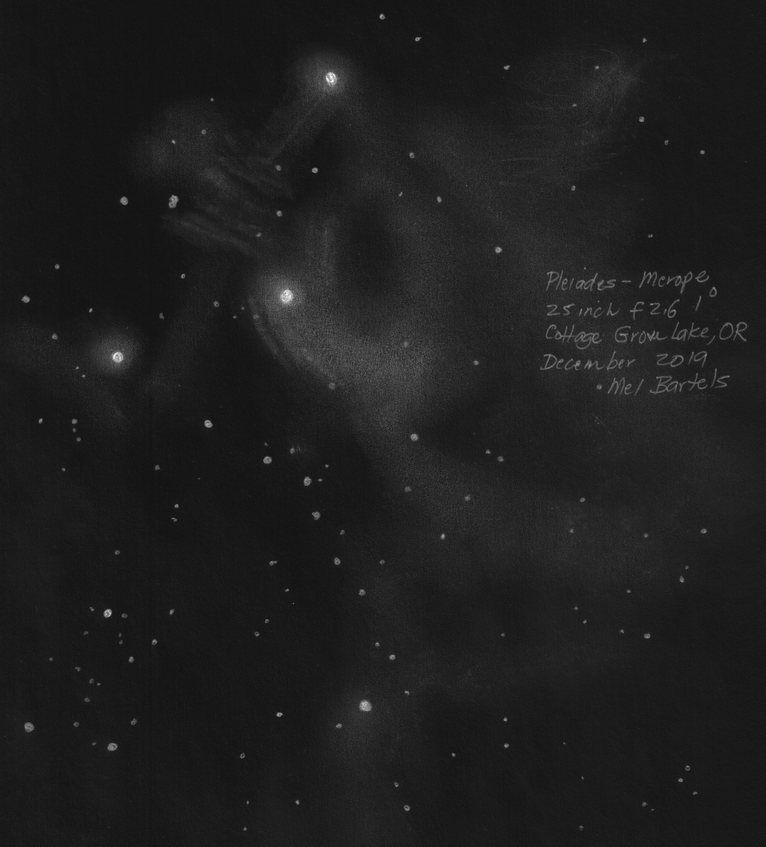

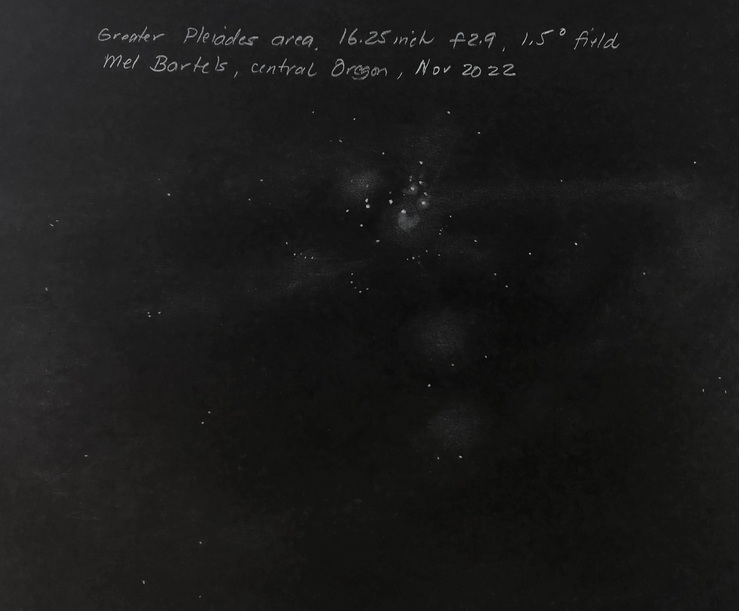


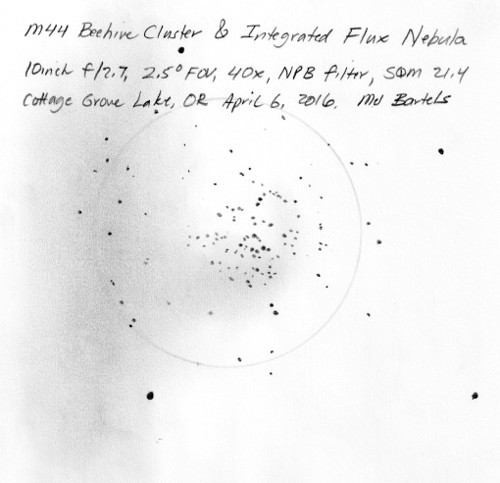
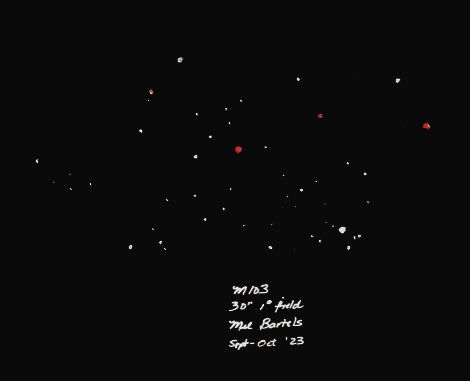
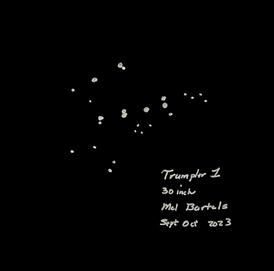
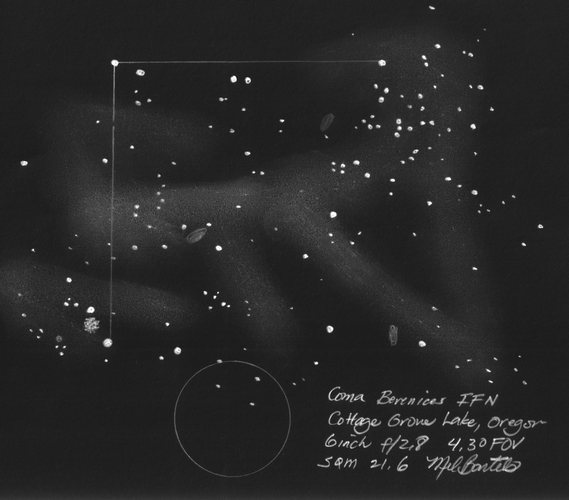

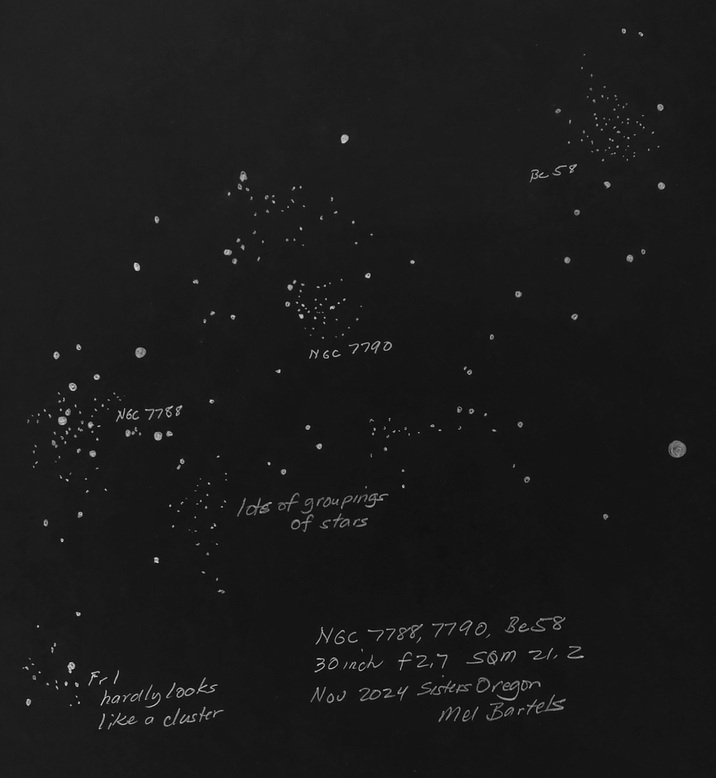


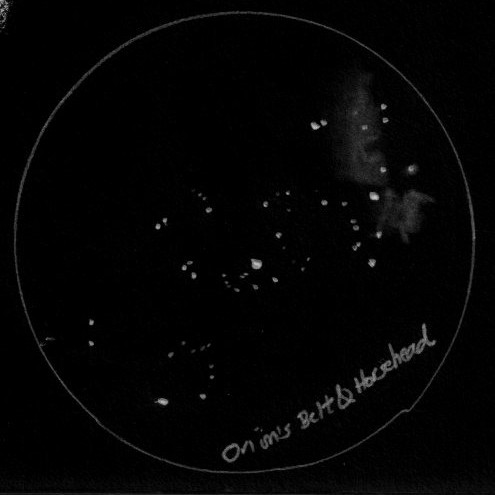





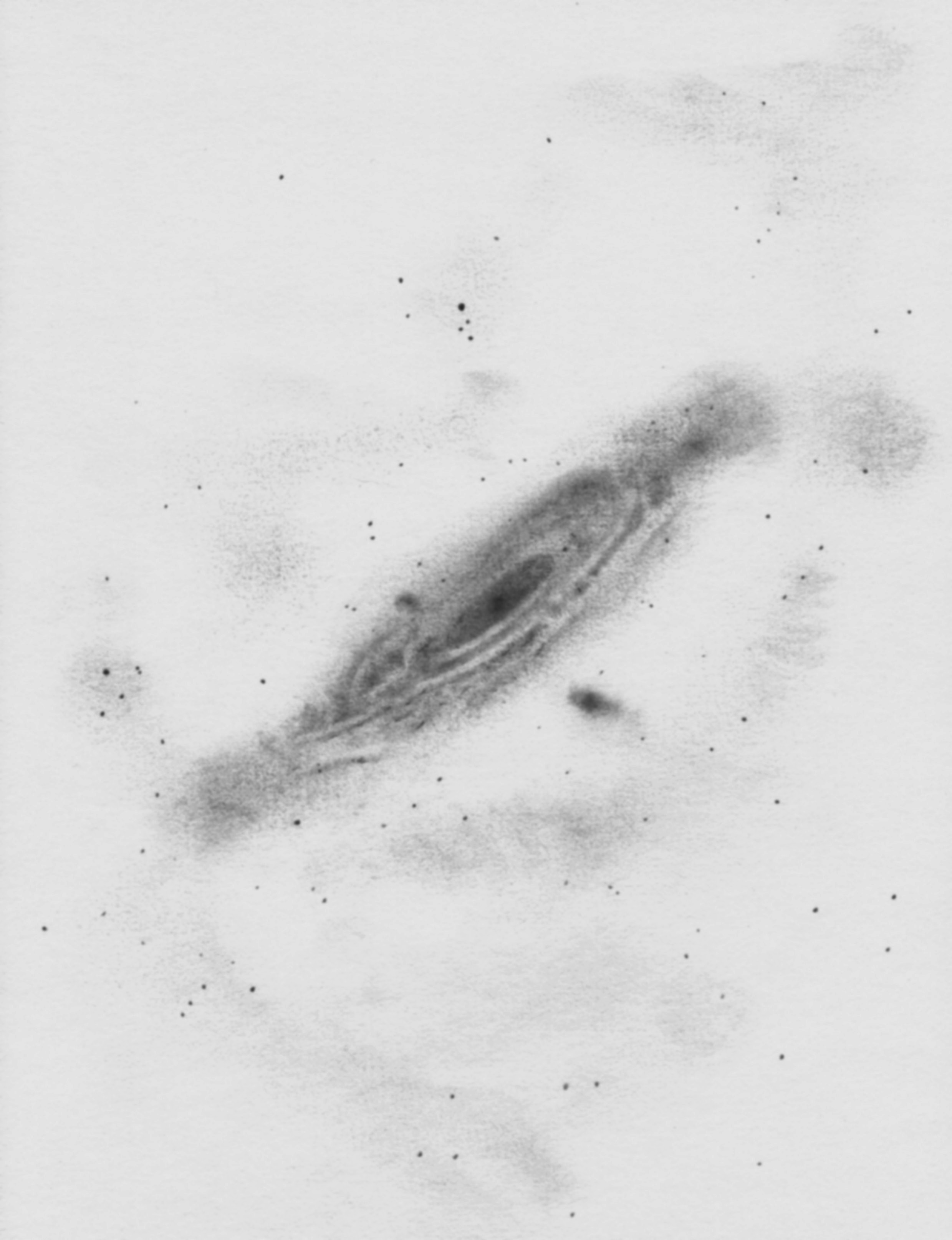
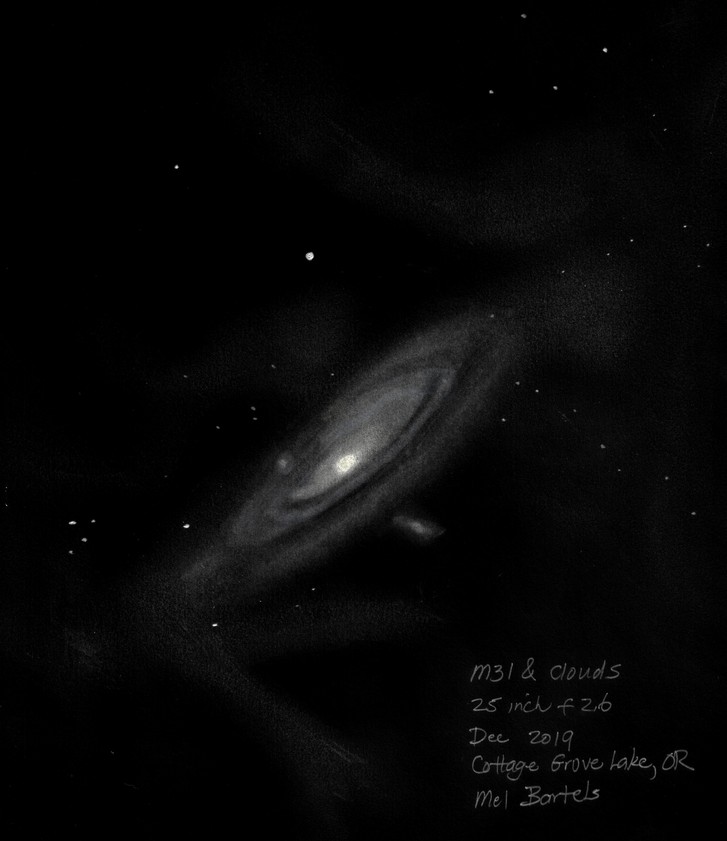



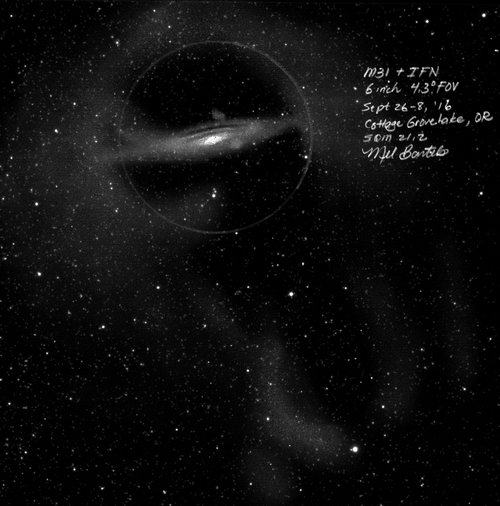


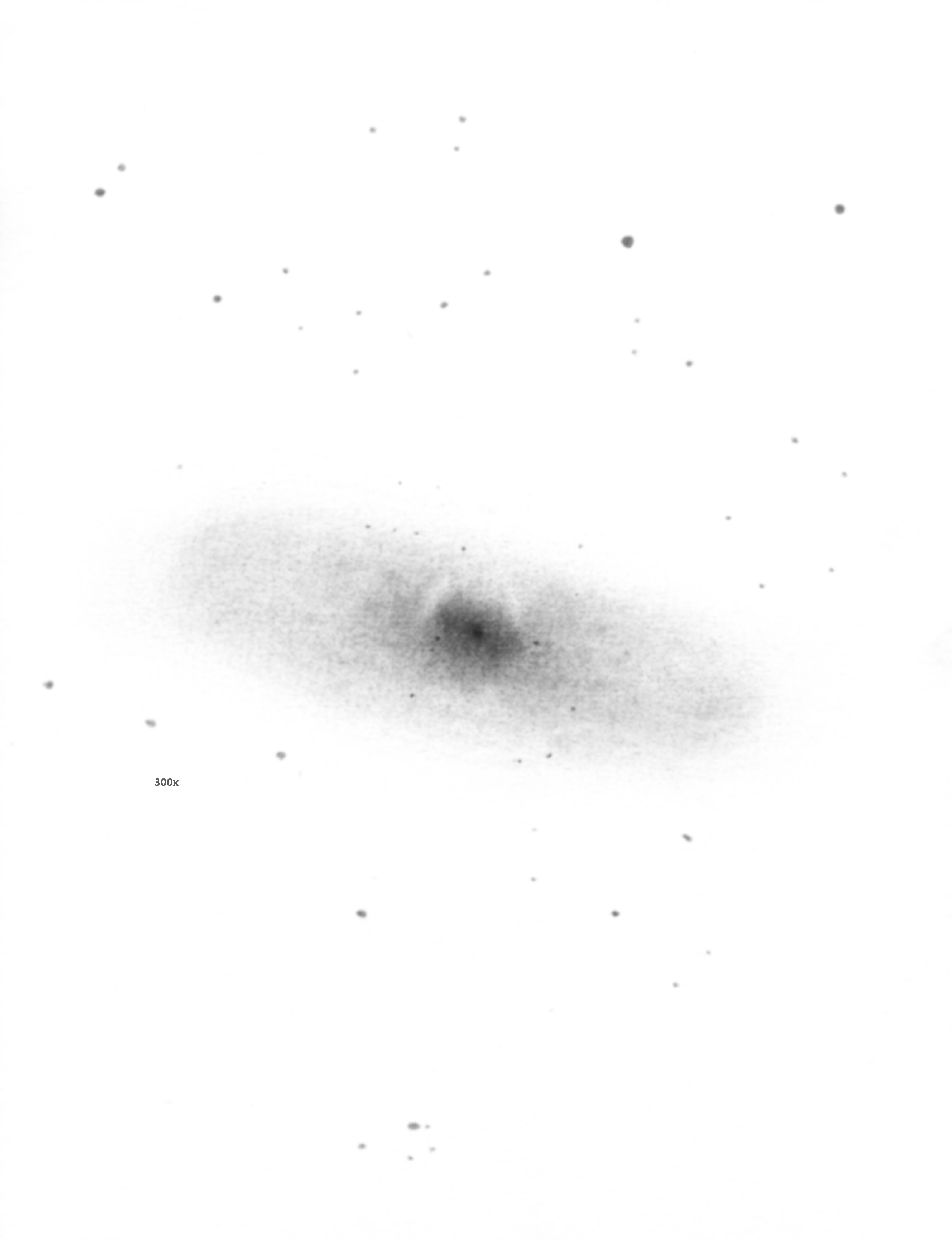
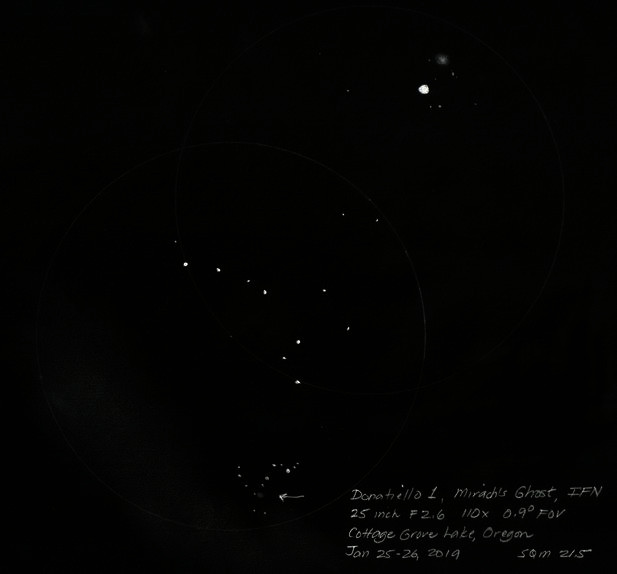

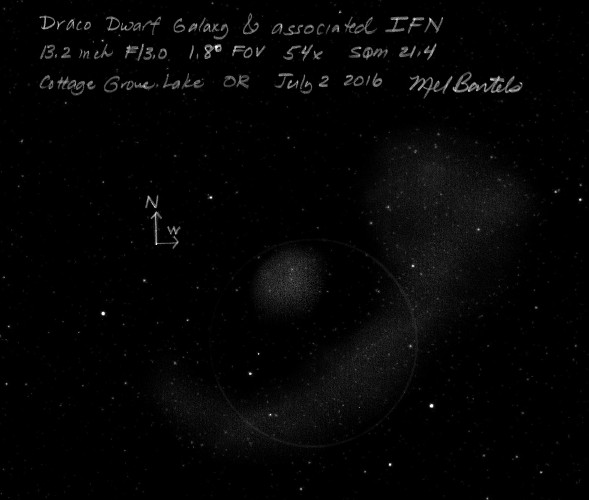

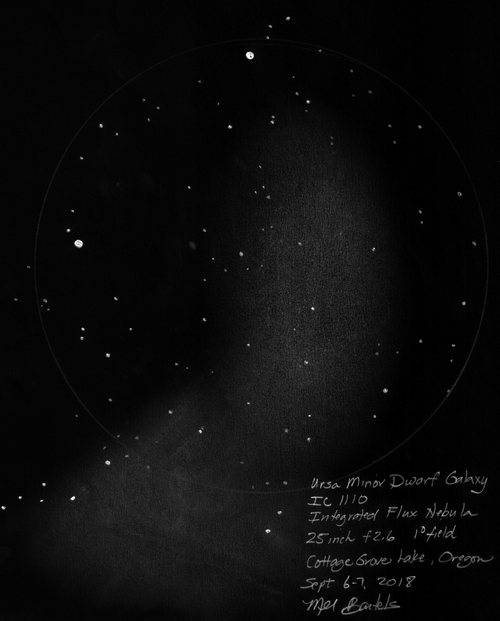

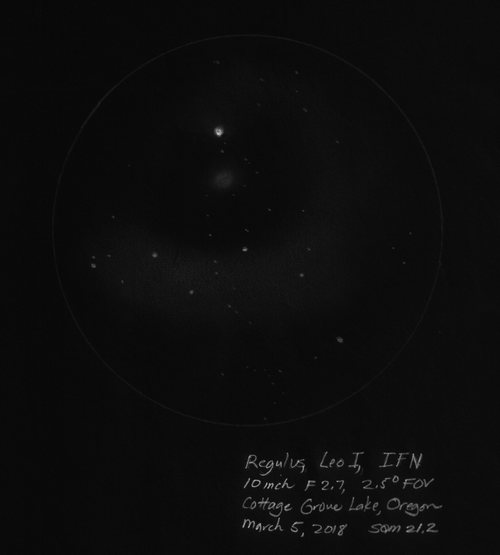

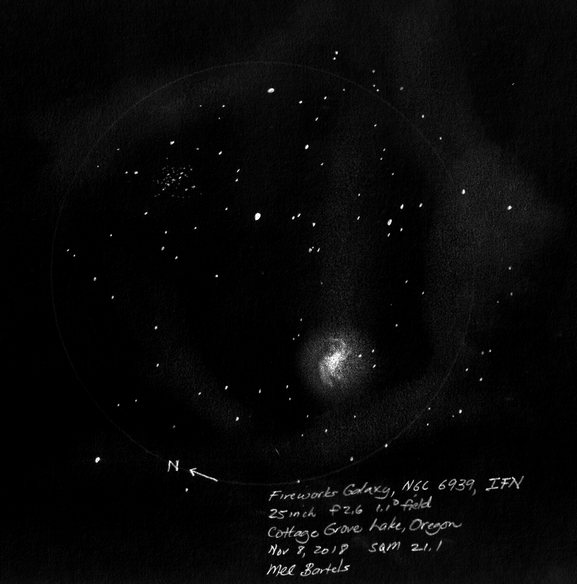

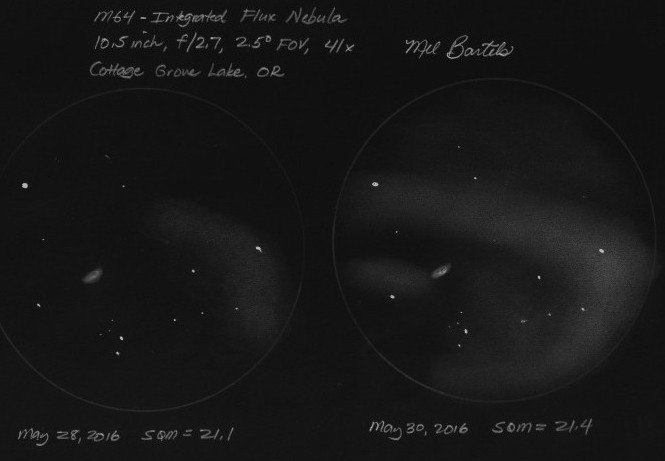

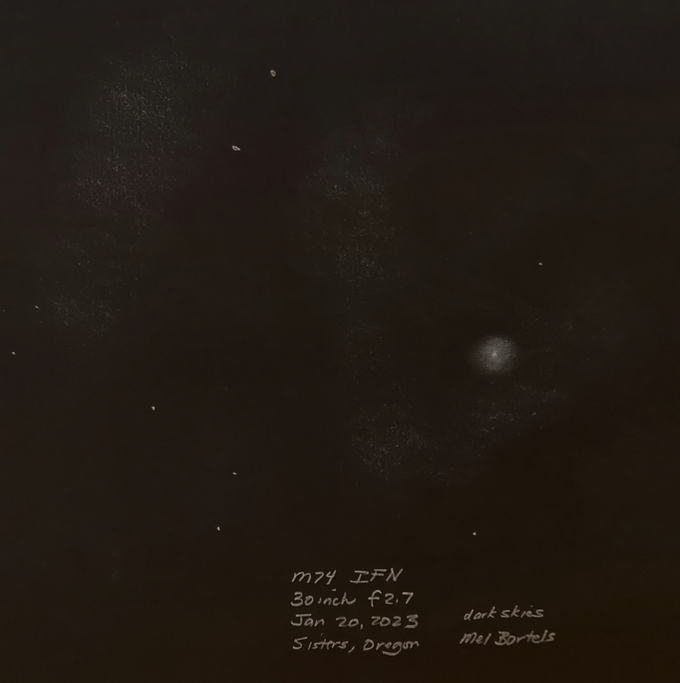

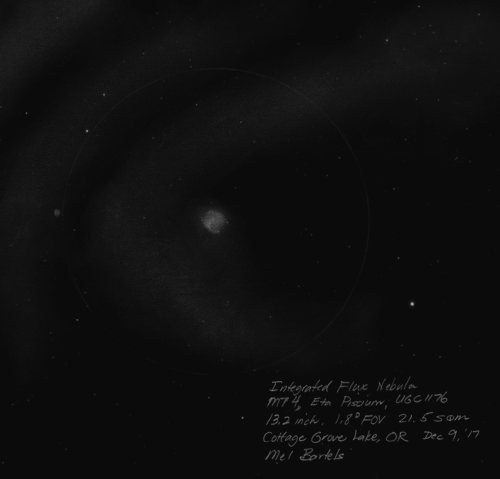

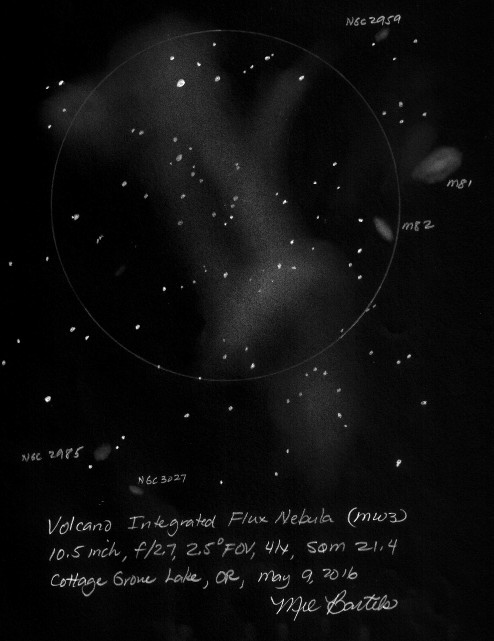



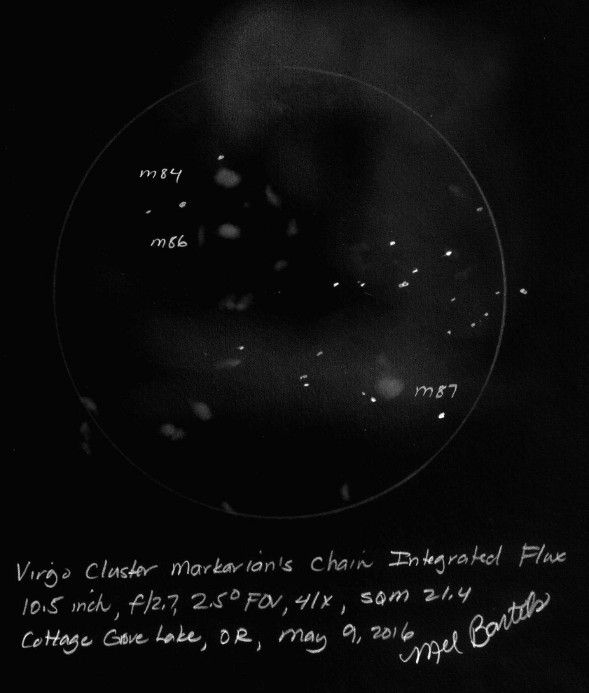



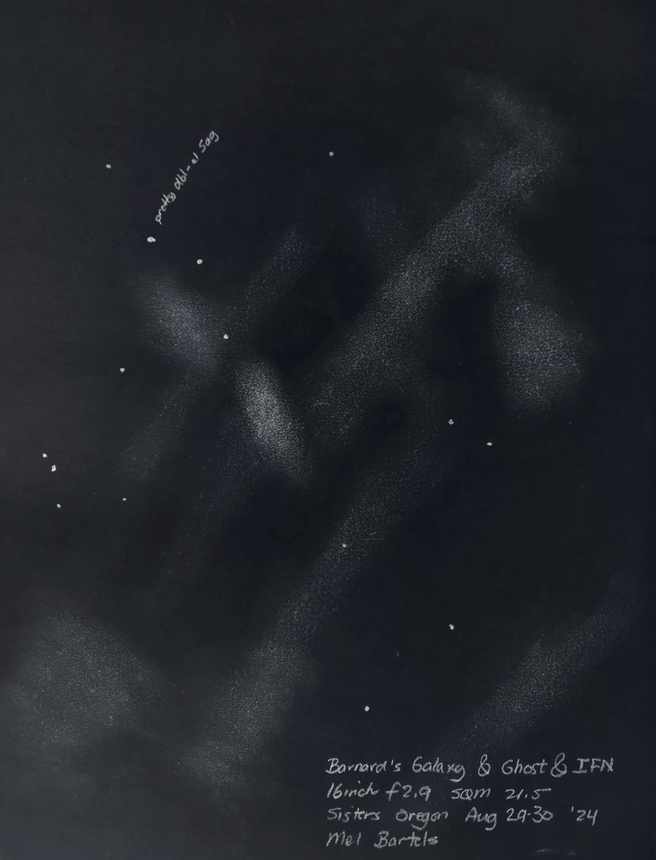

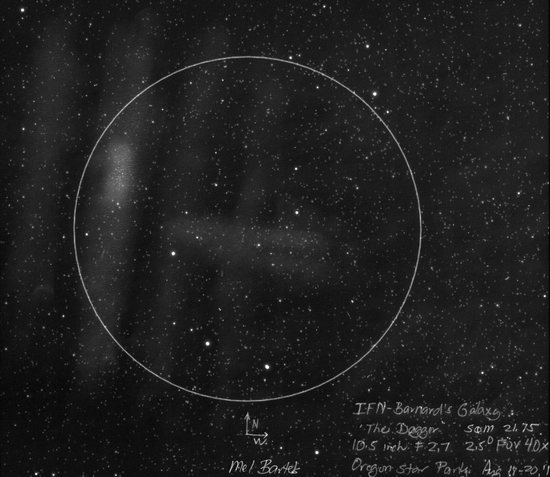


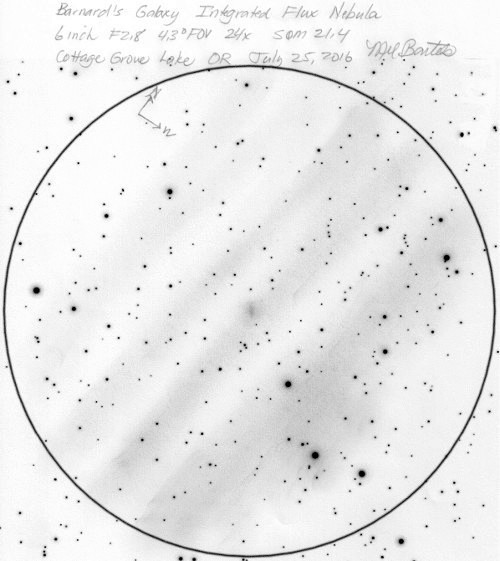
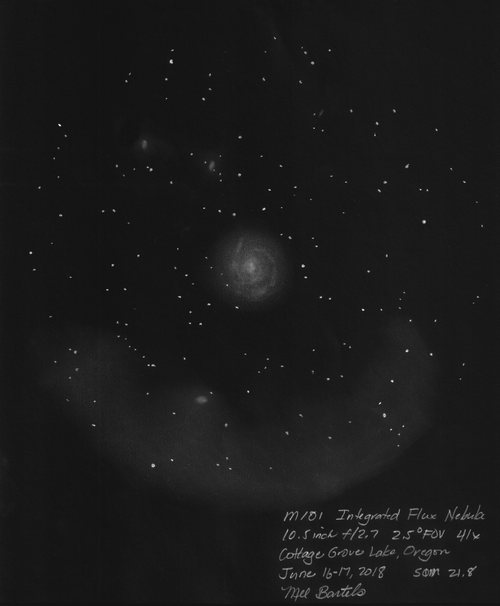


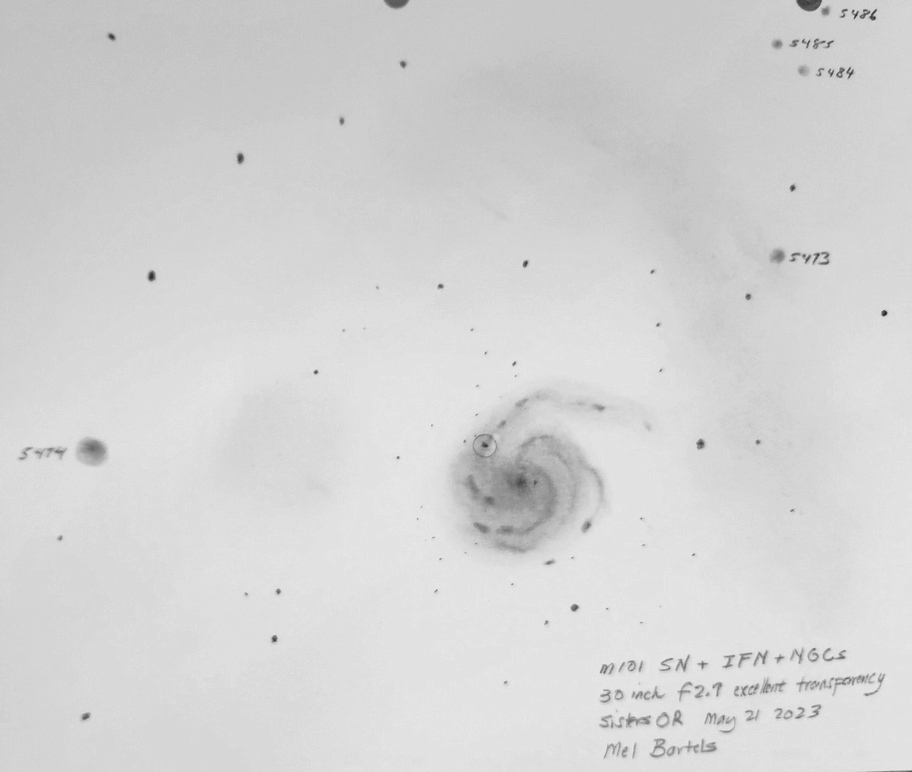
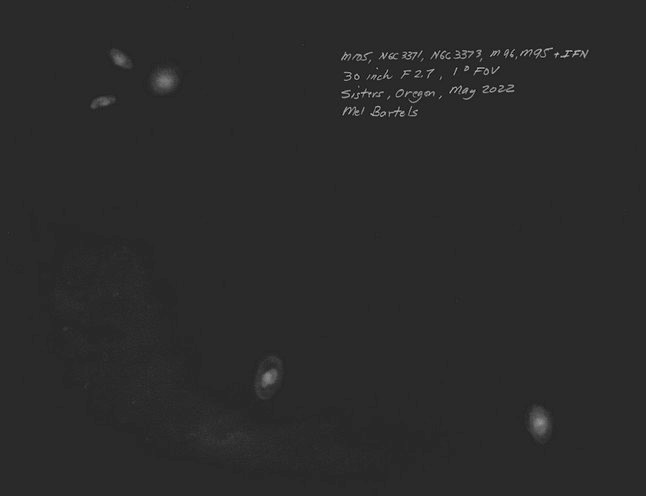


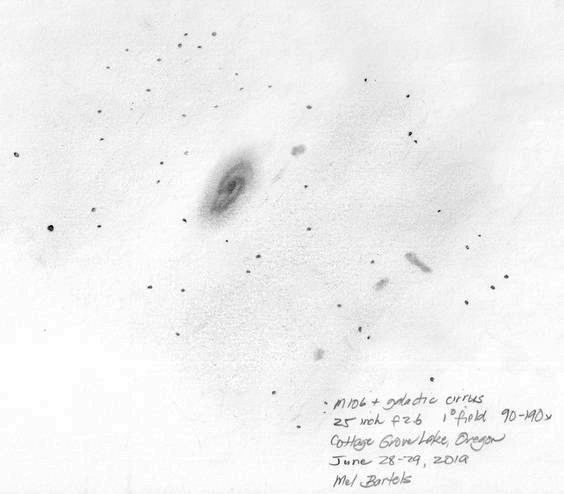
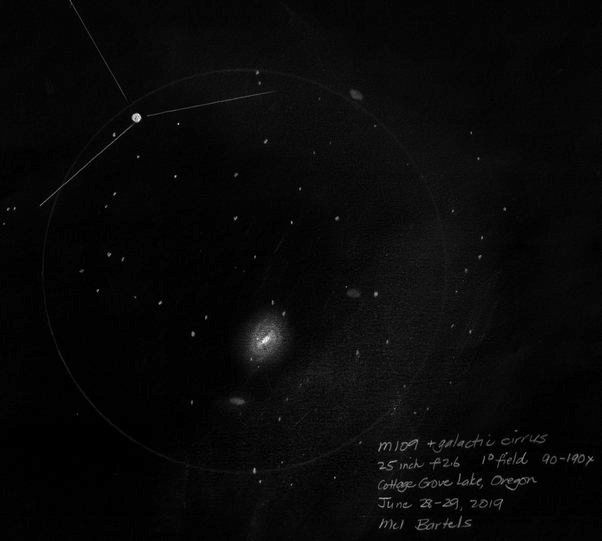

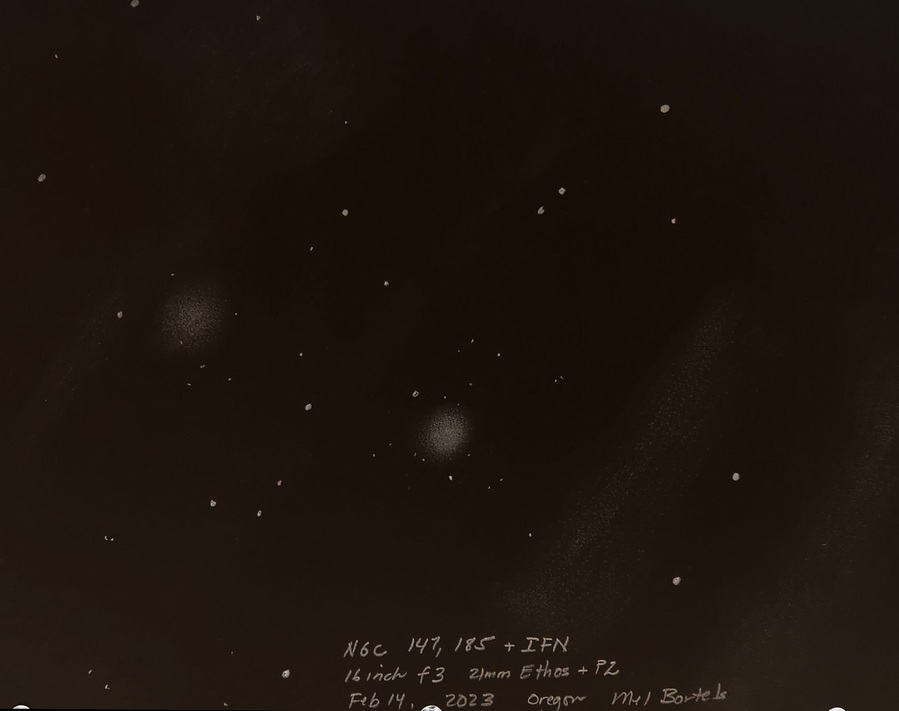

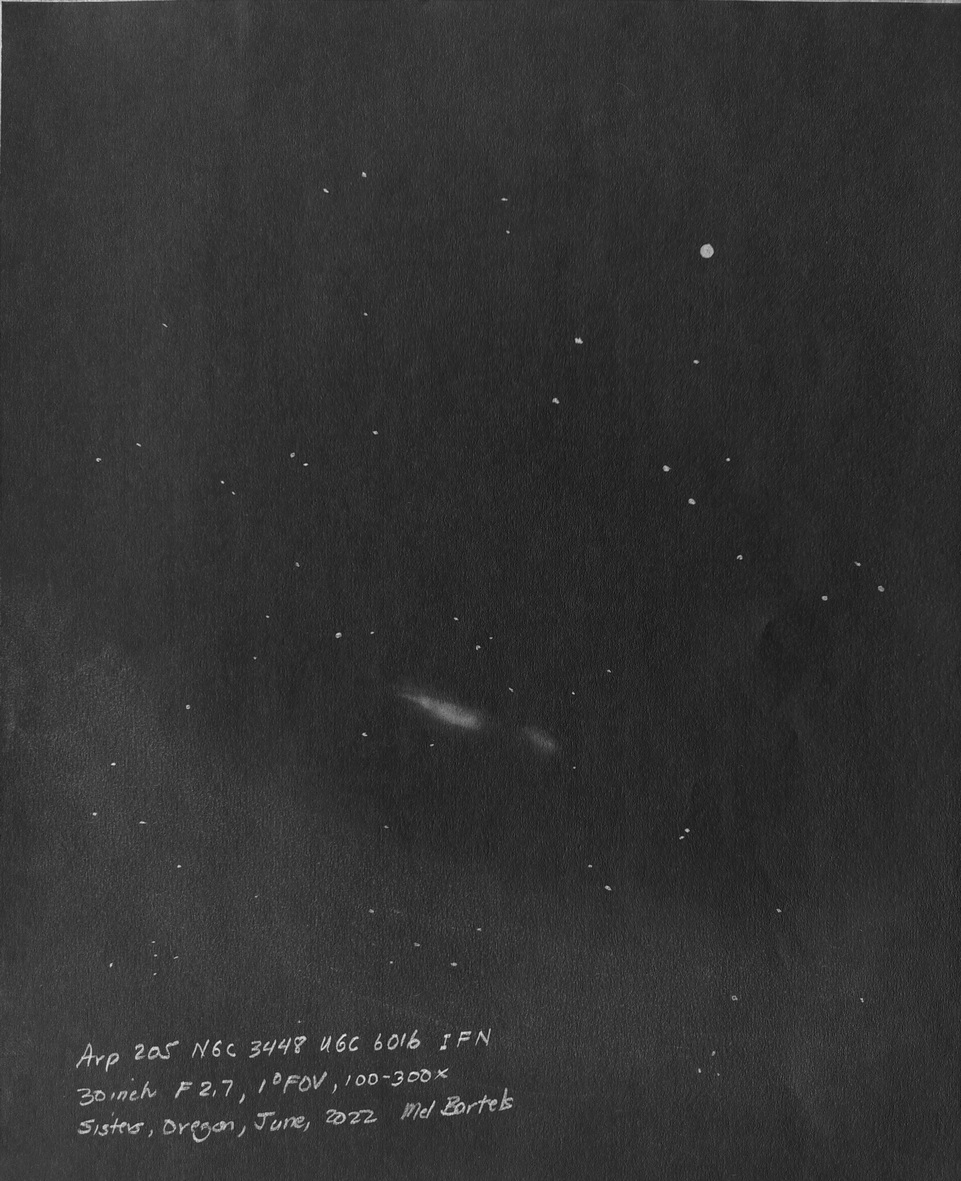



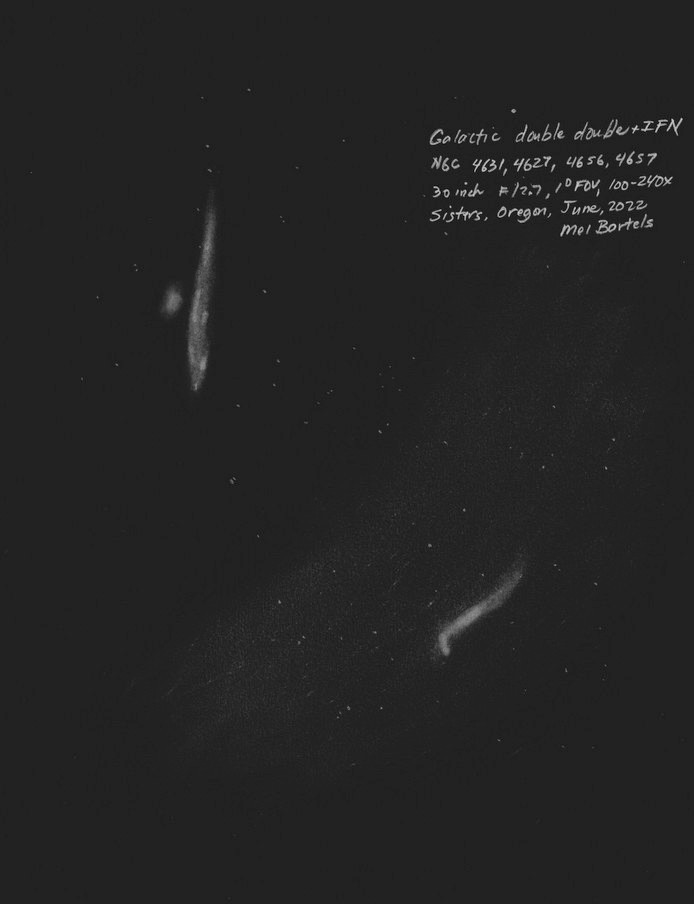



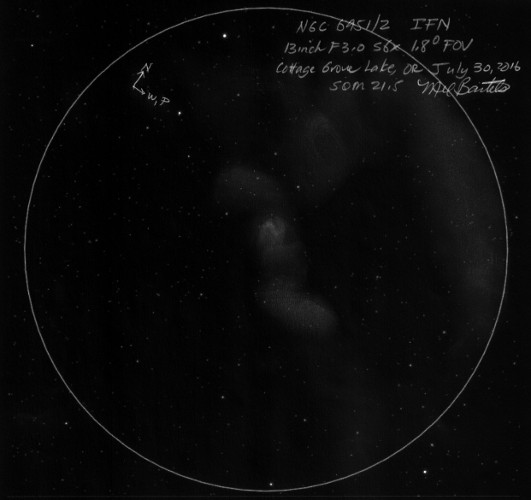



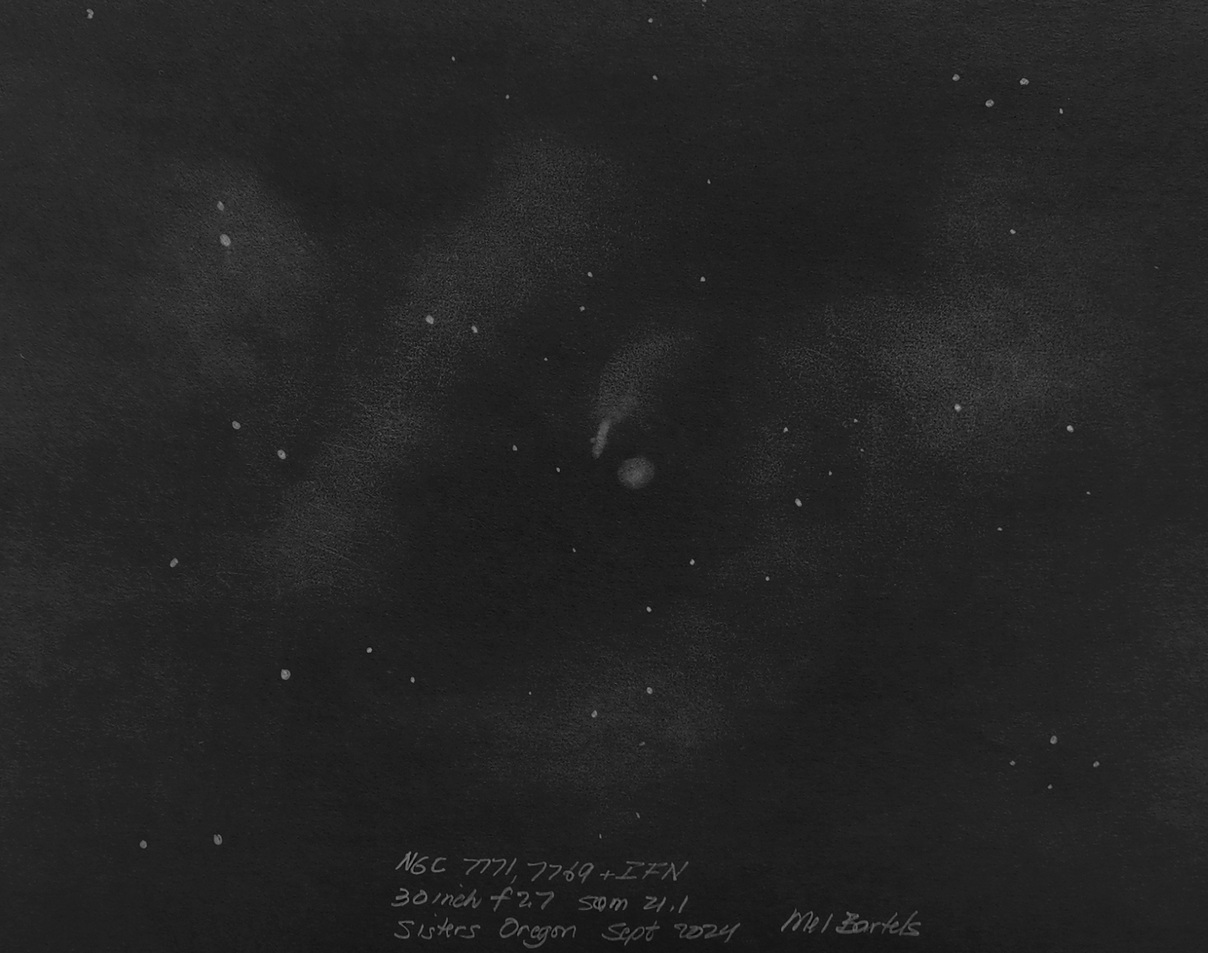

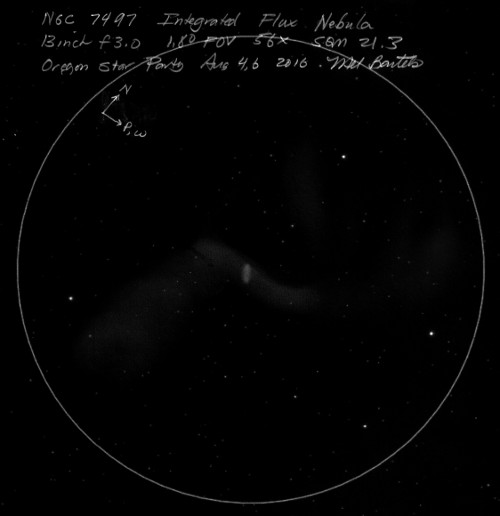

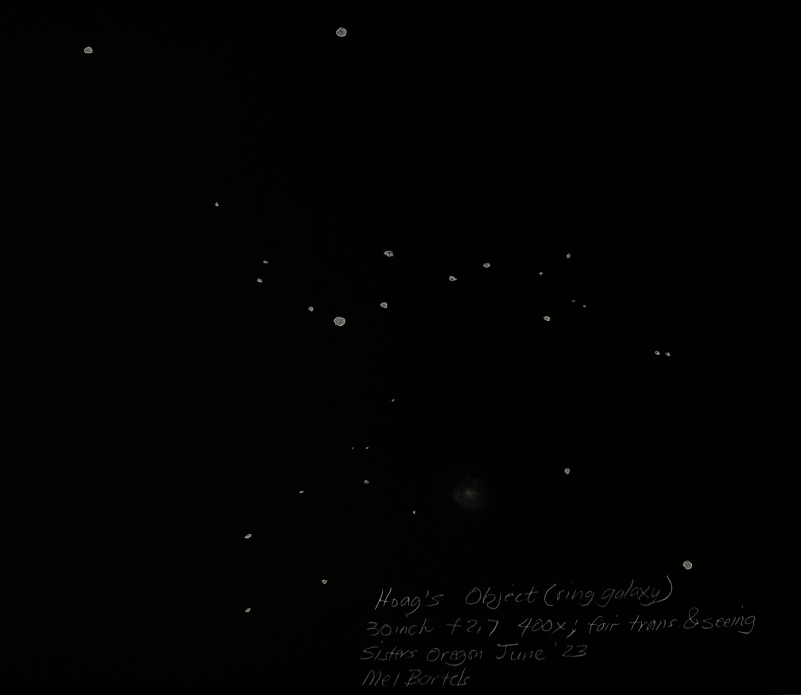


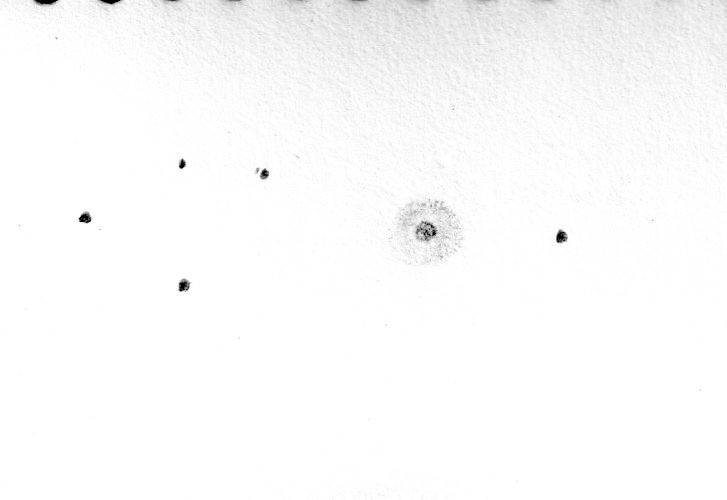

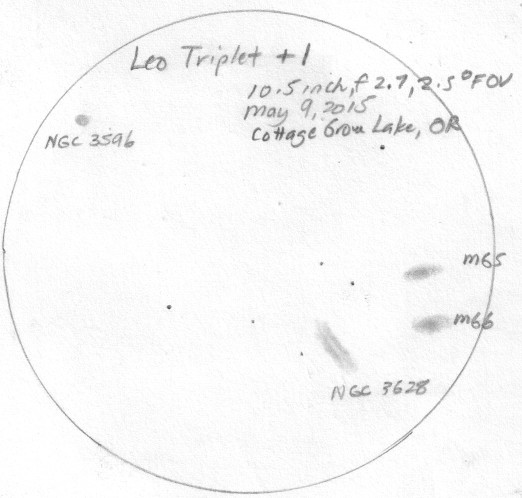
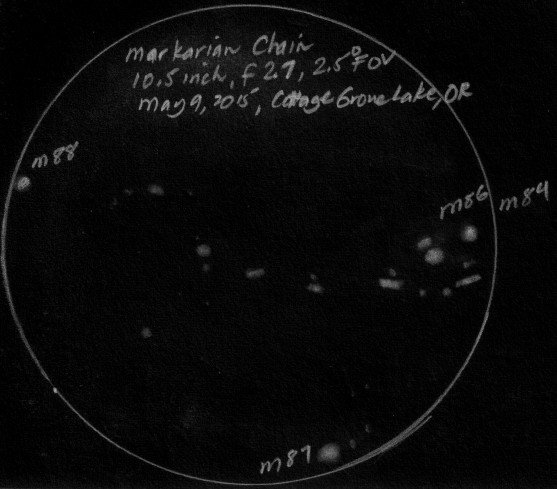

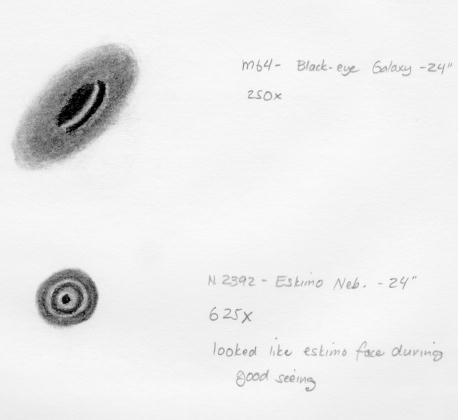
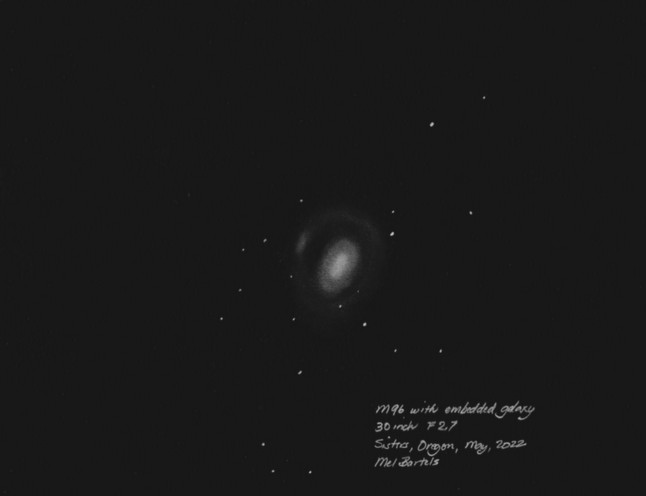

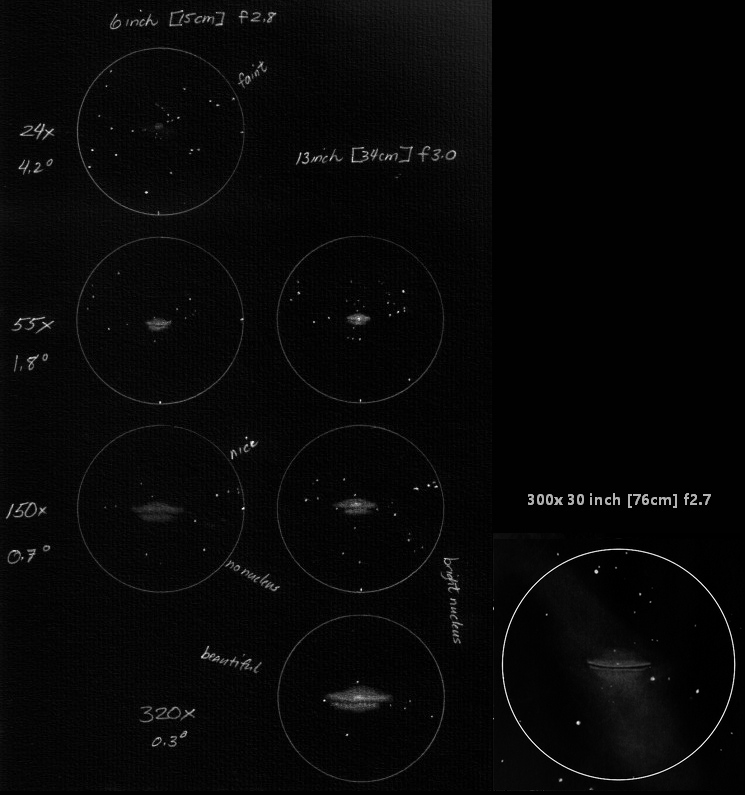

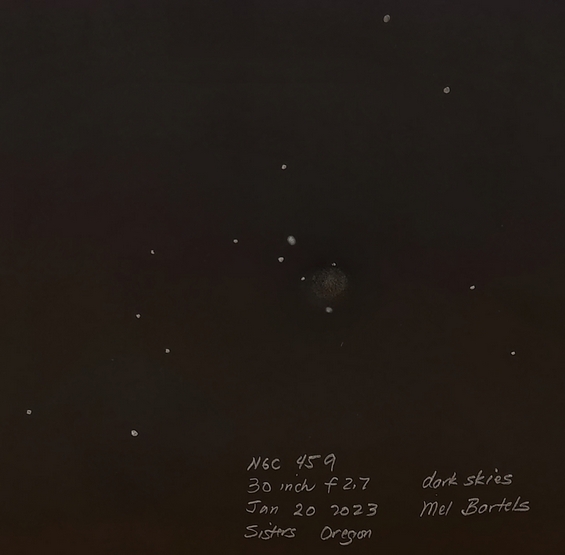

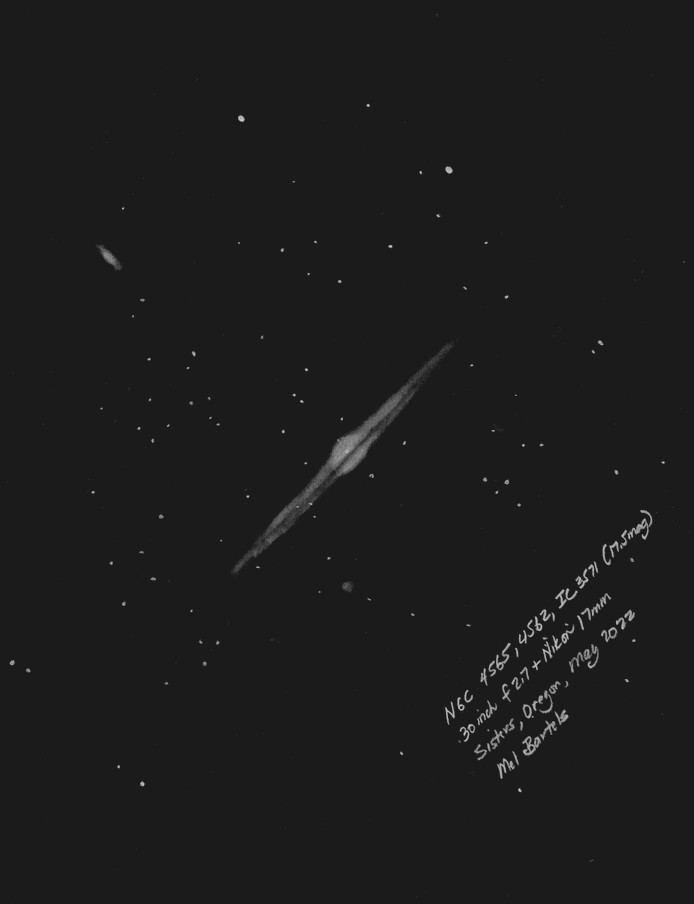

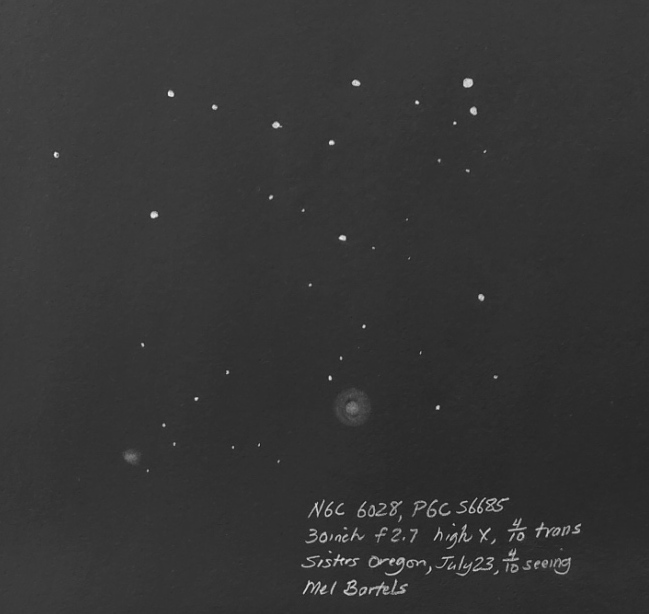

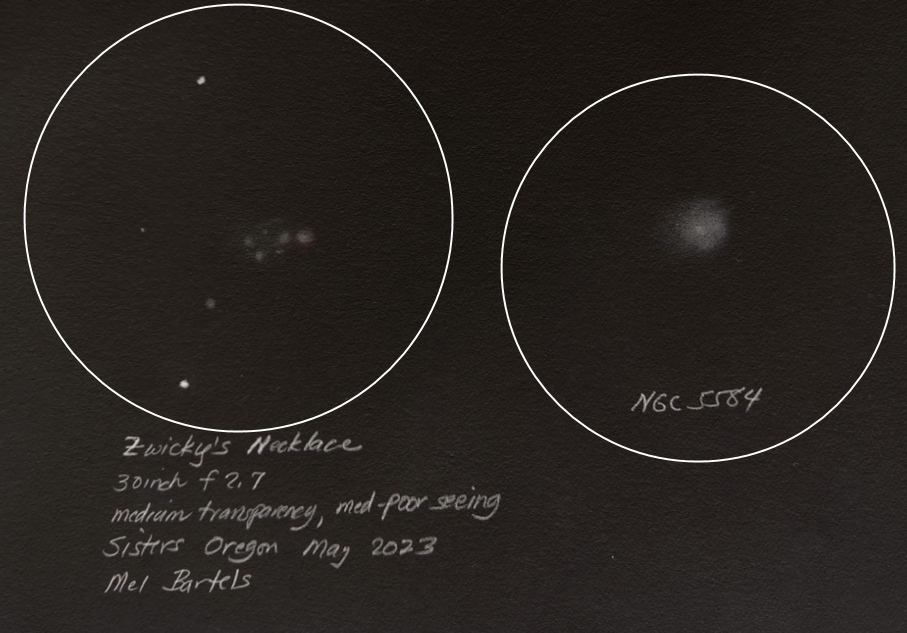


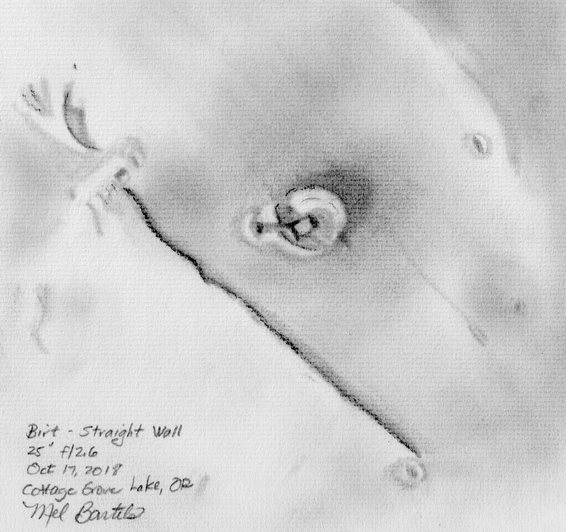

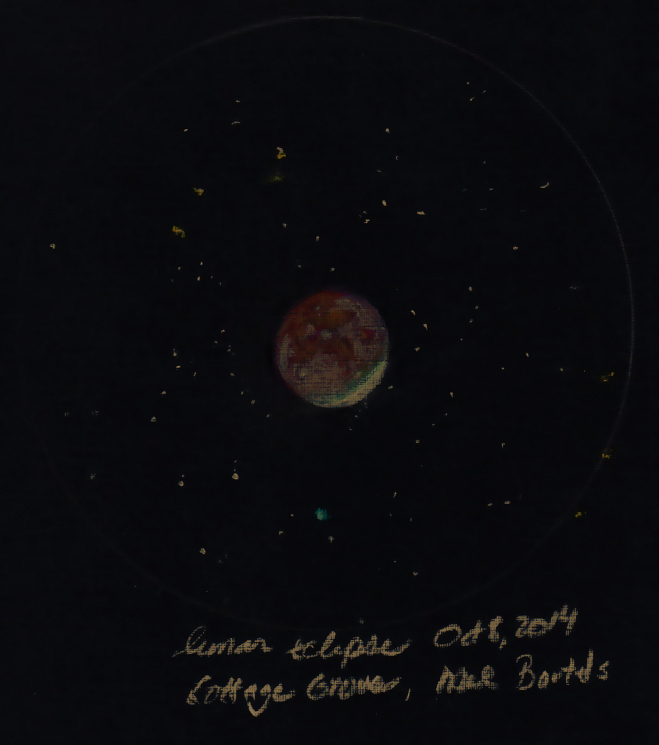
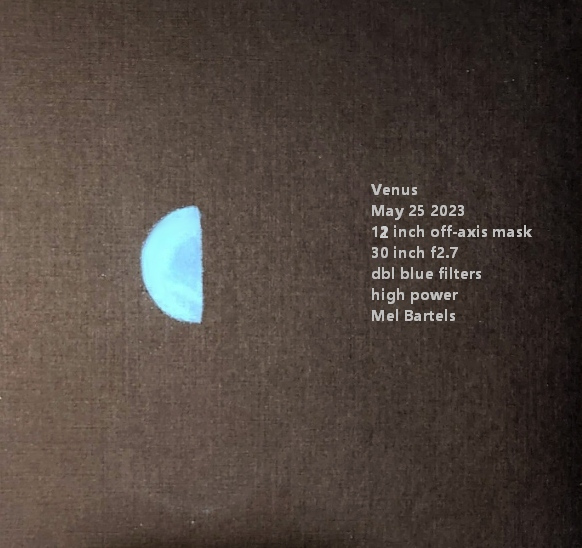
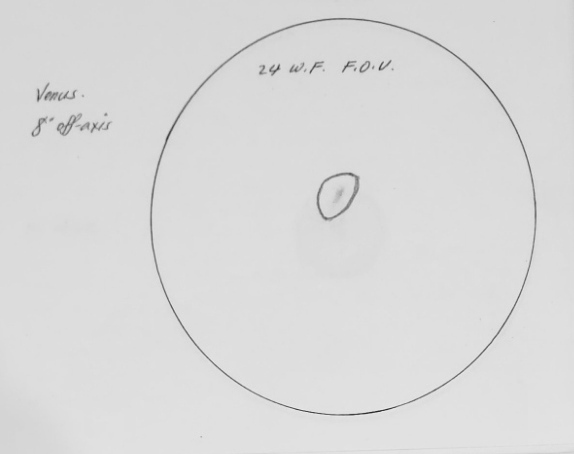
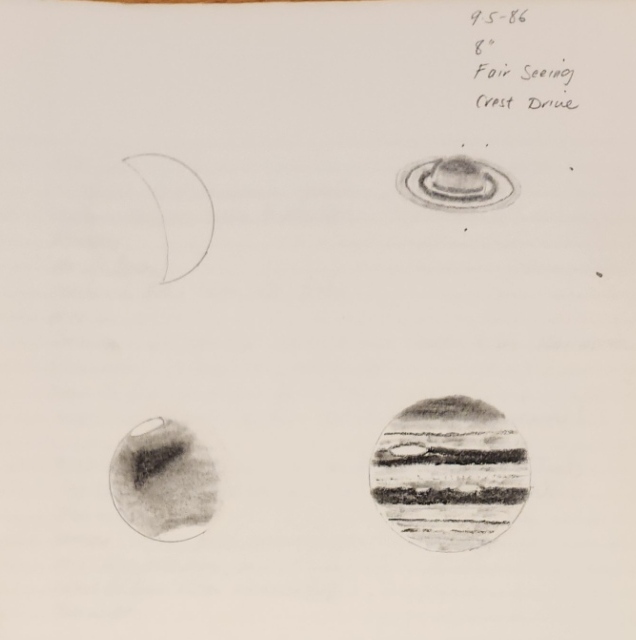


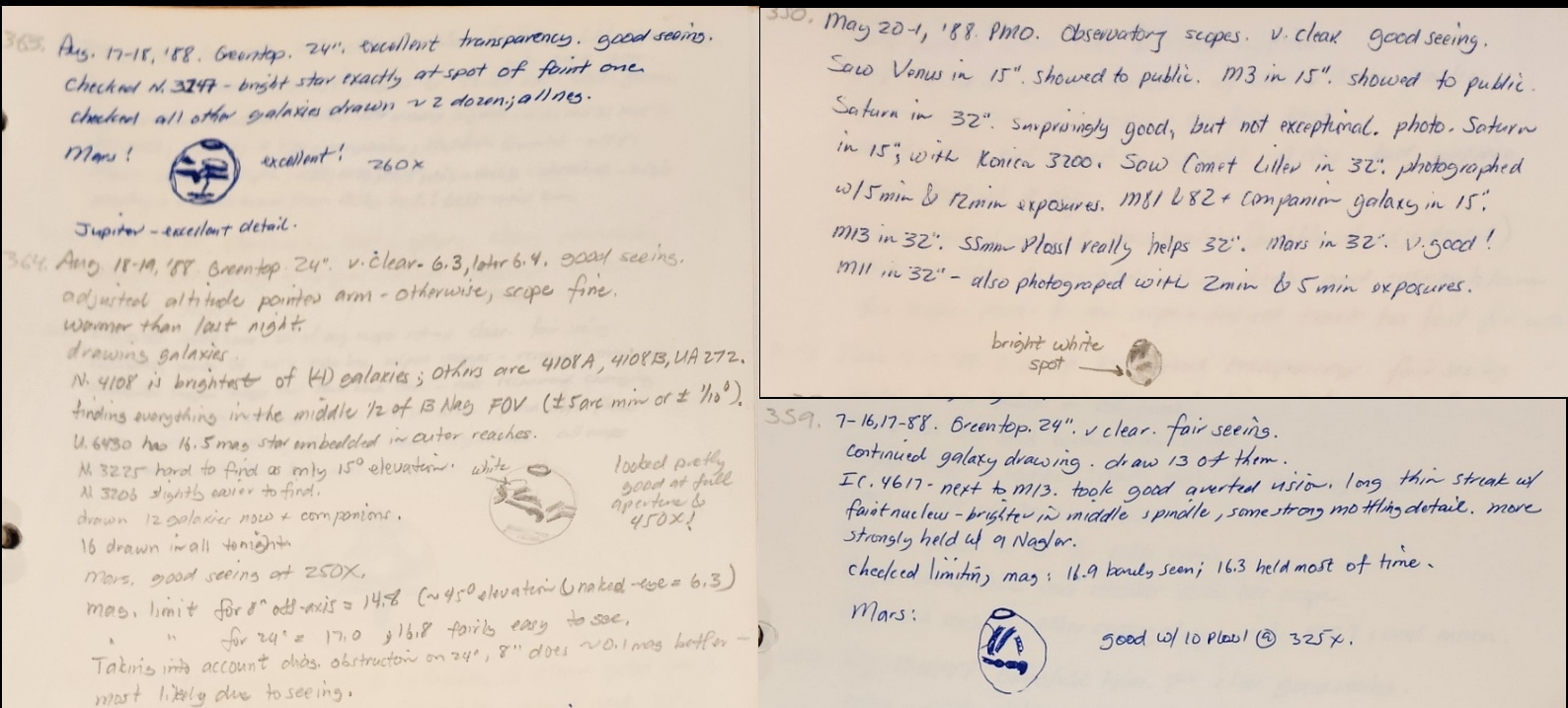



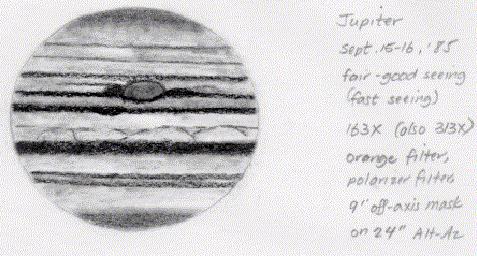




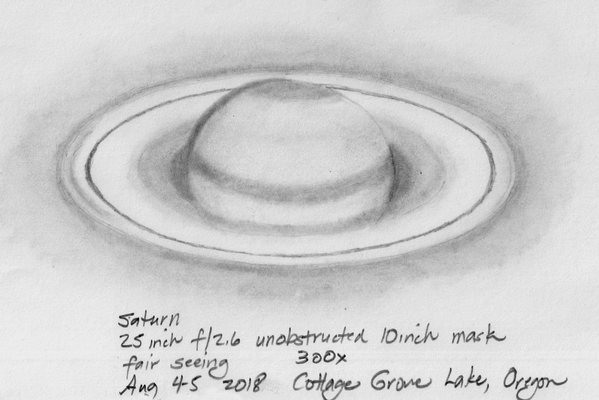
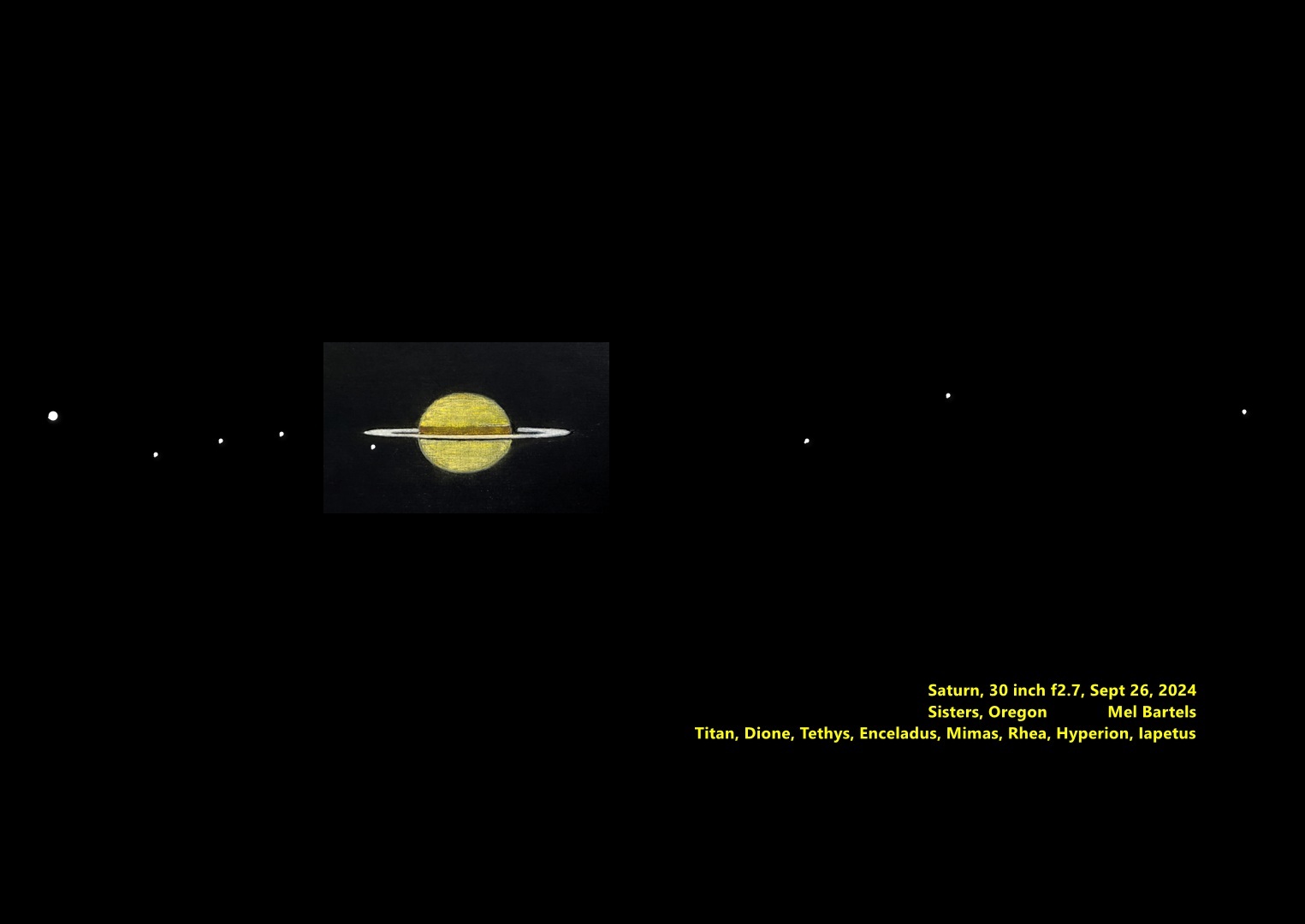


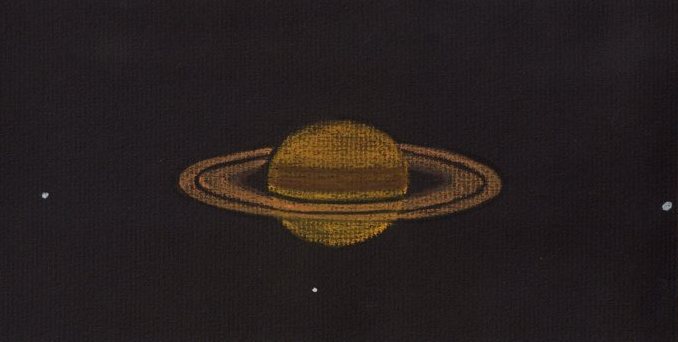
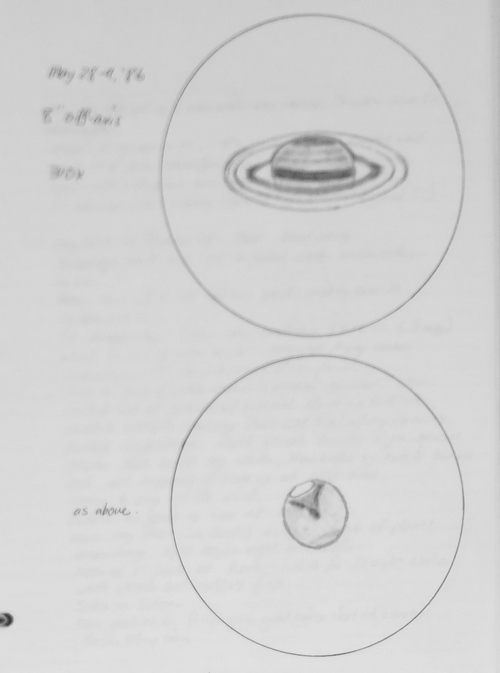
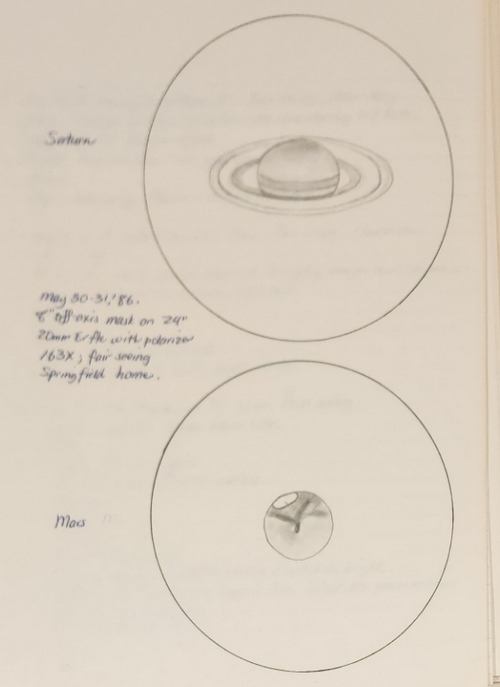
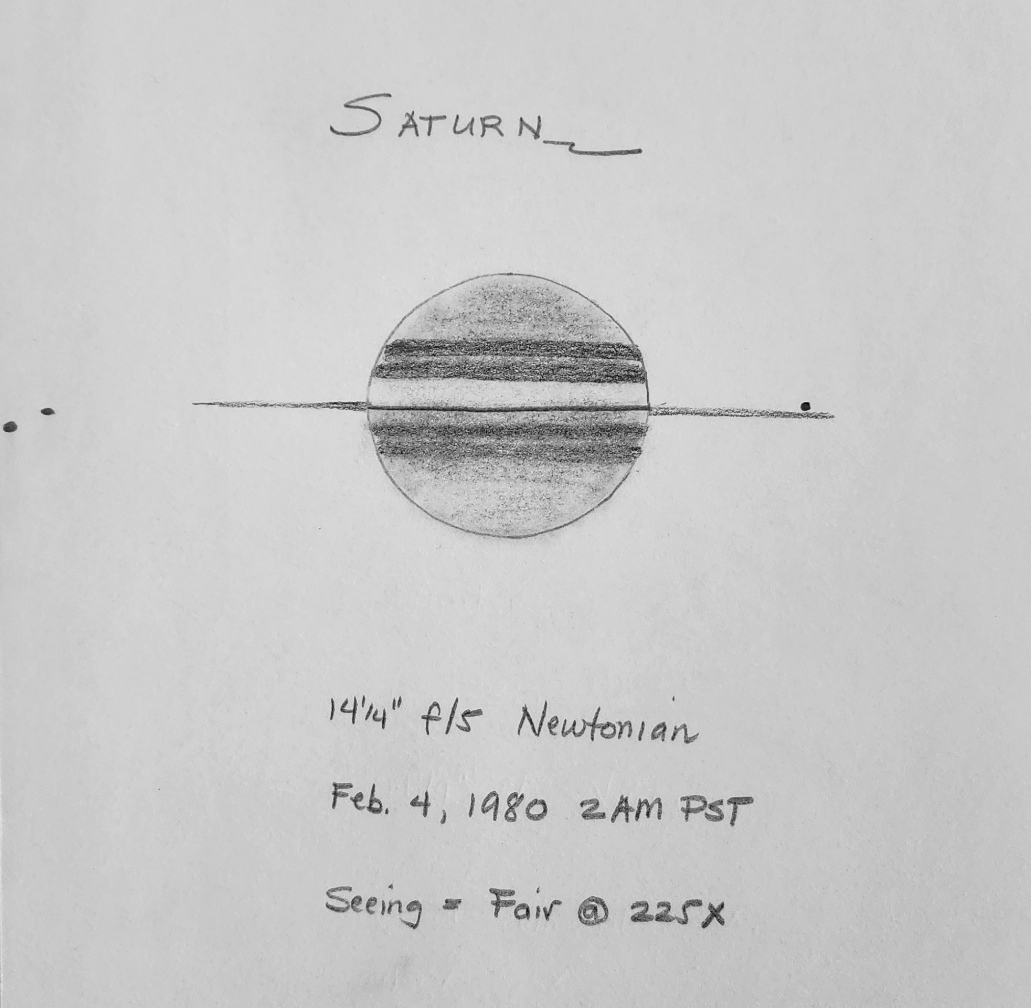
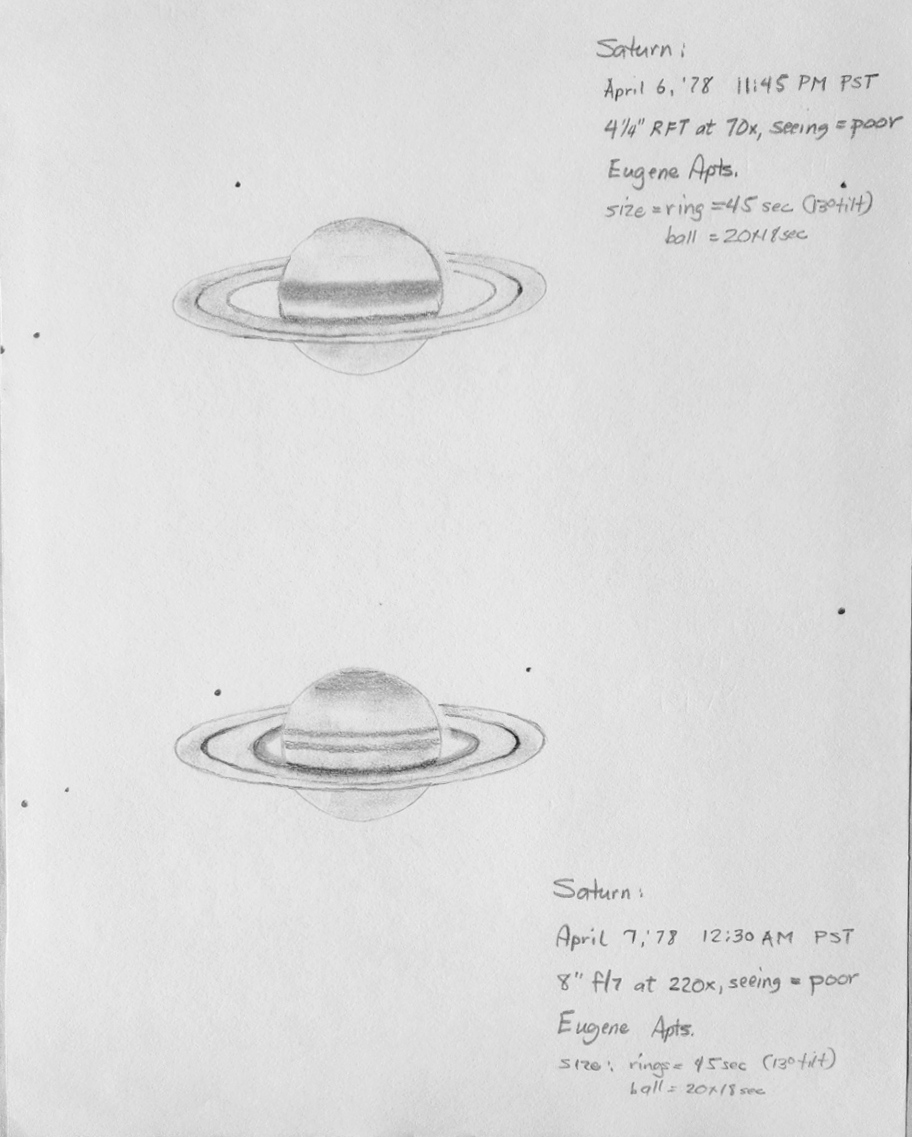
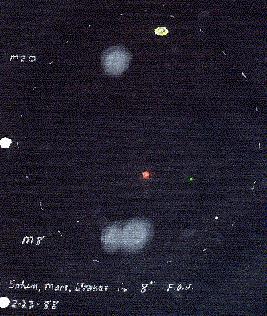
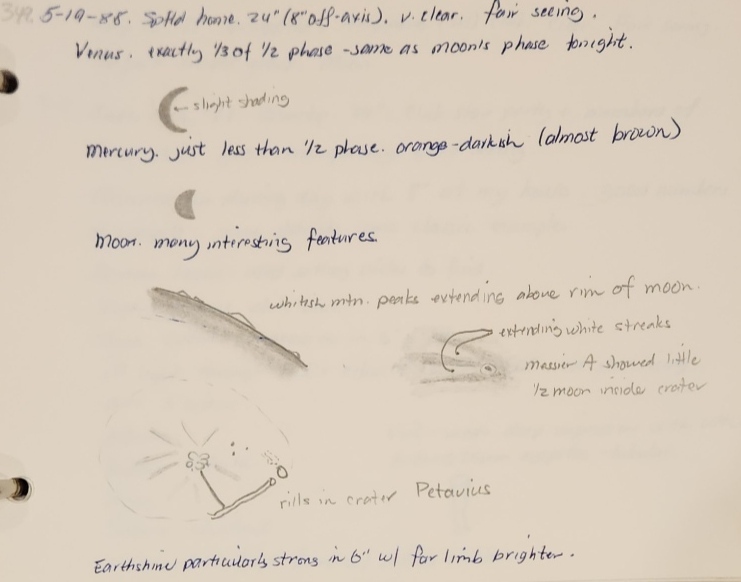



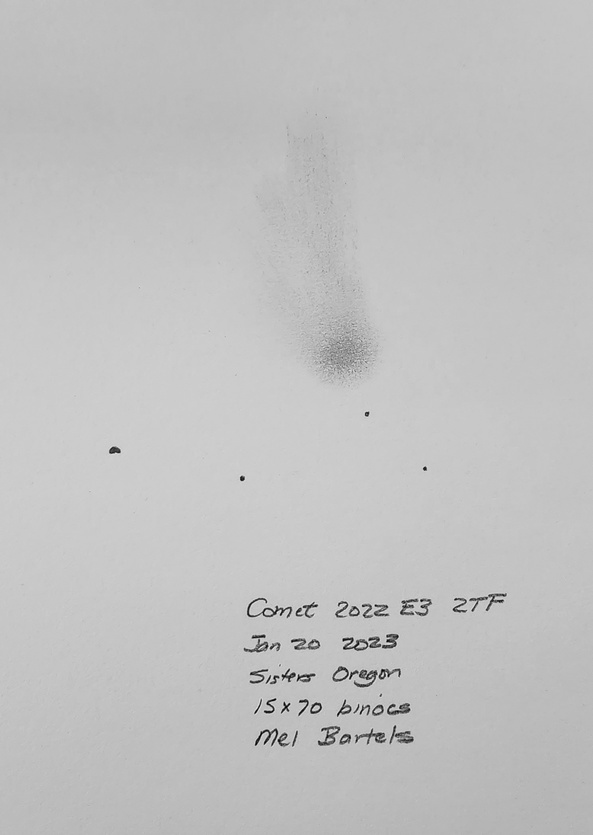
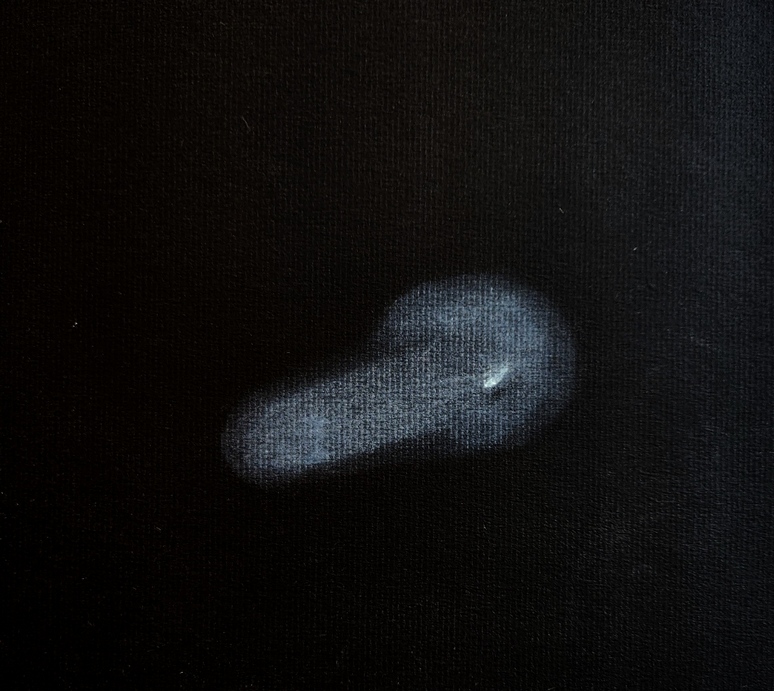



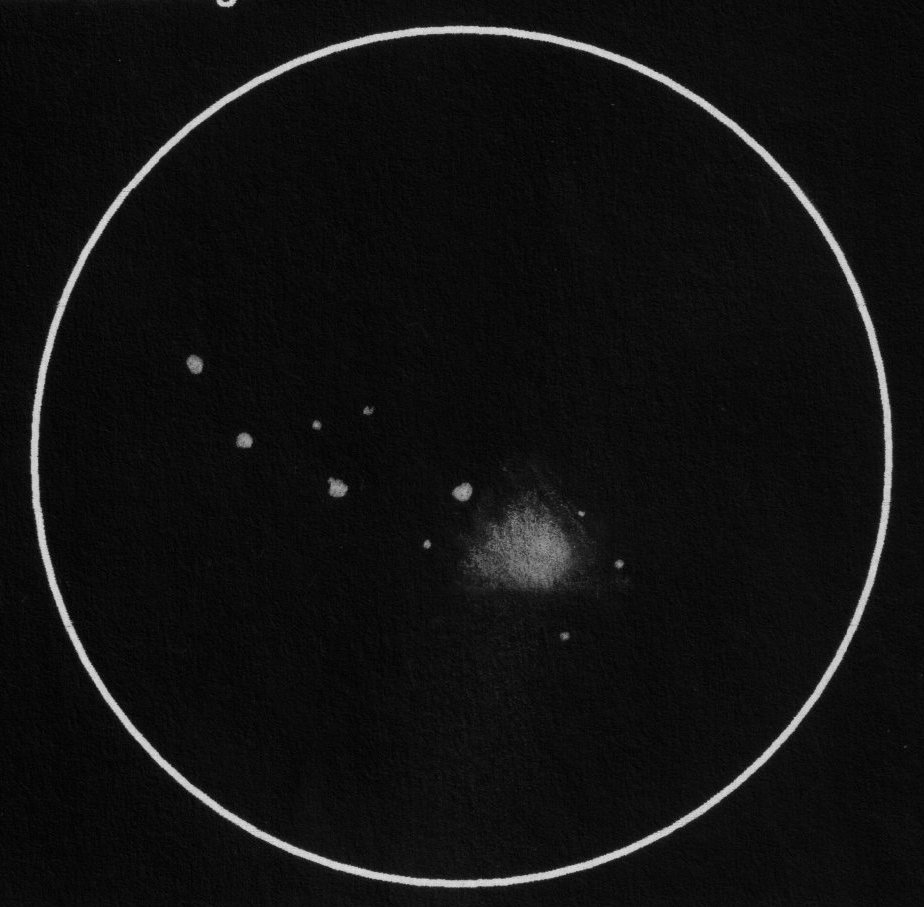



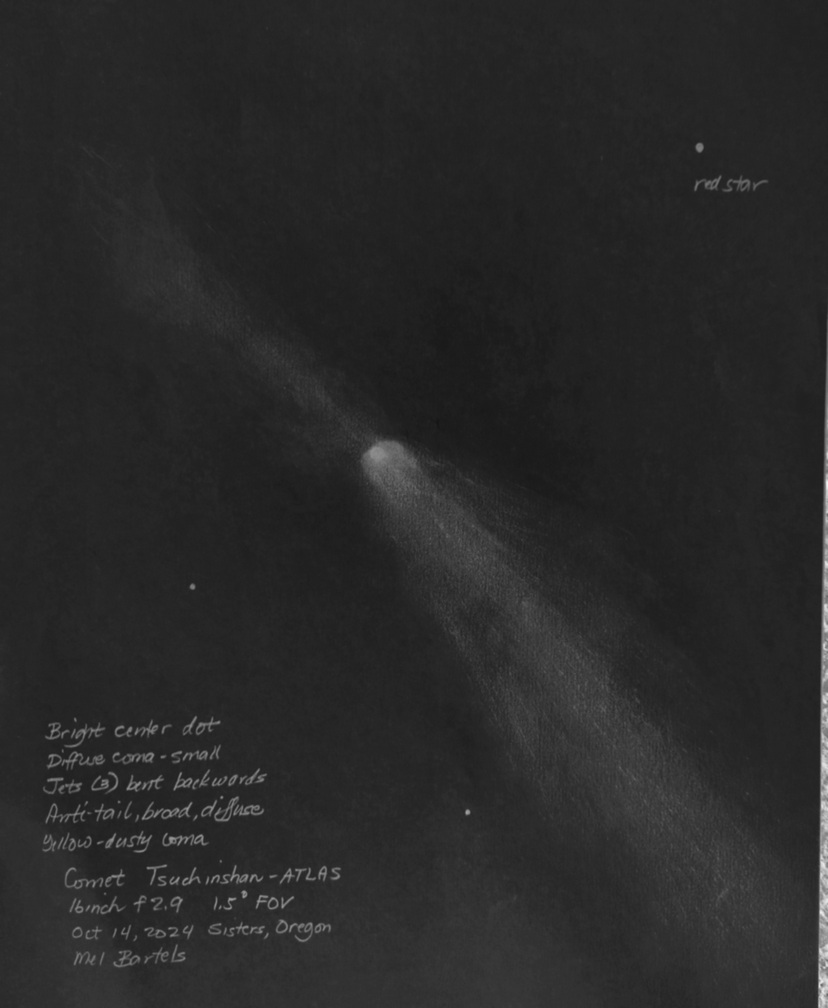

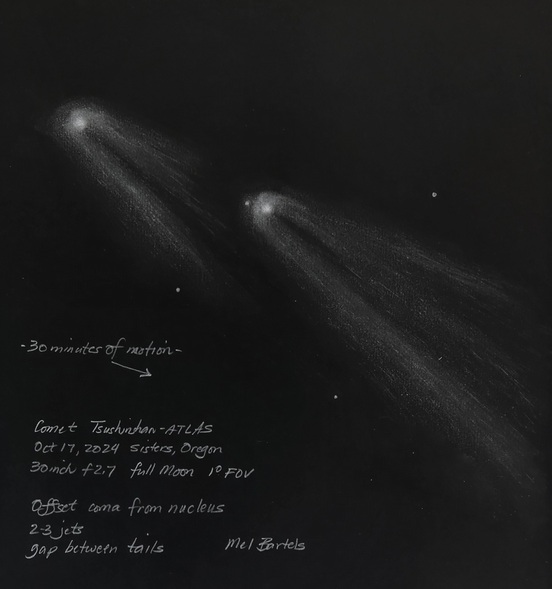

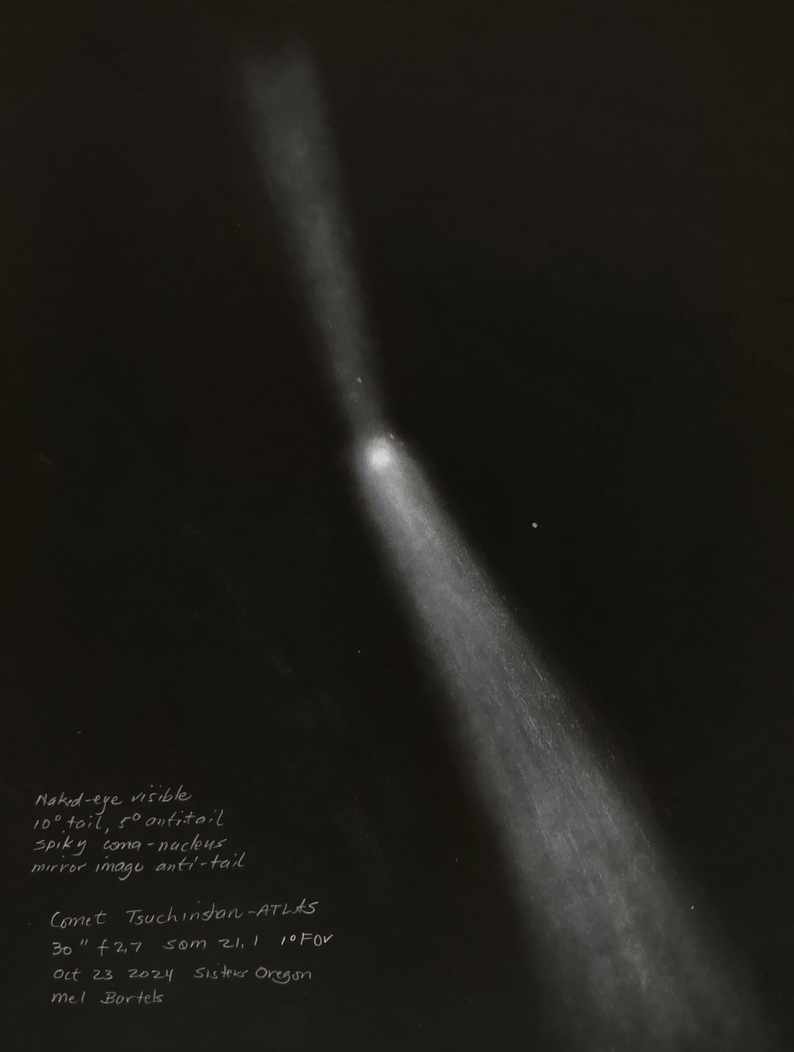

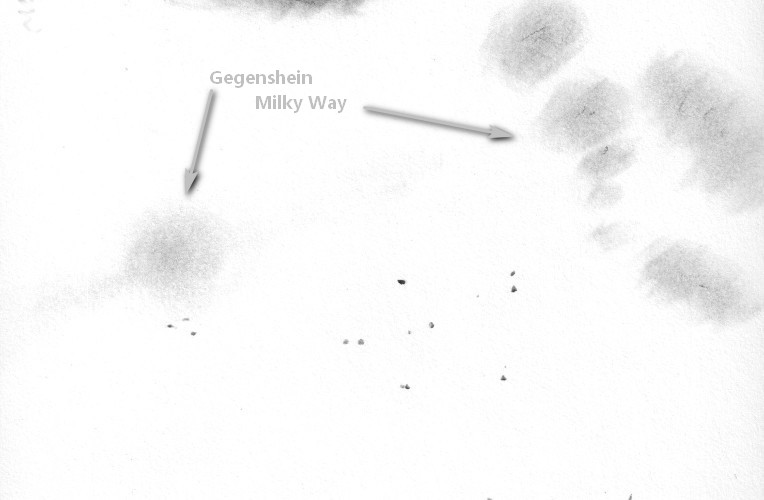

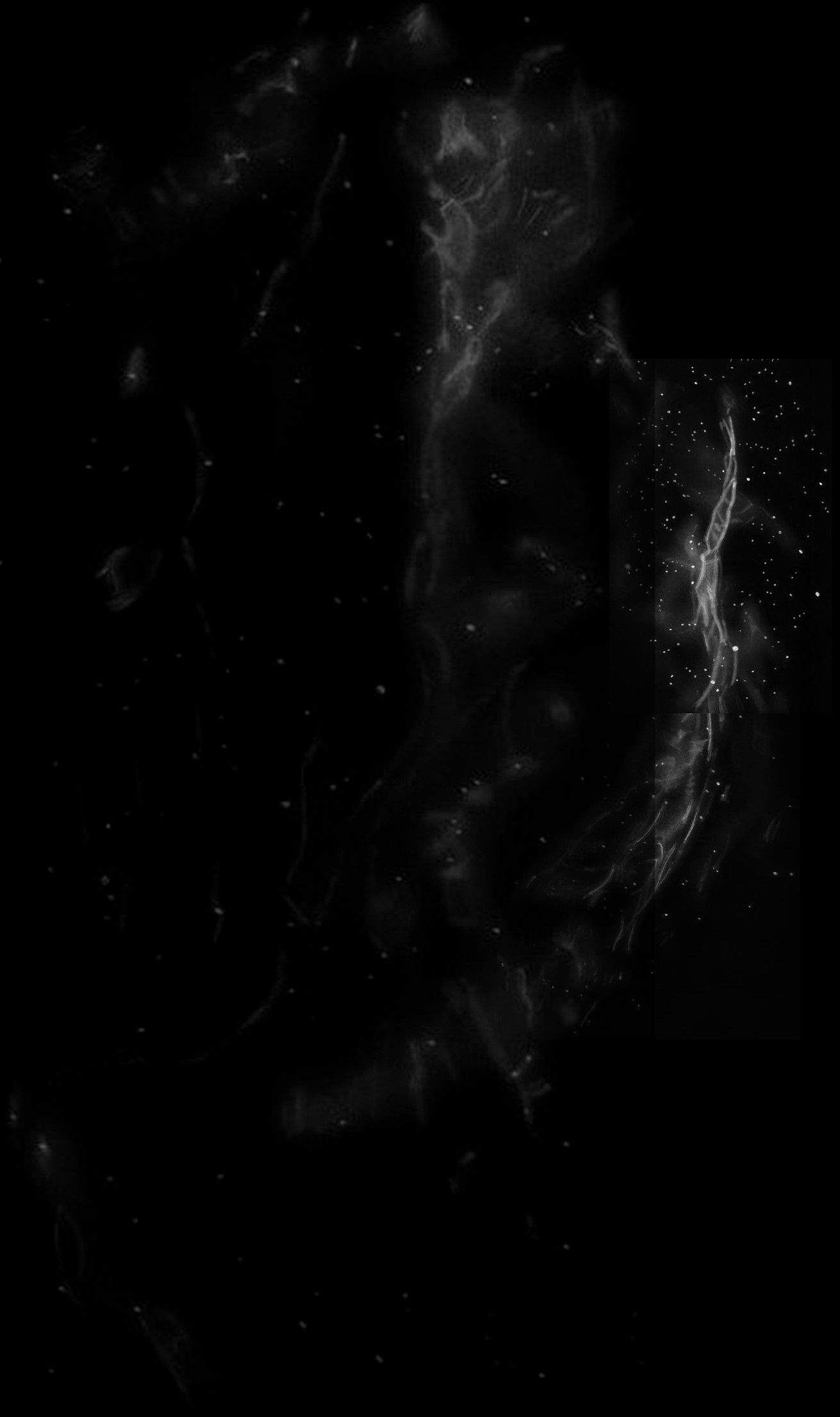

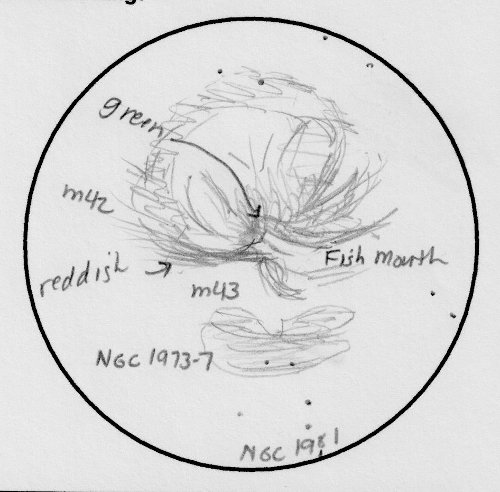


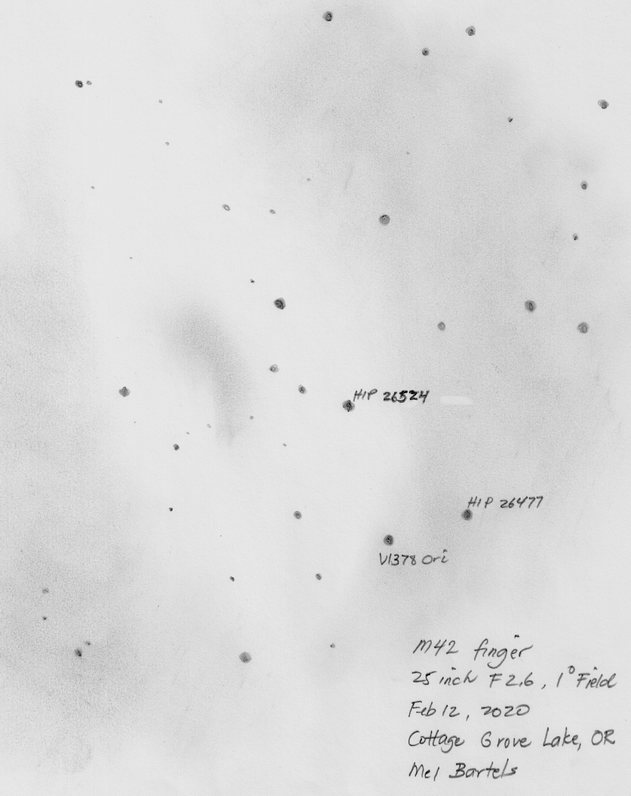
.jpg)
.jpg)
